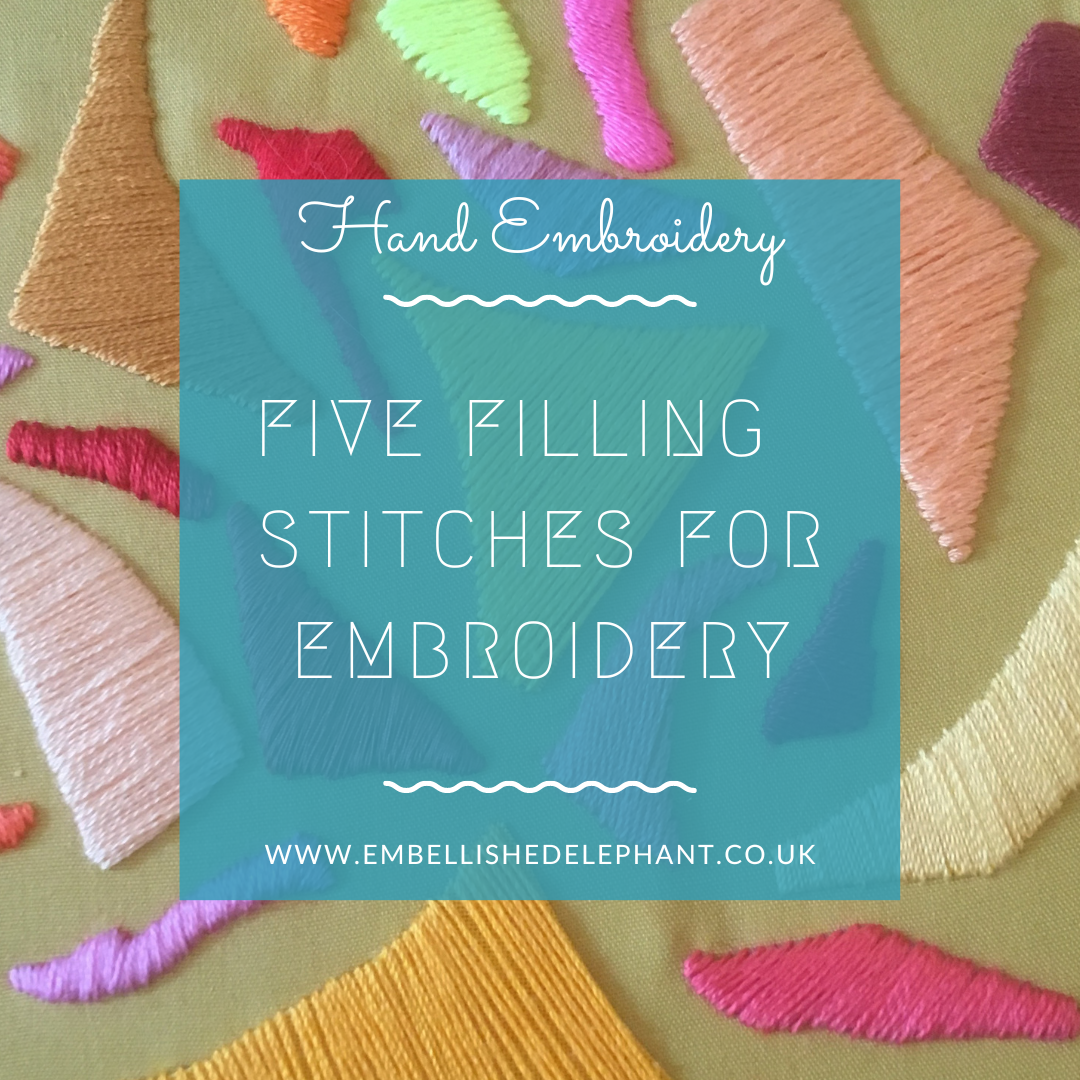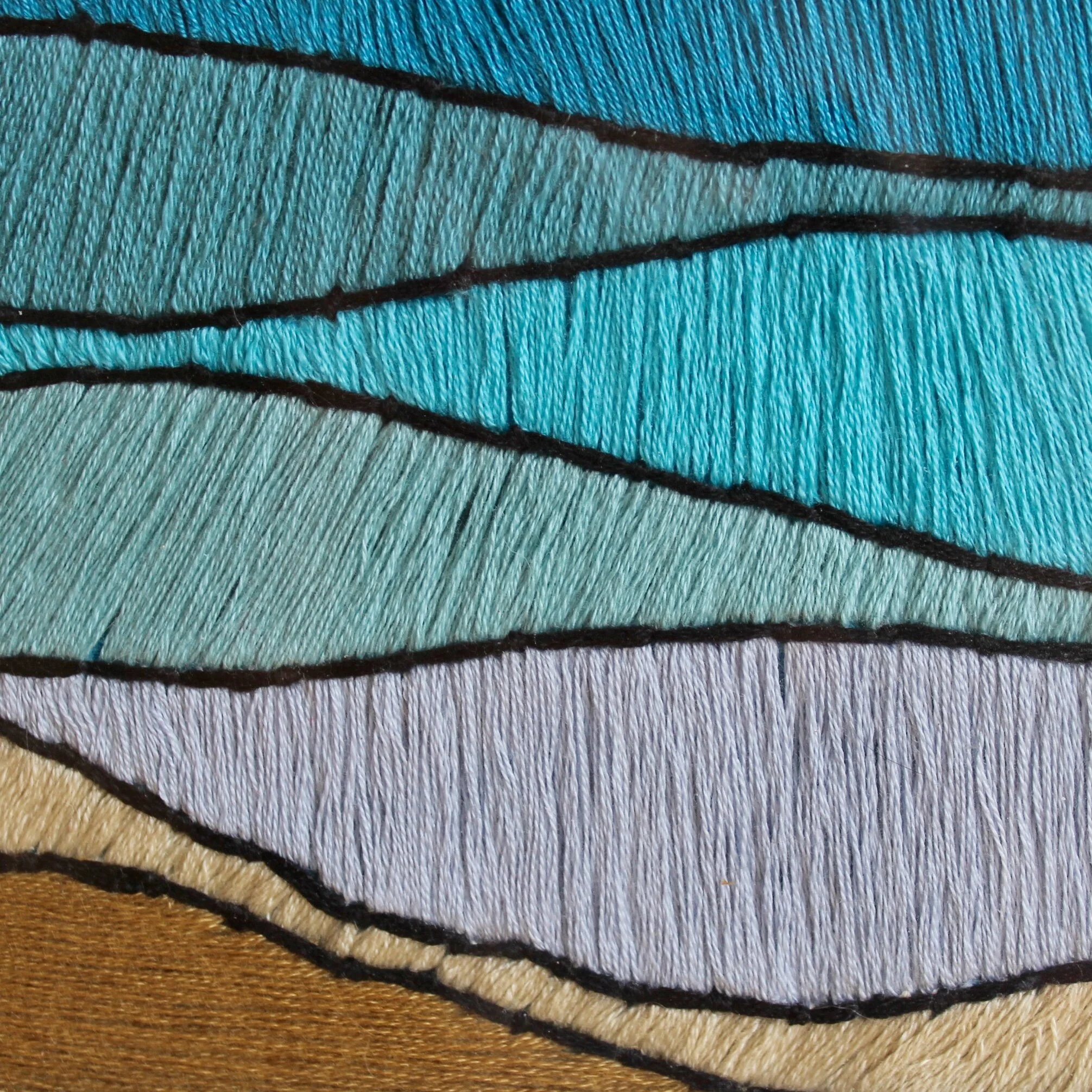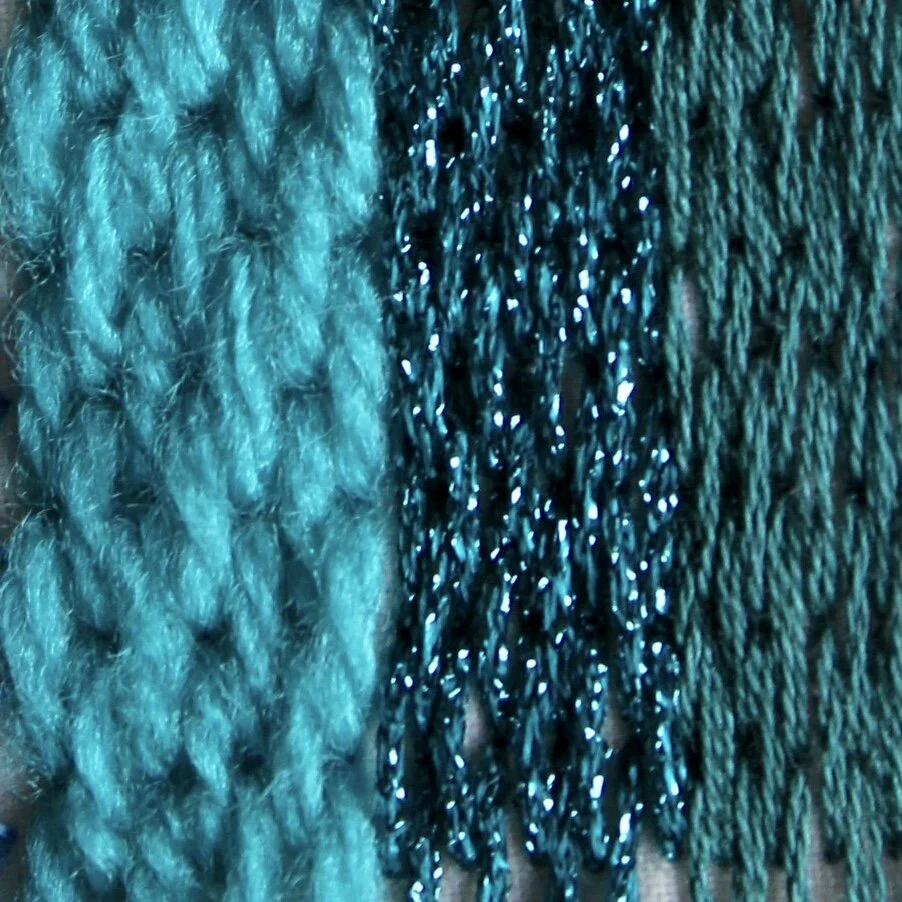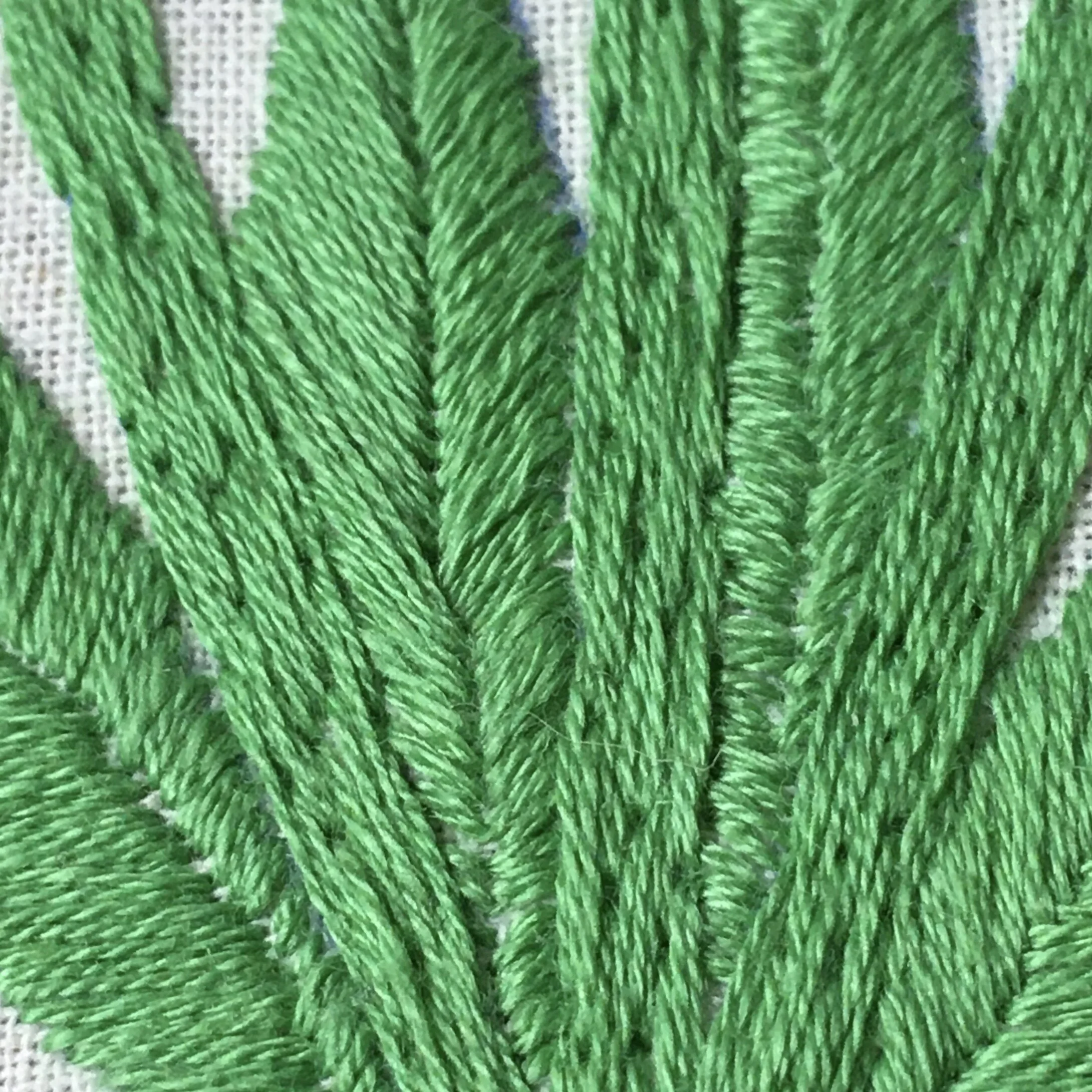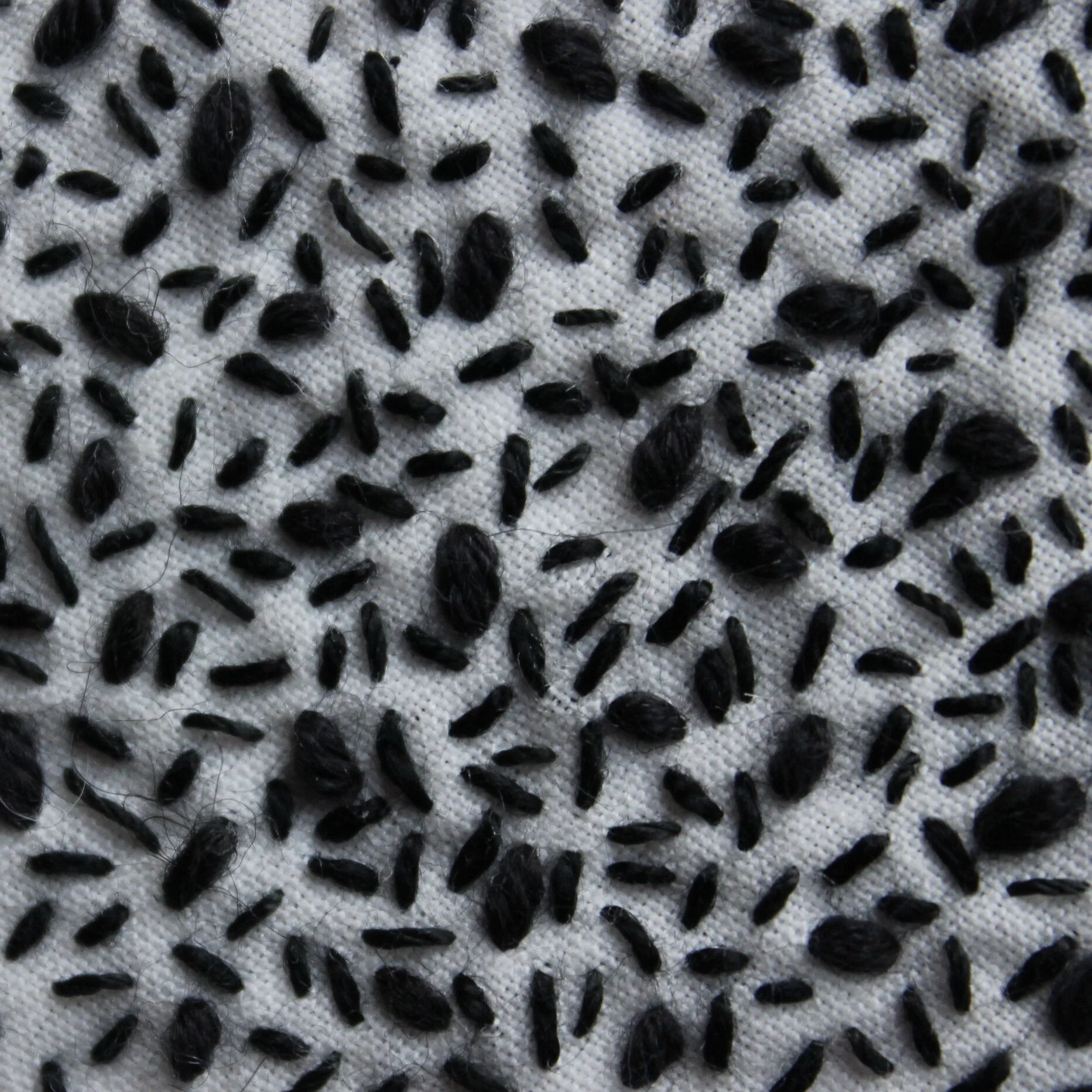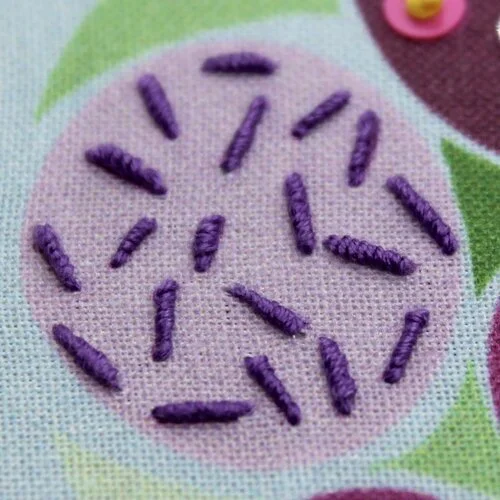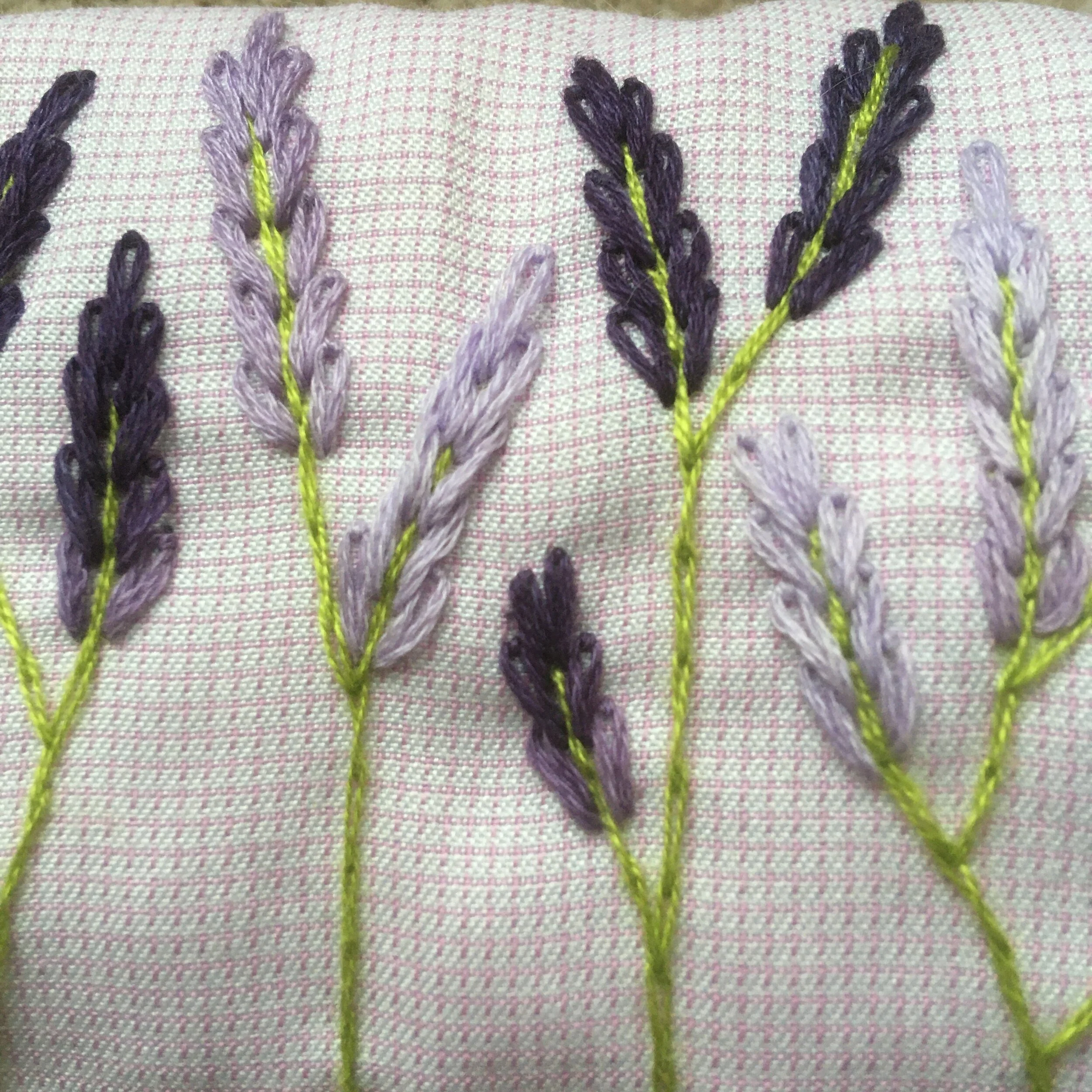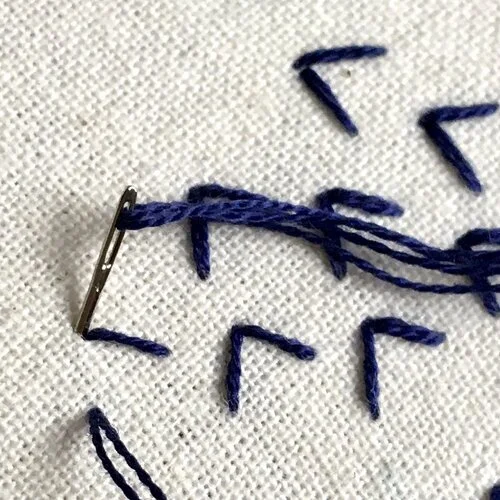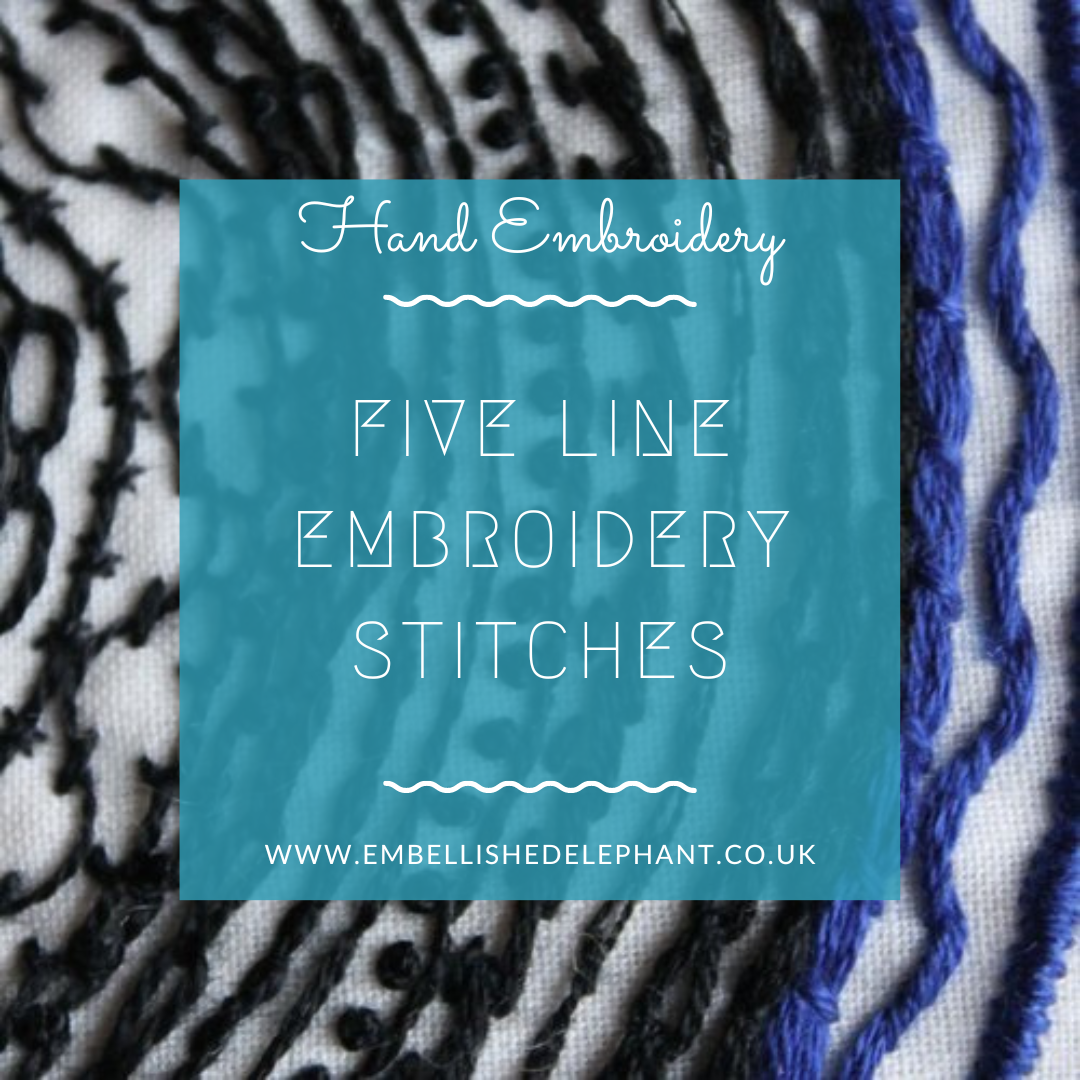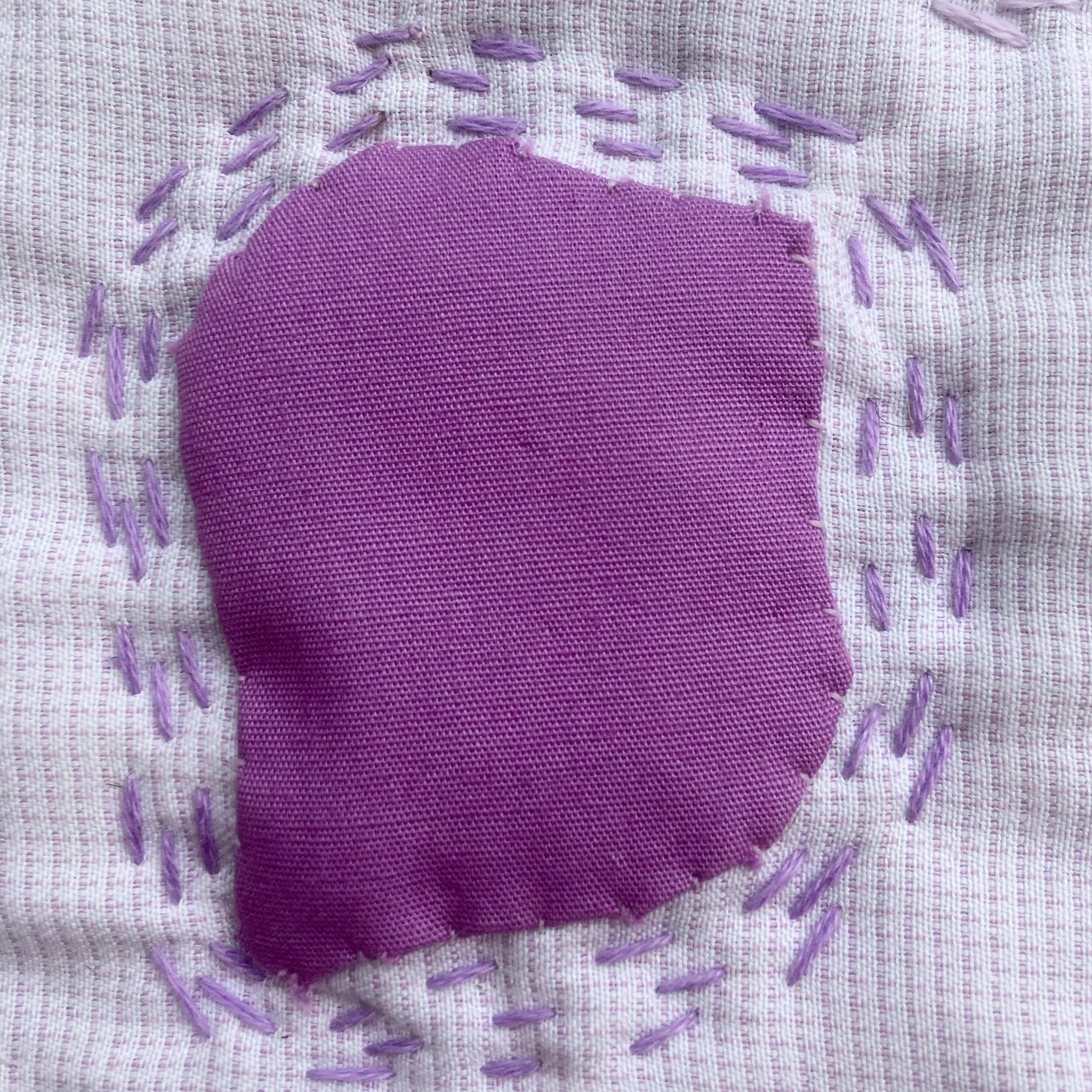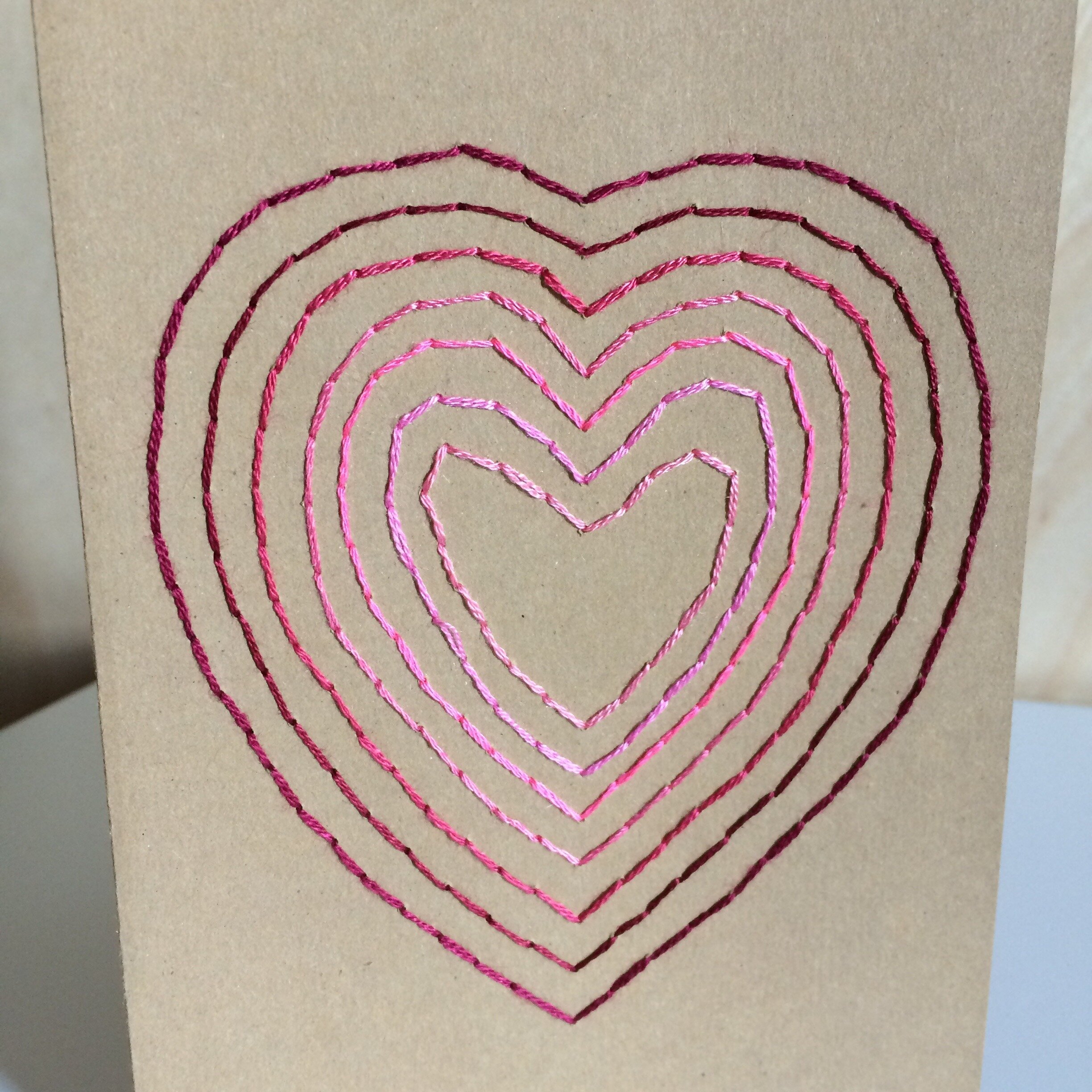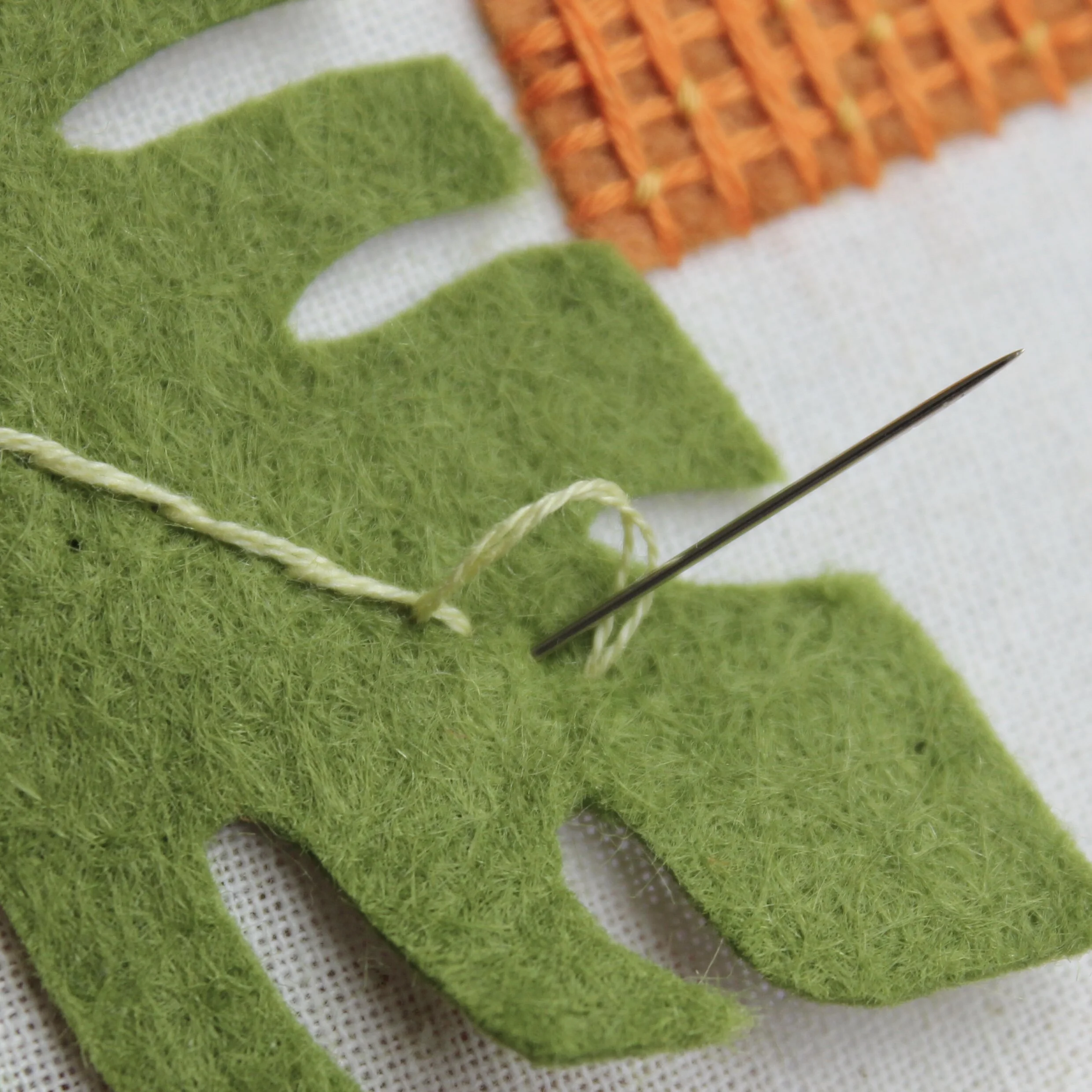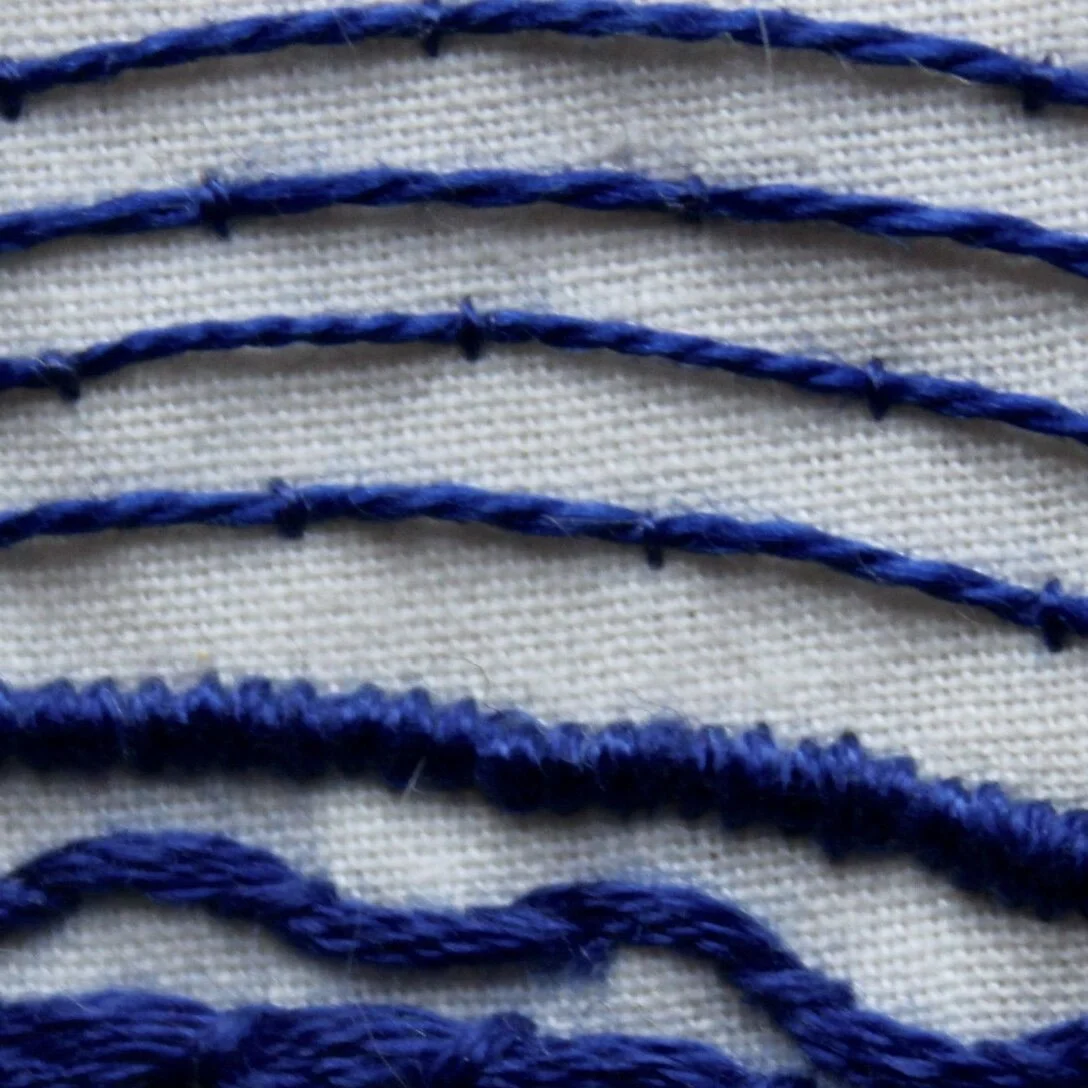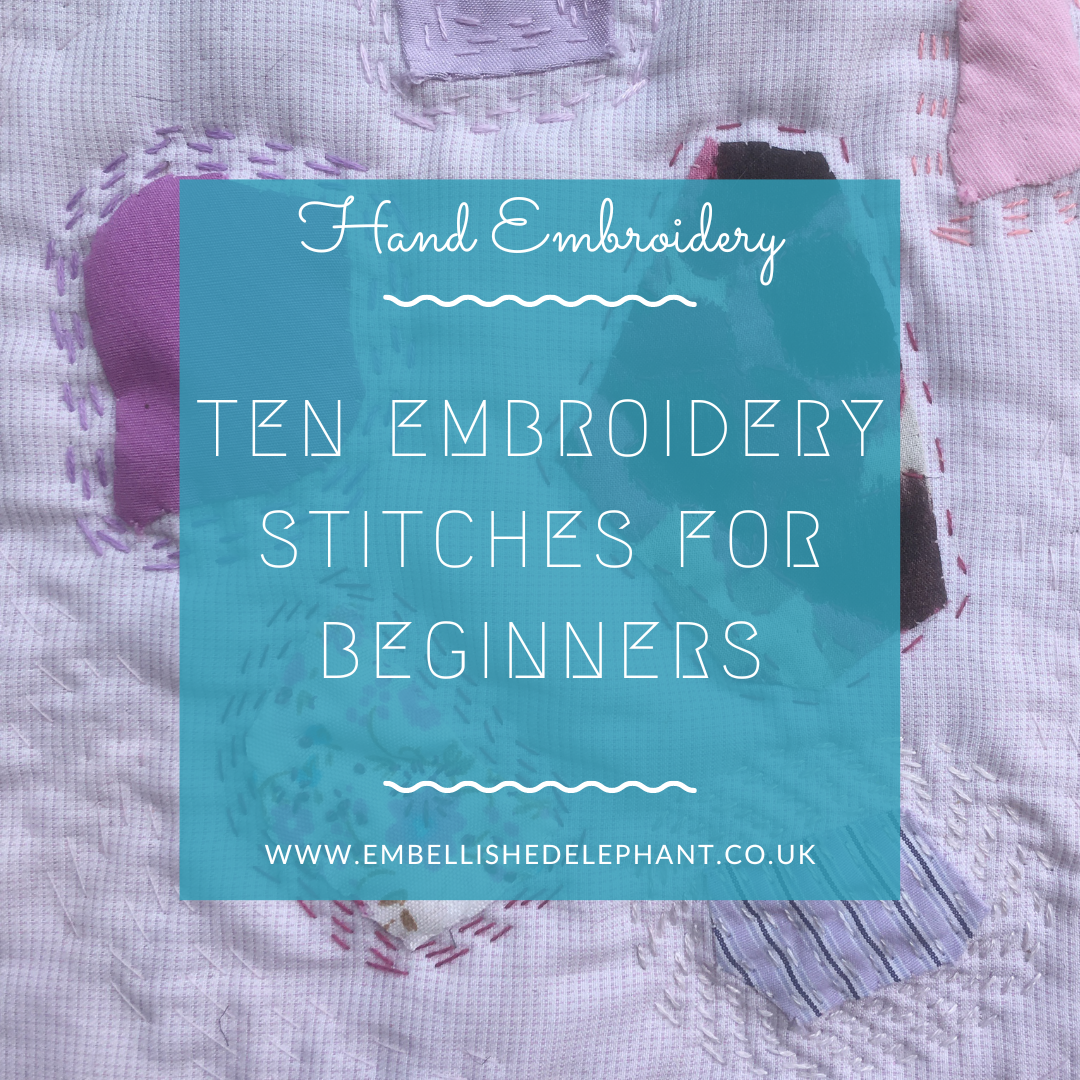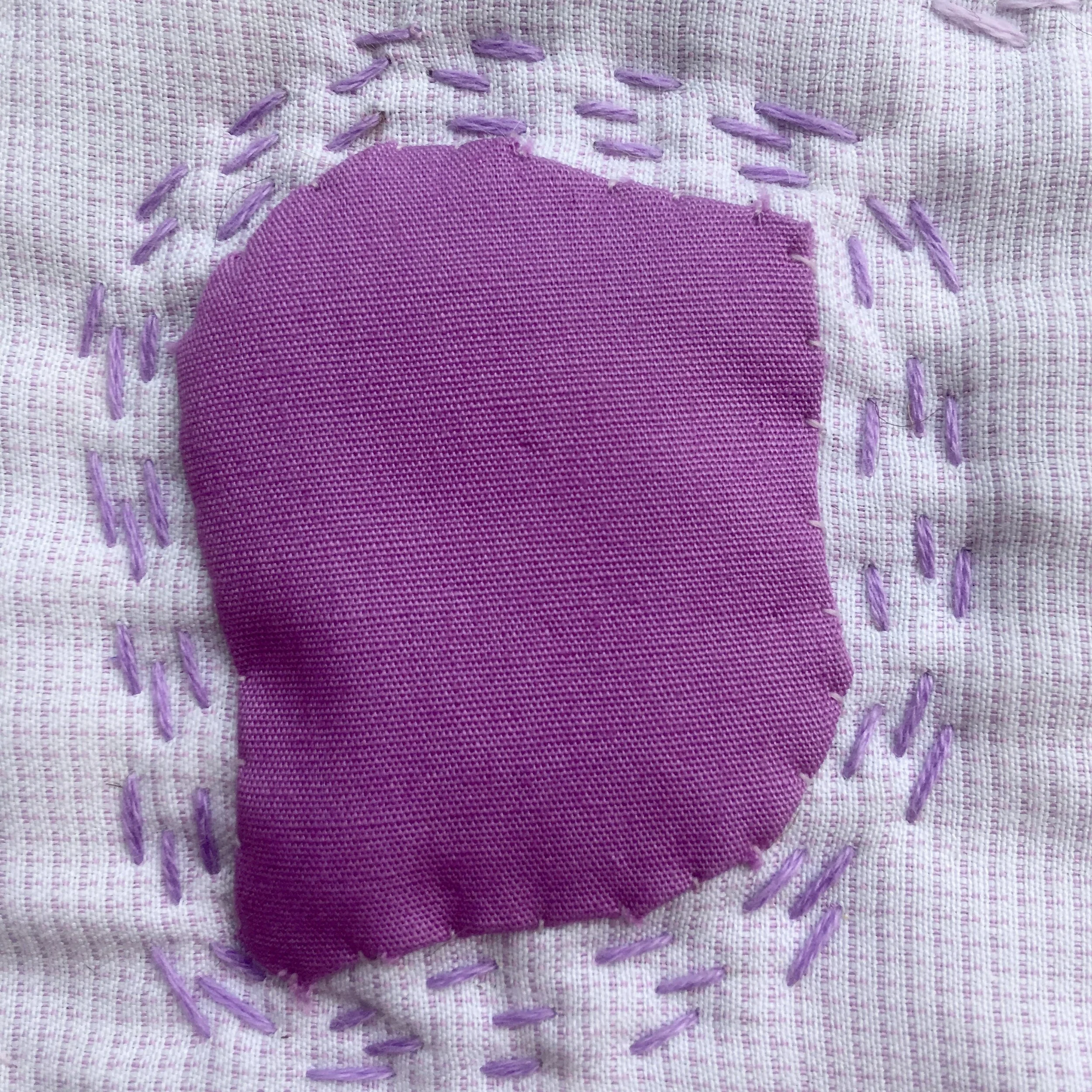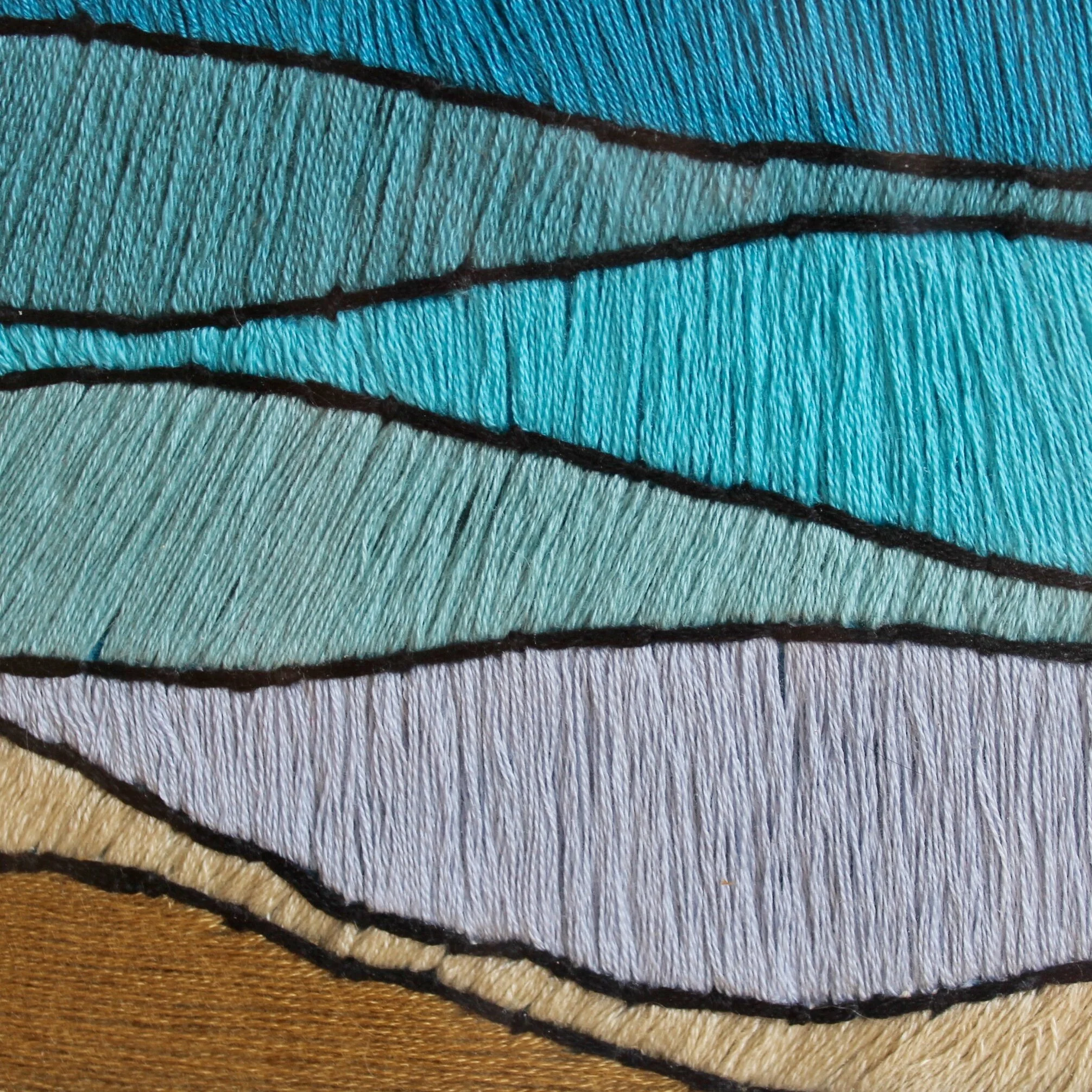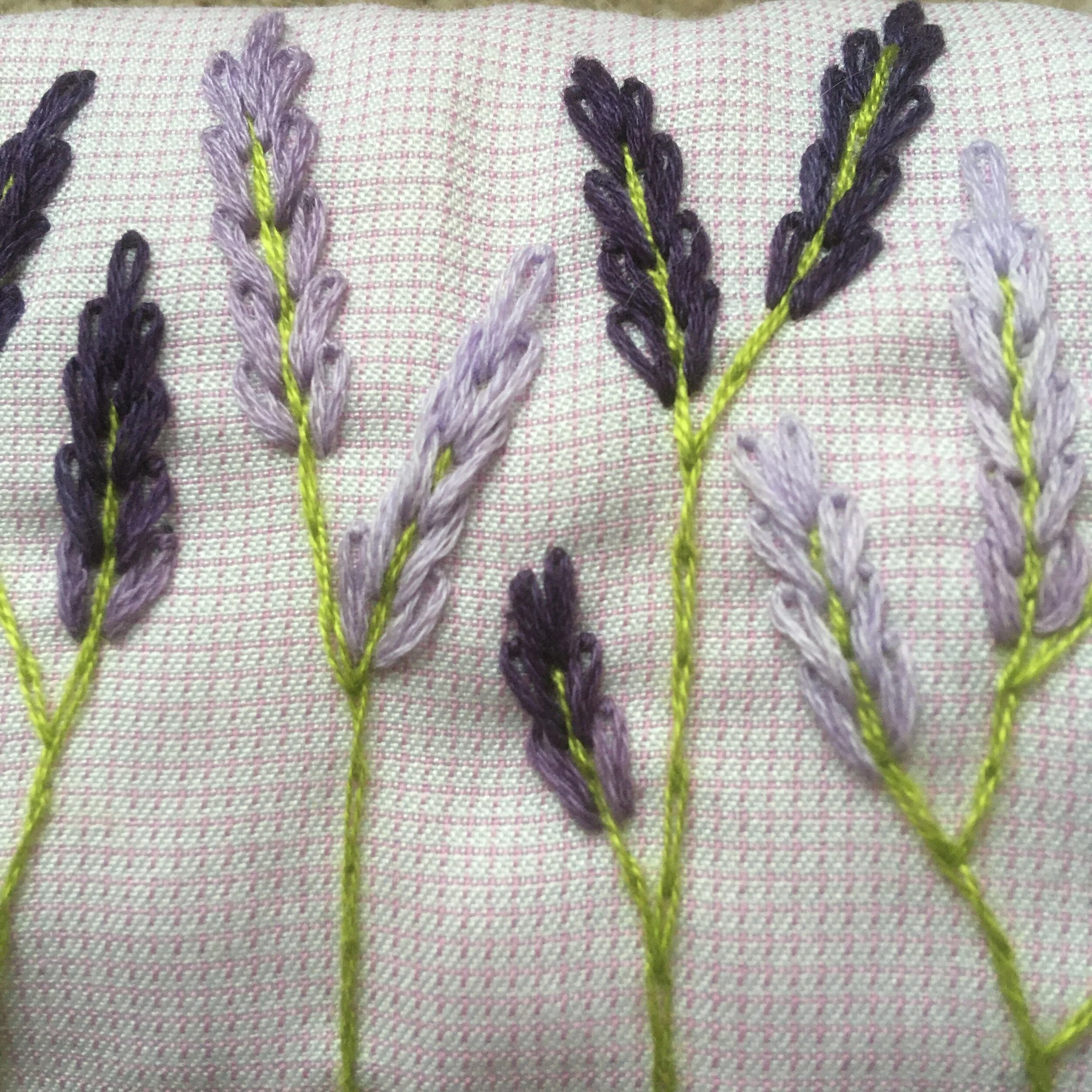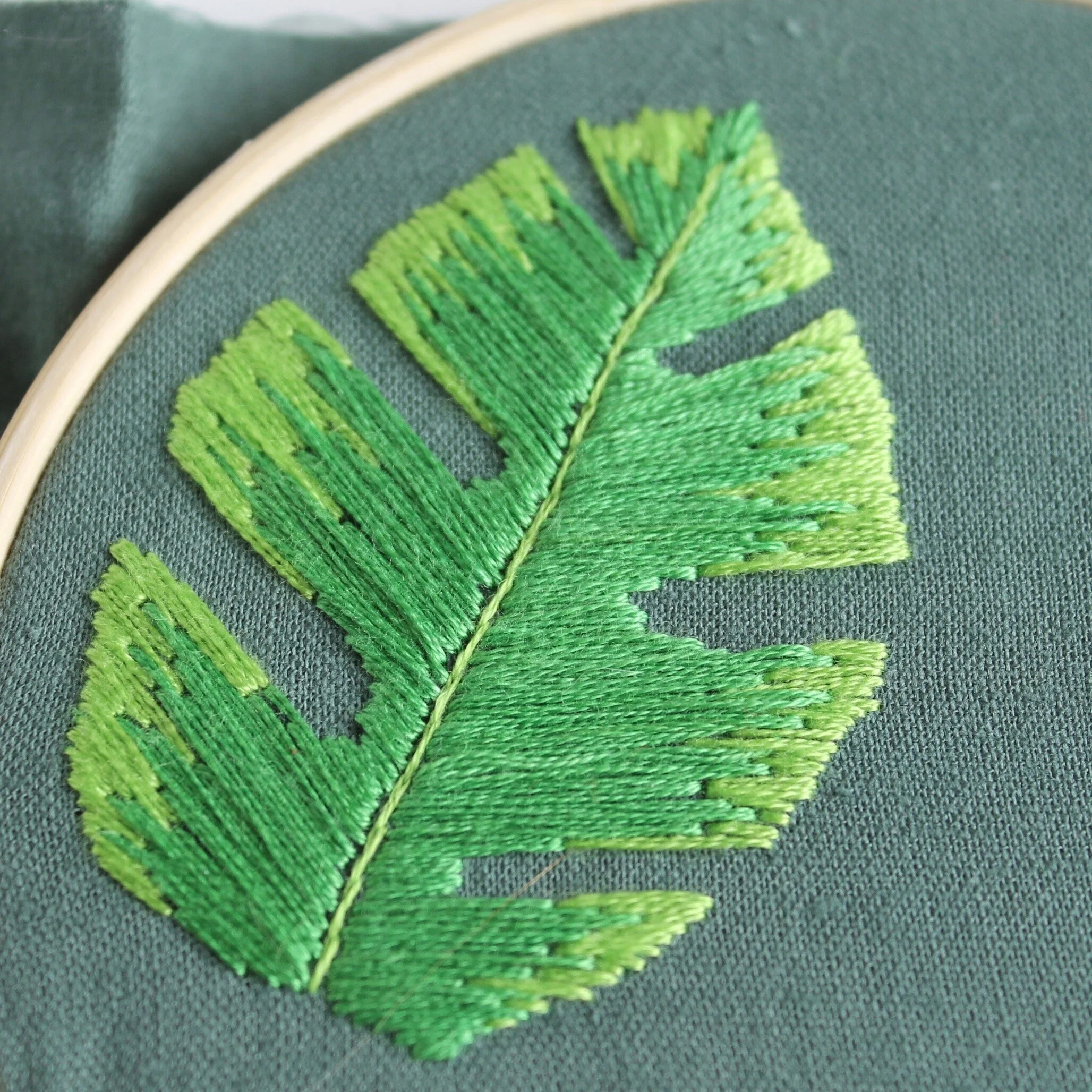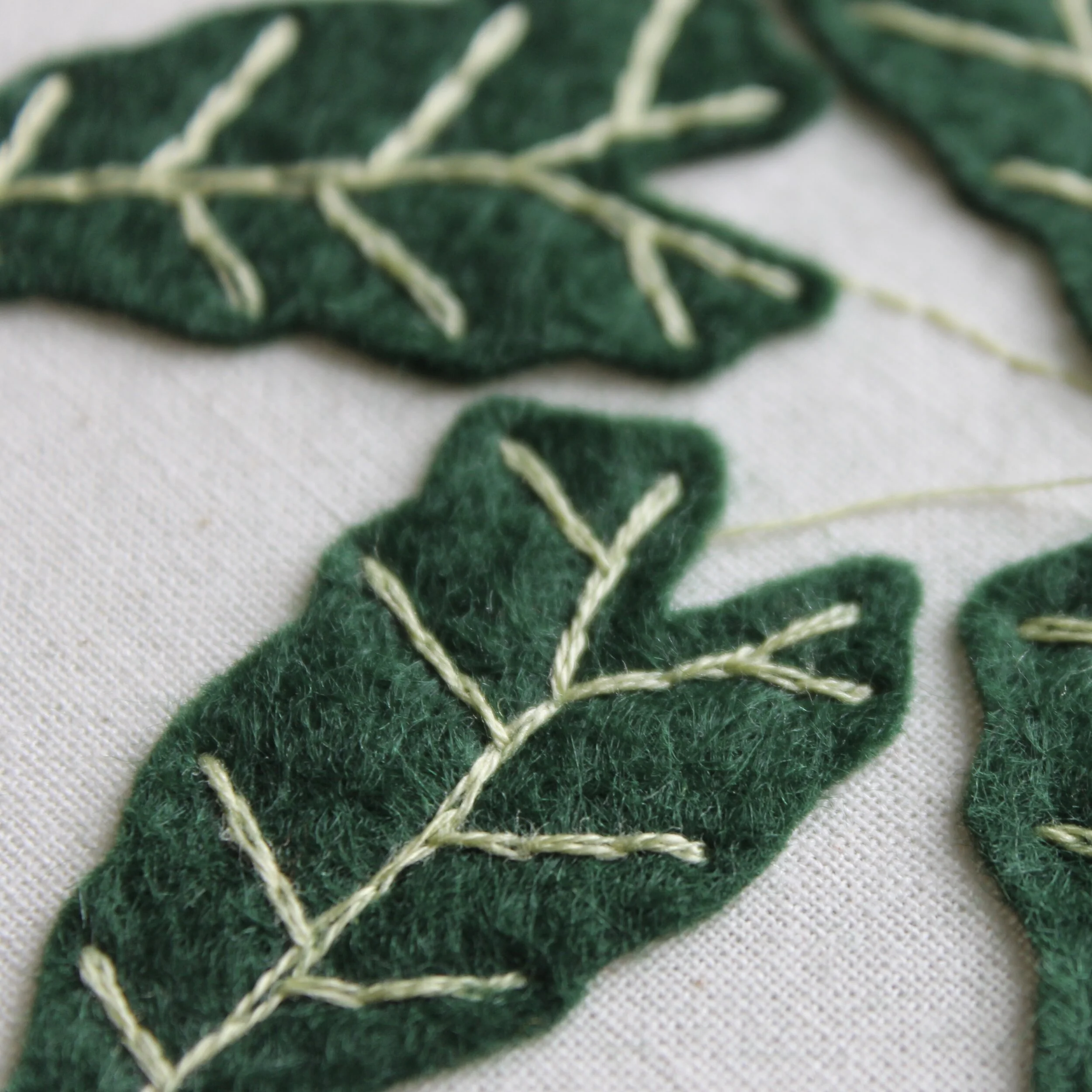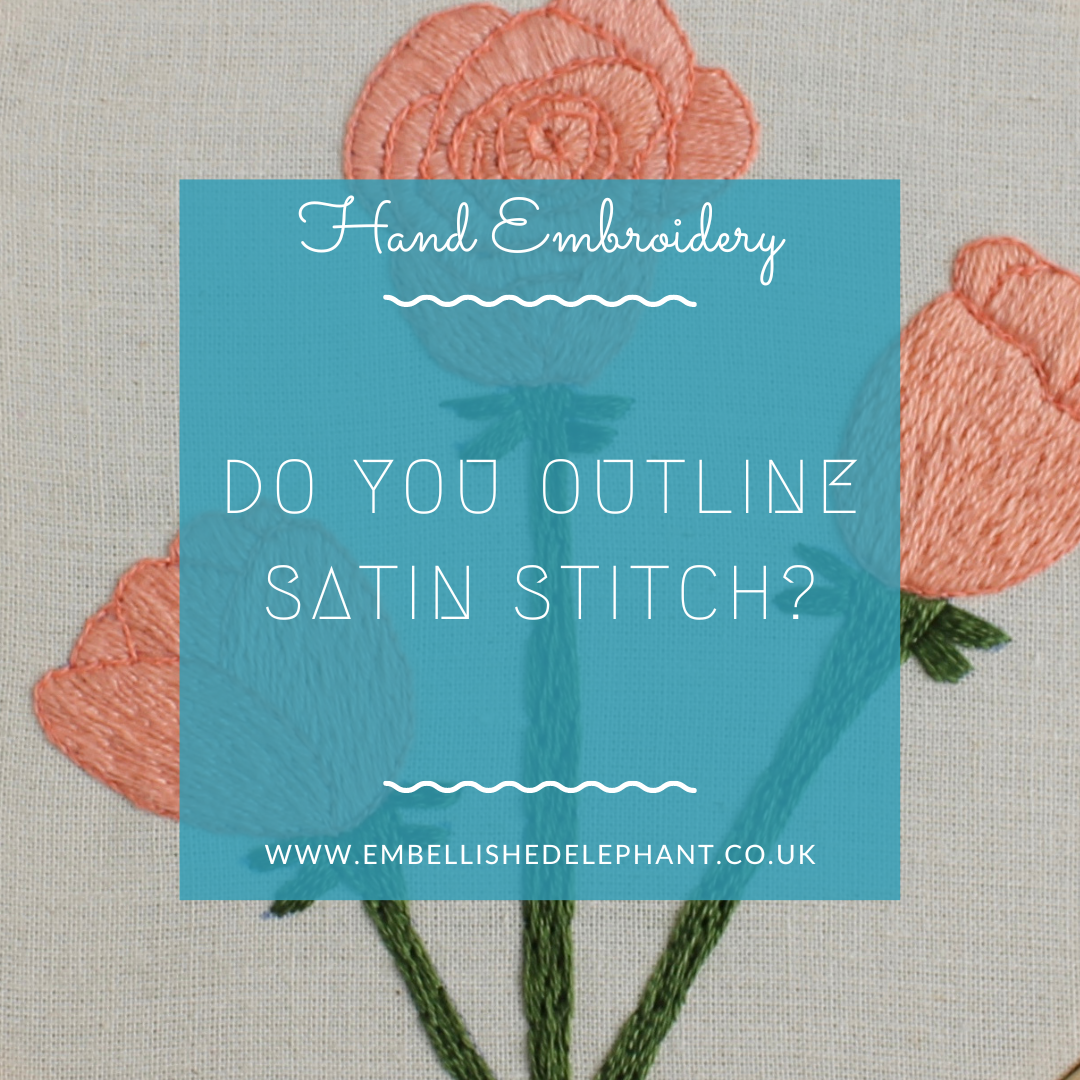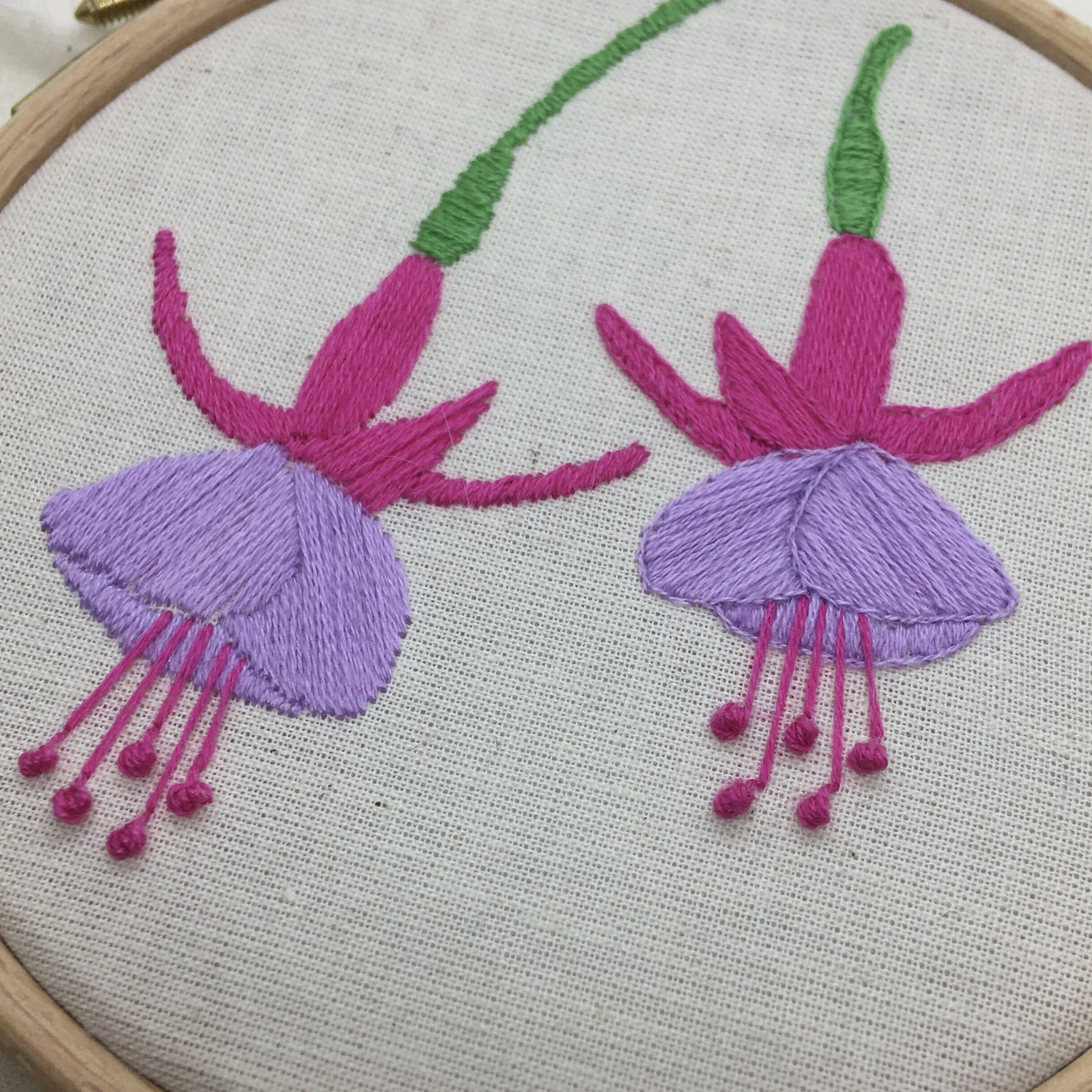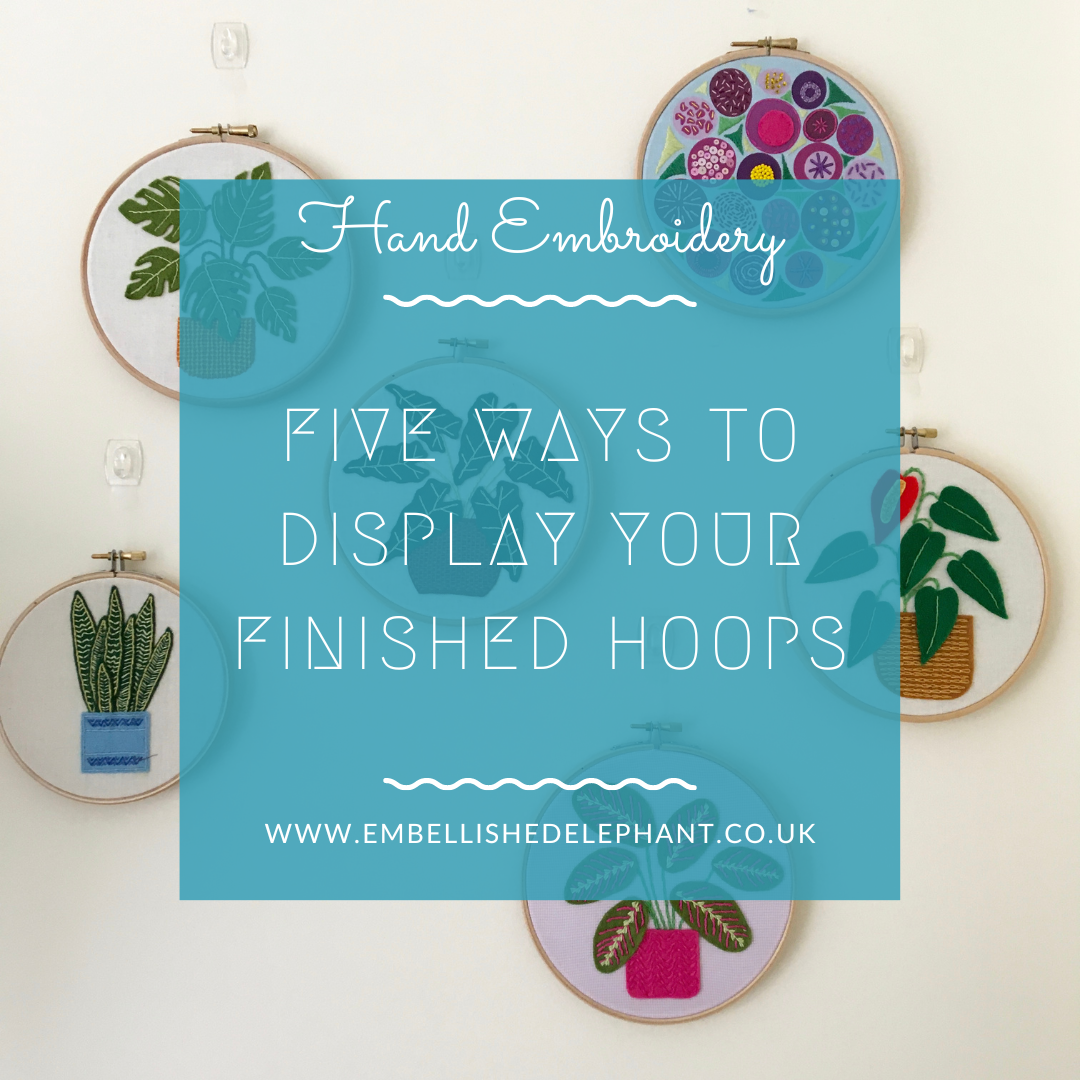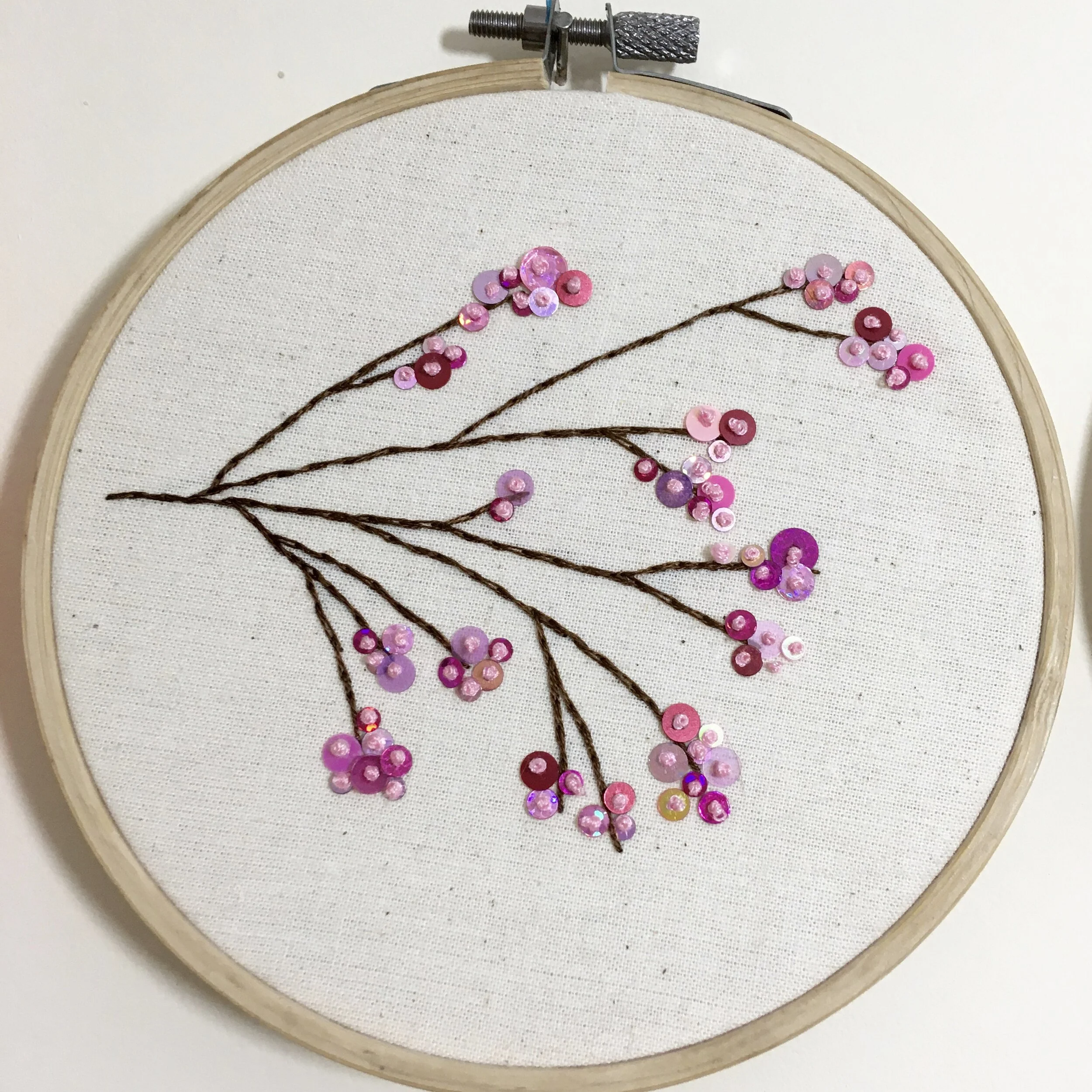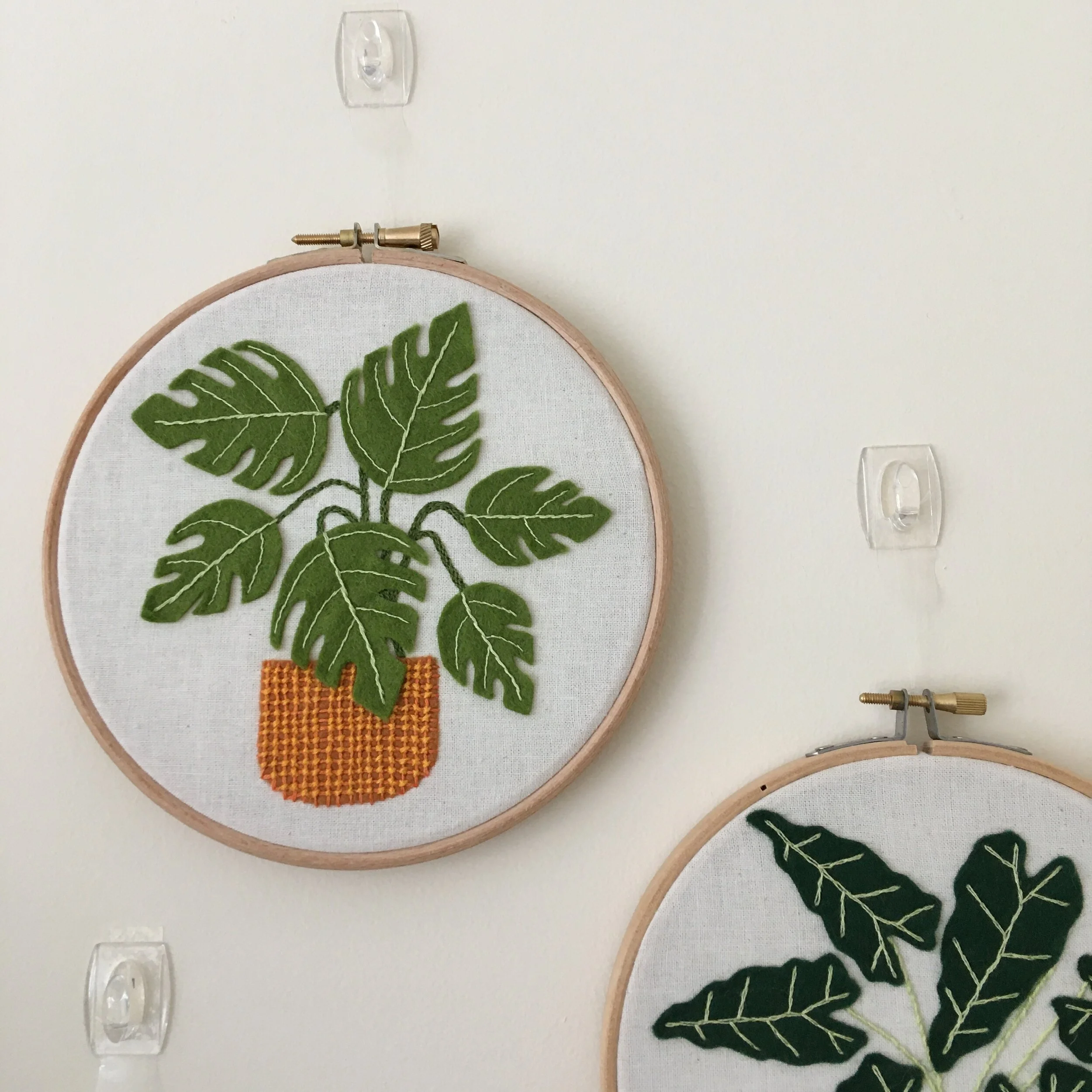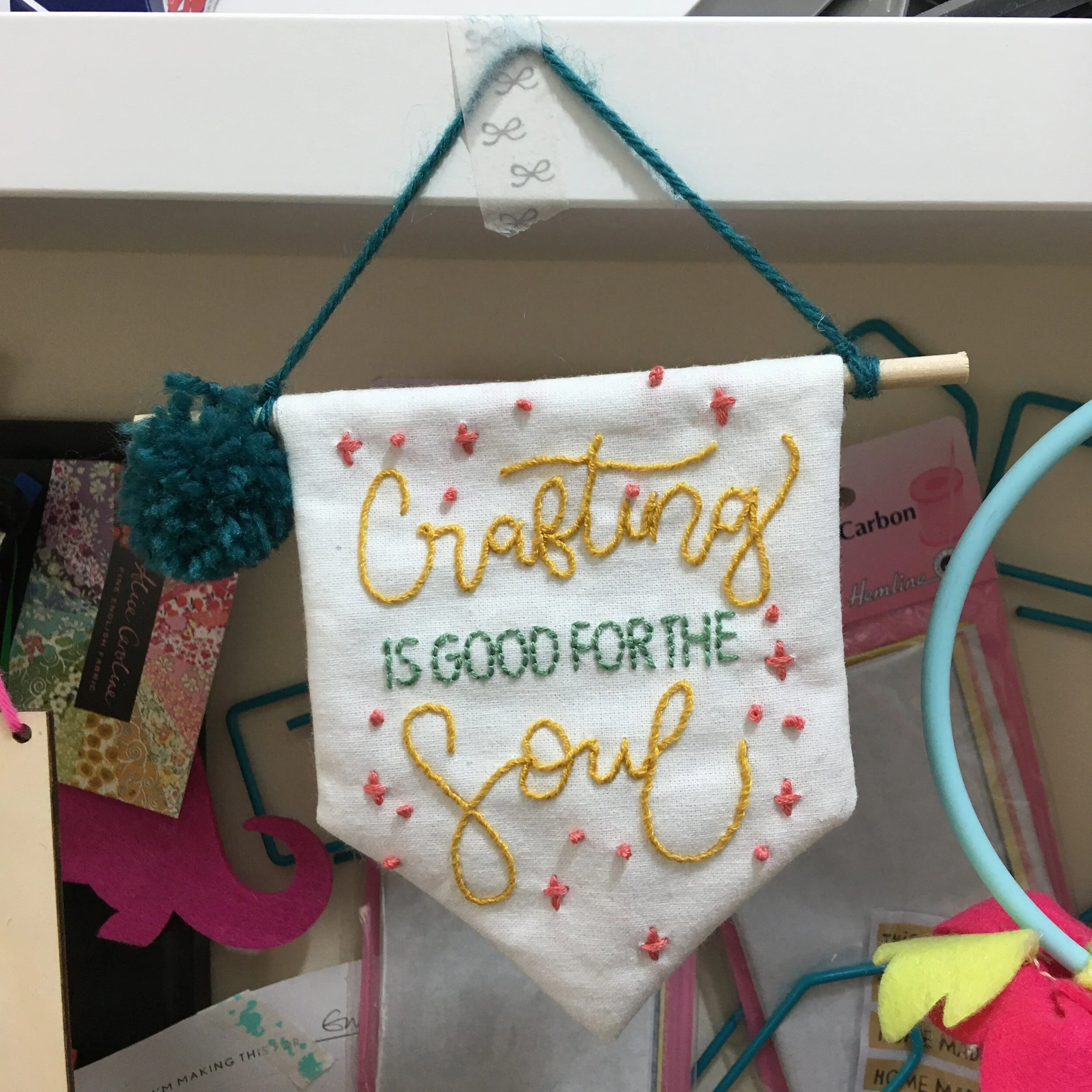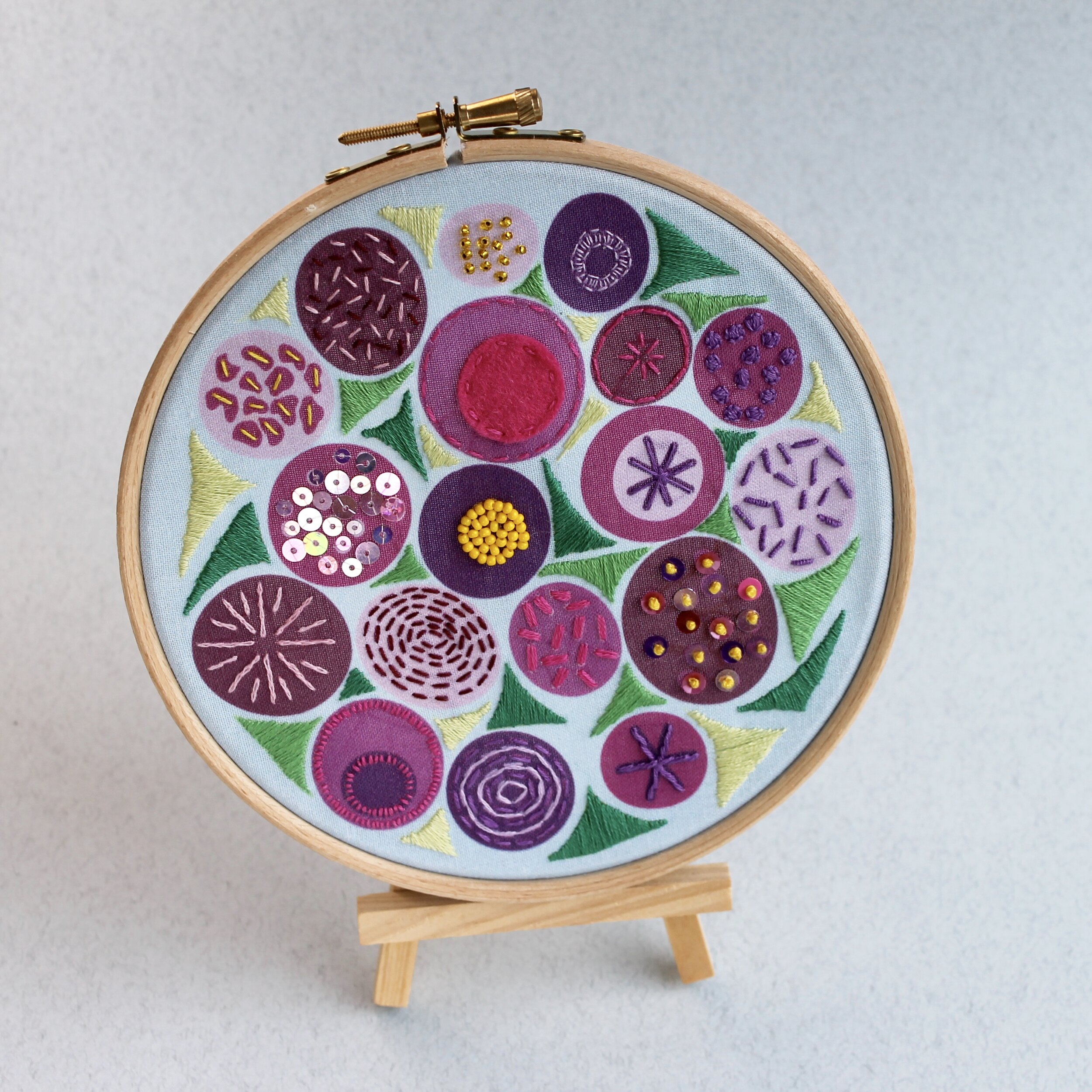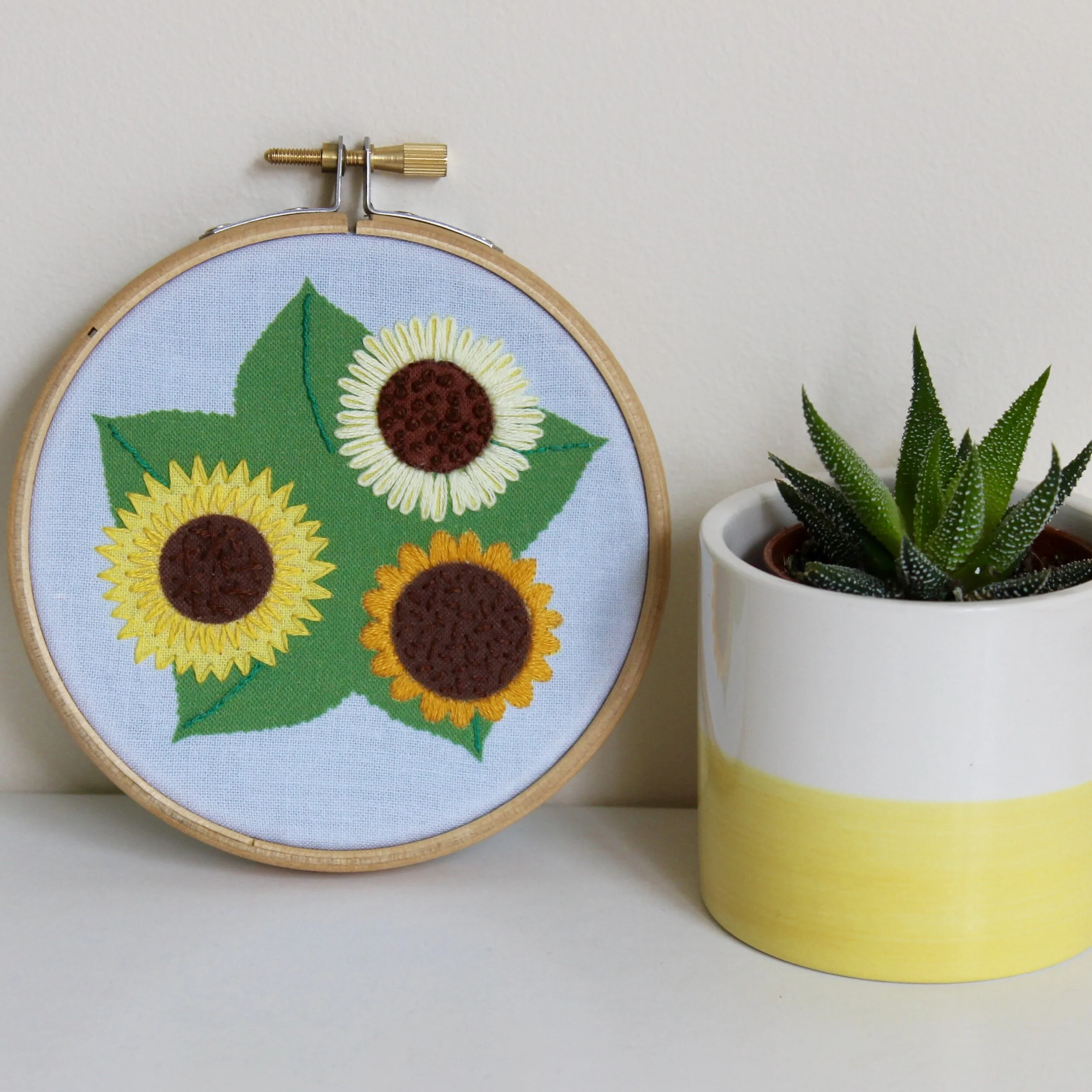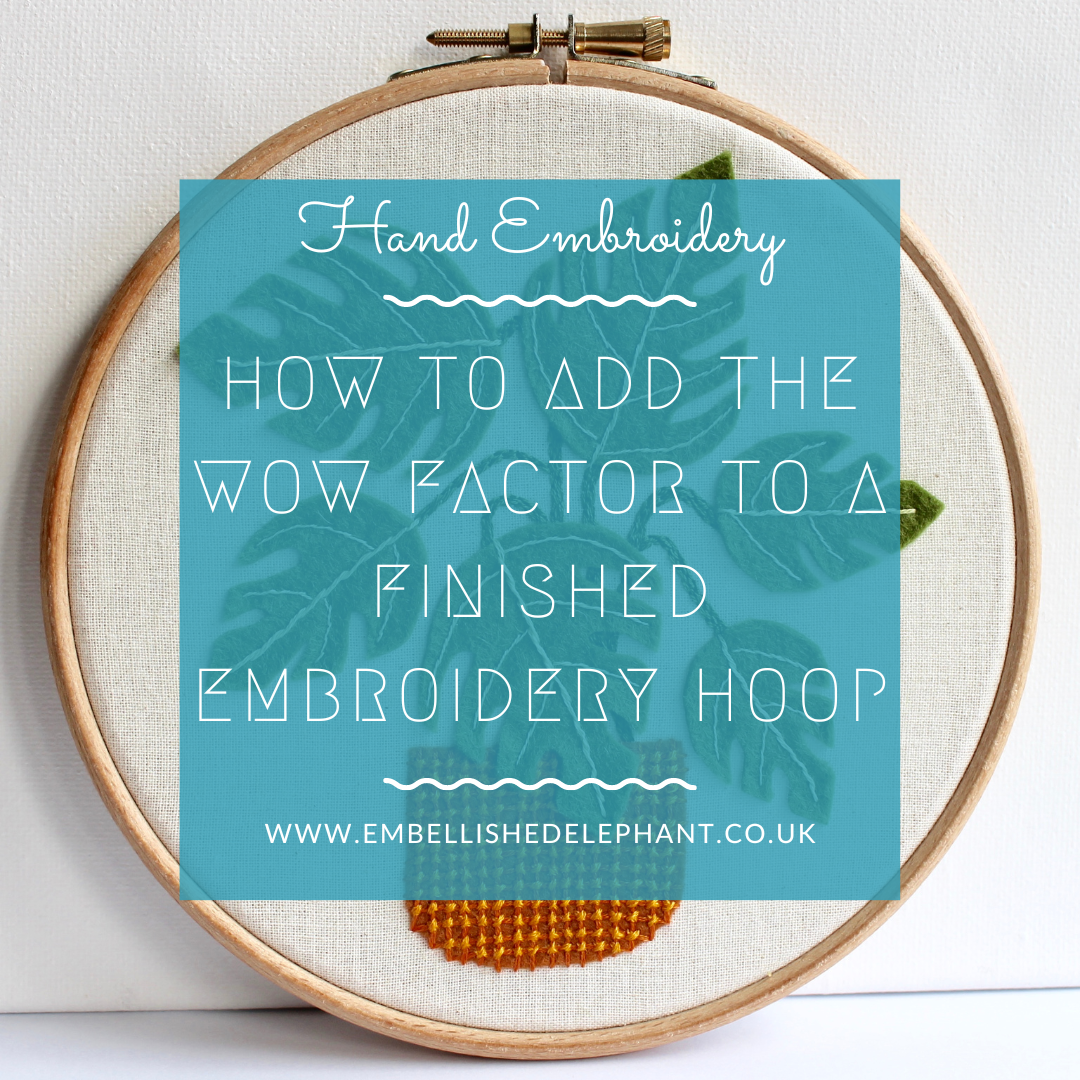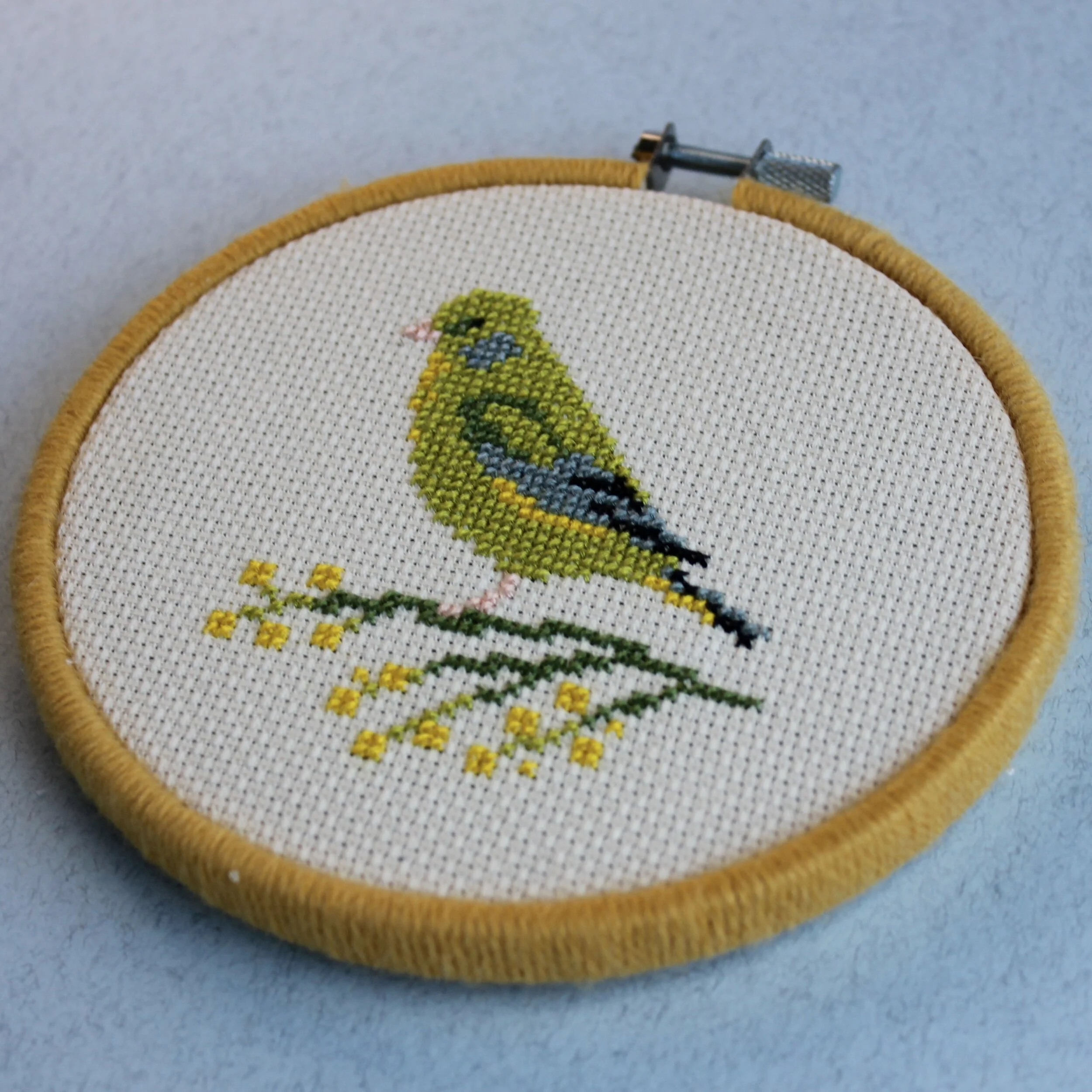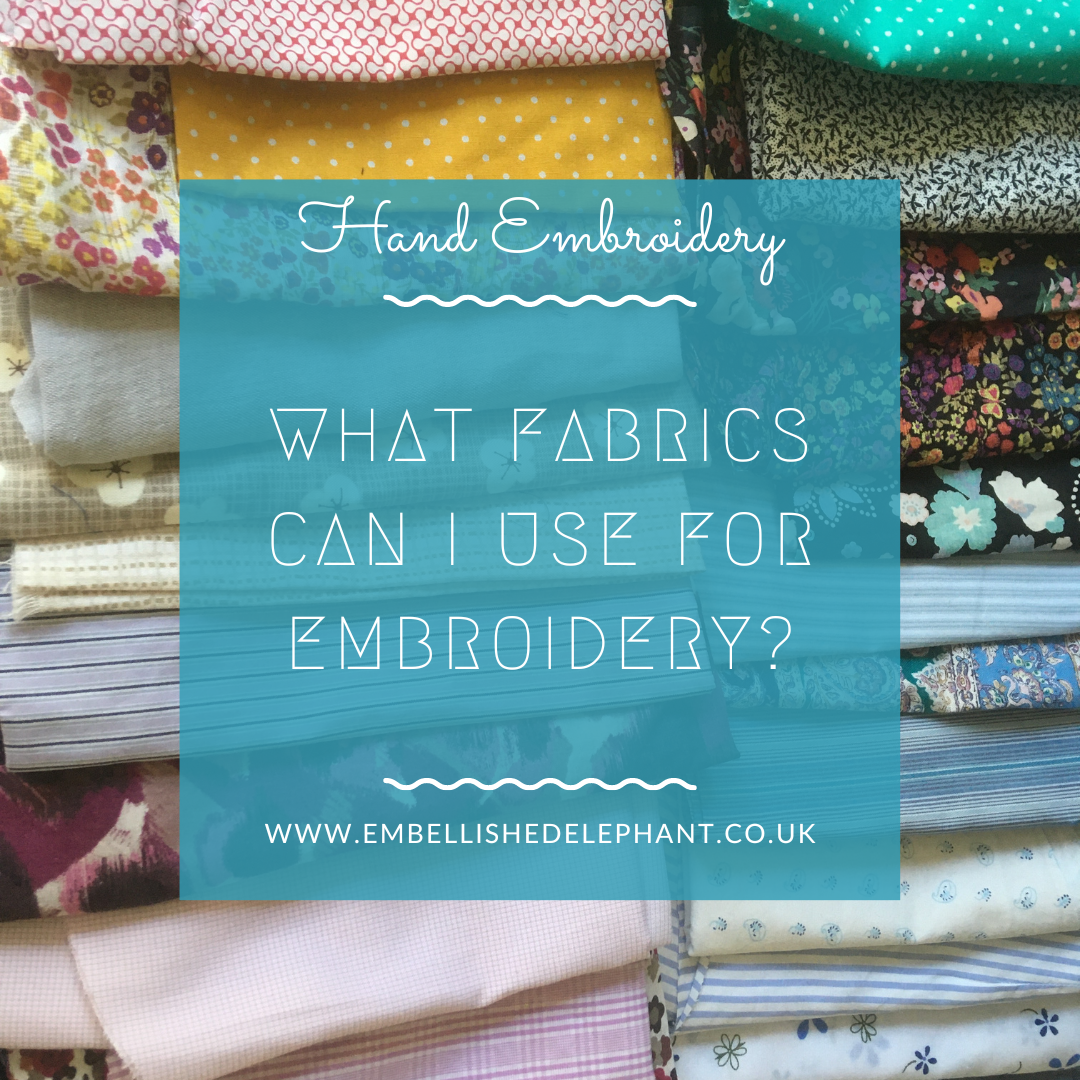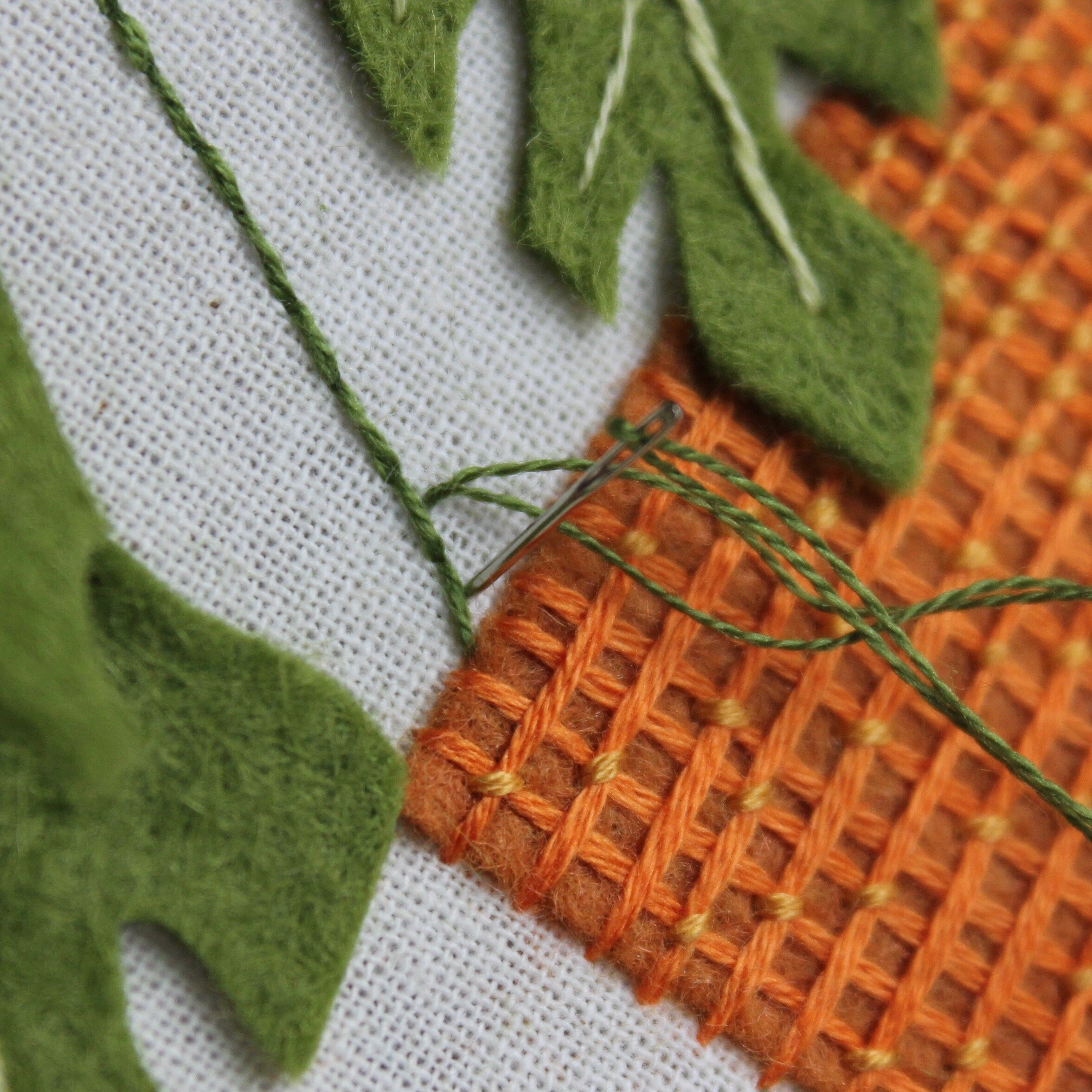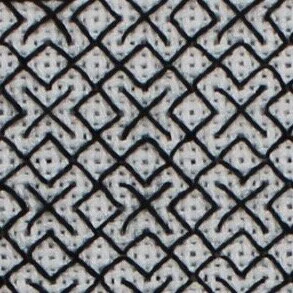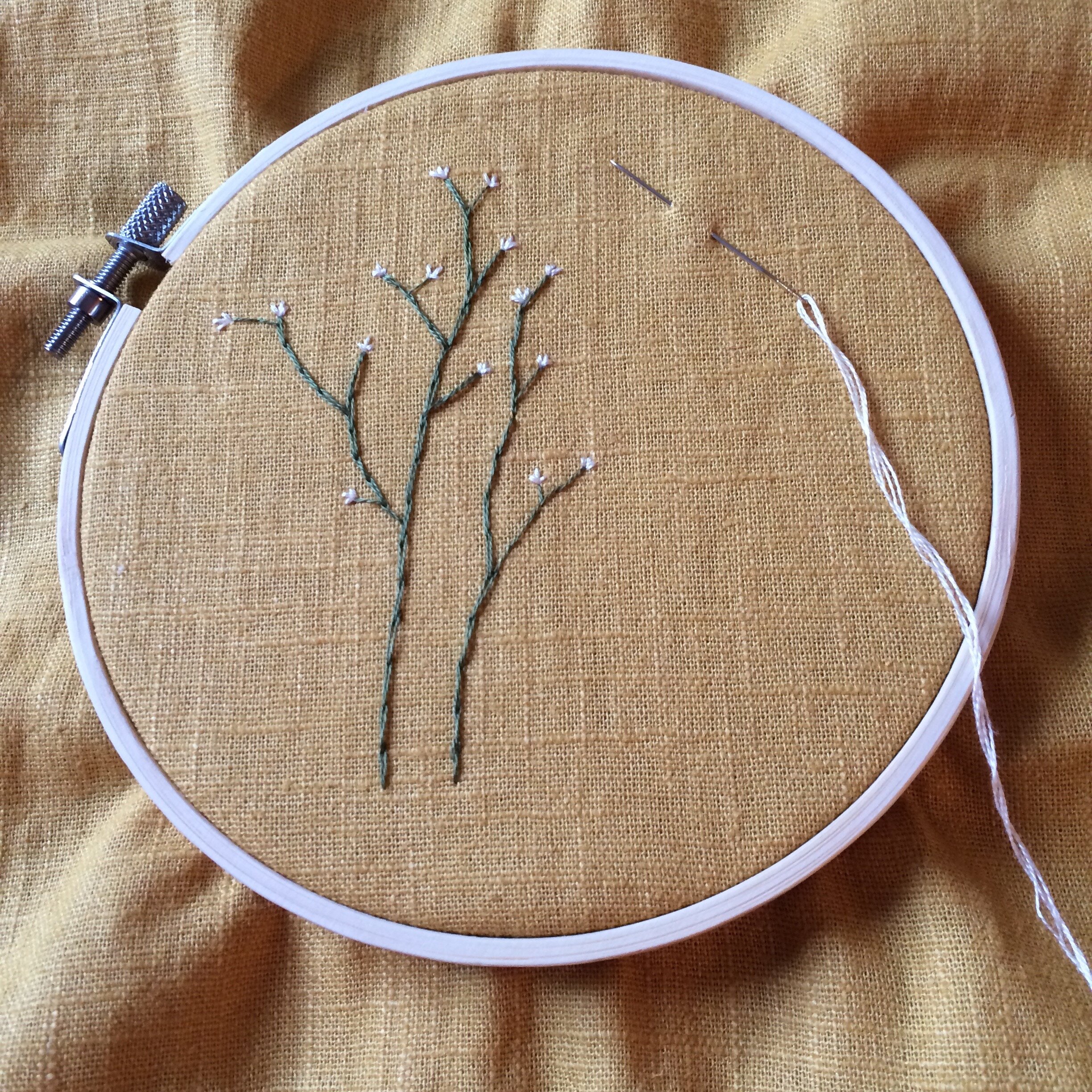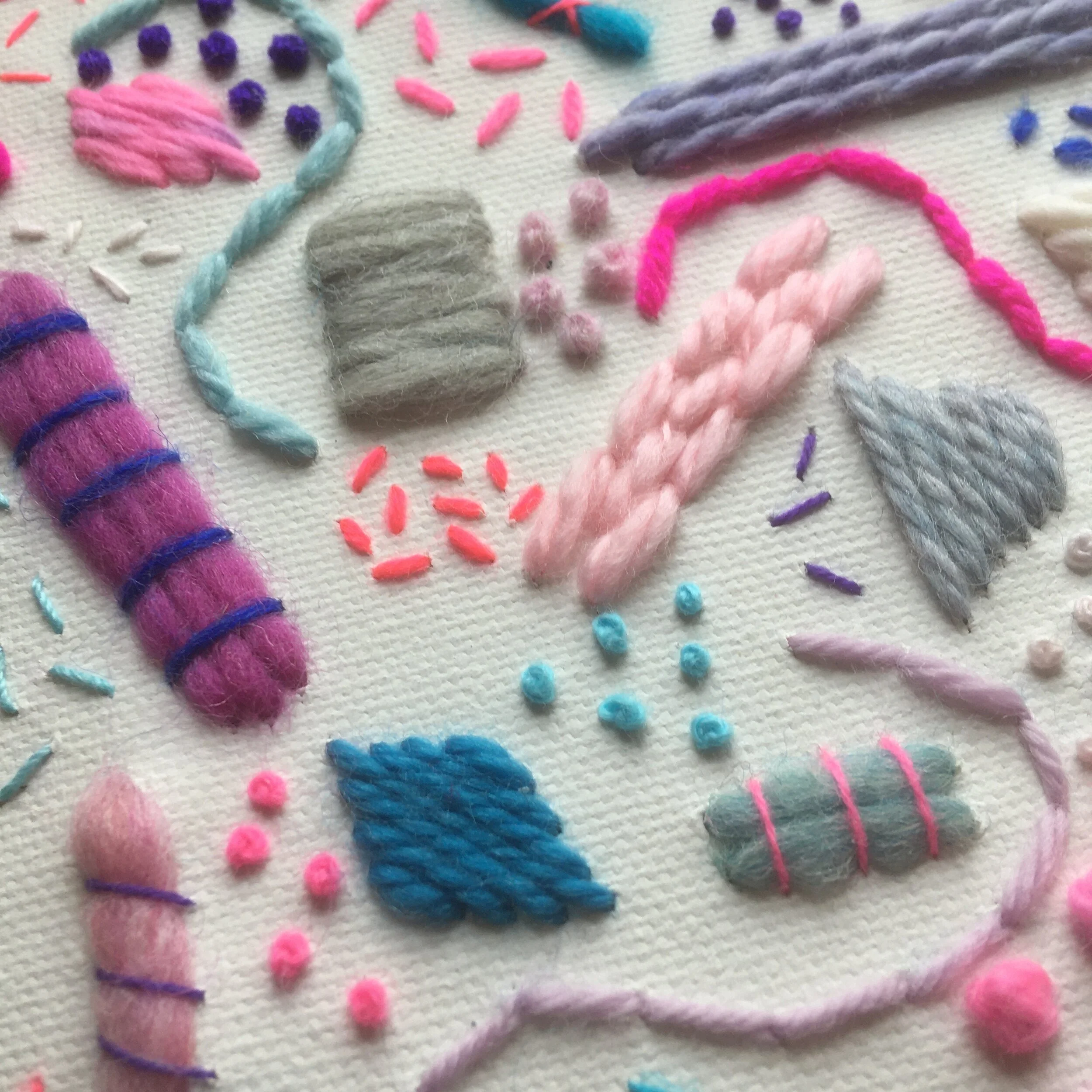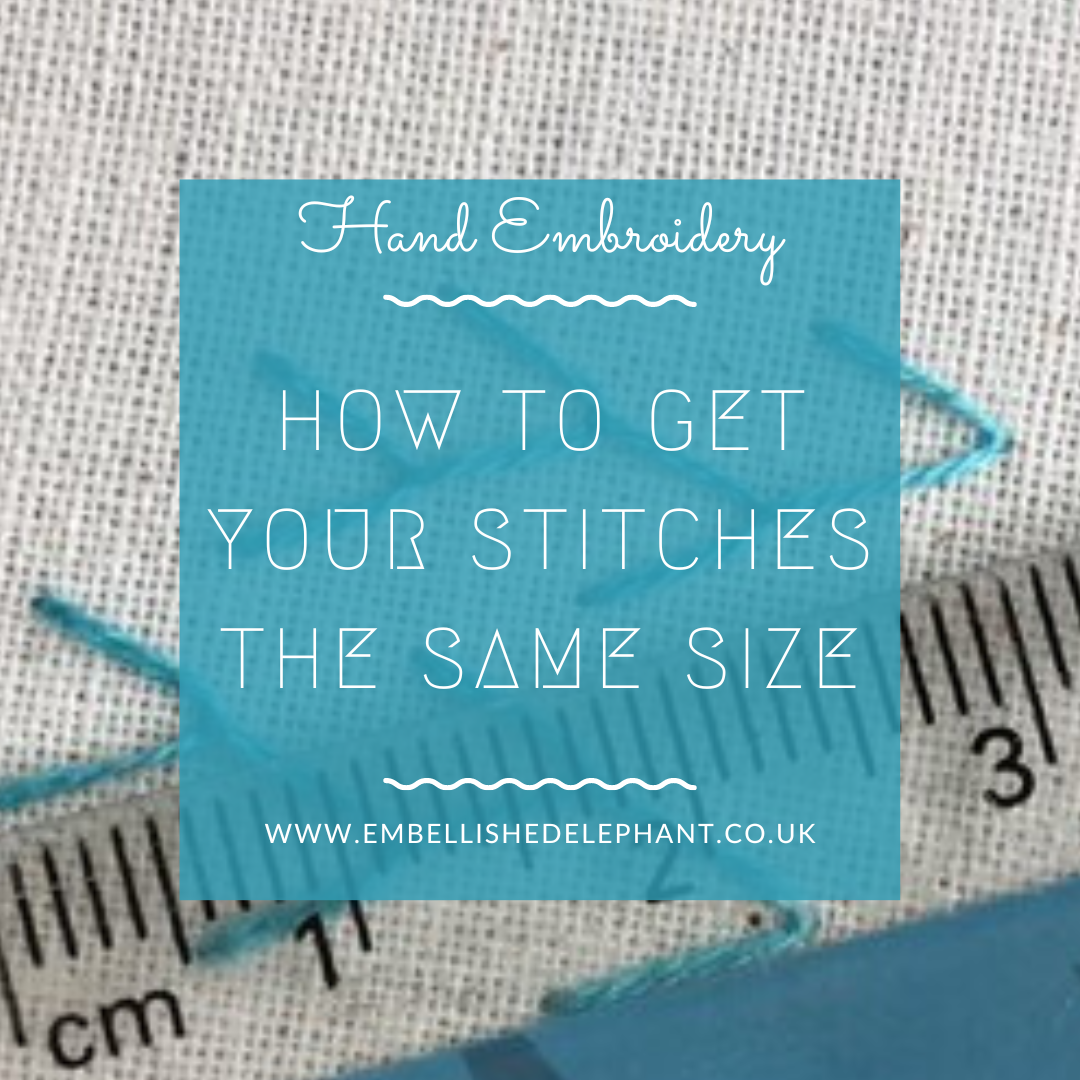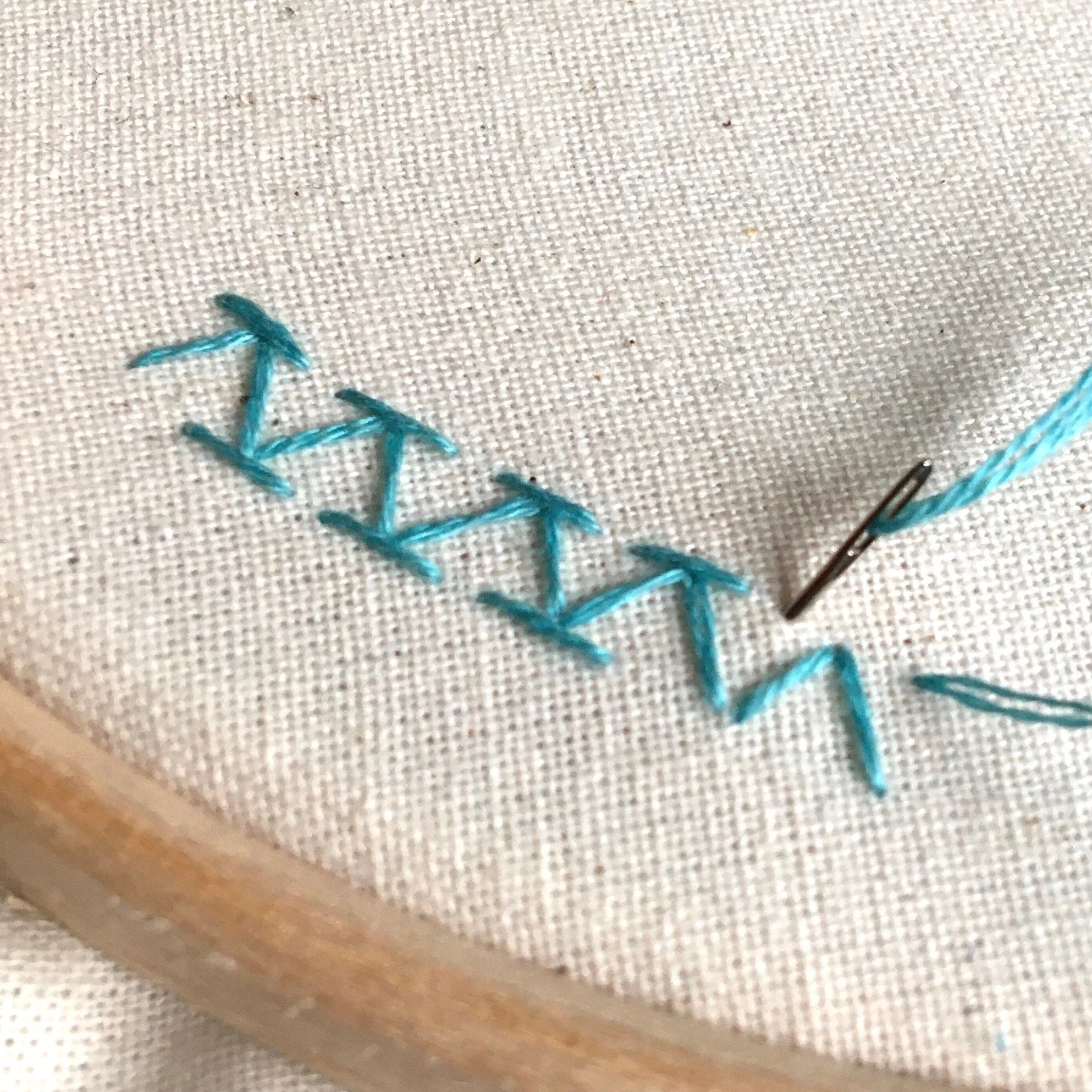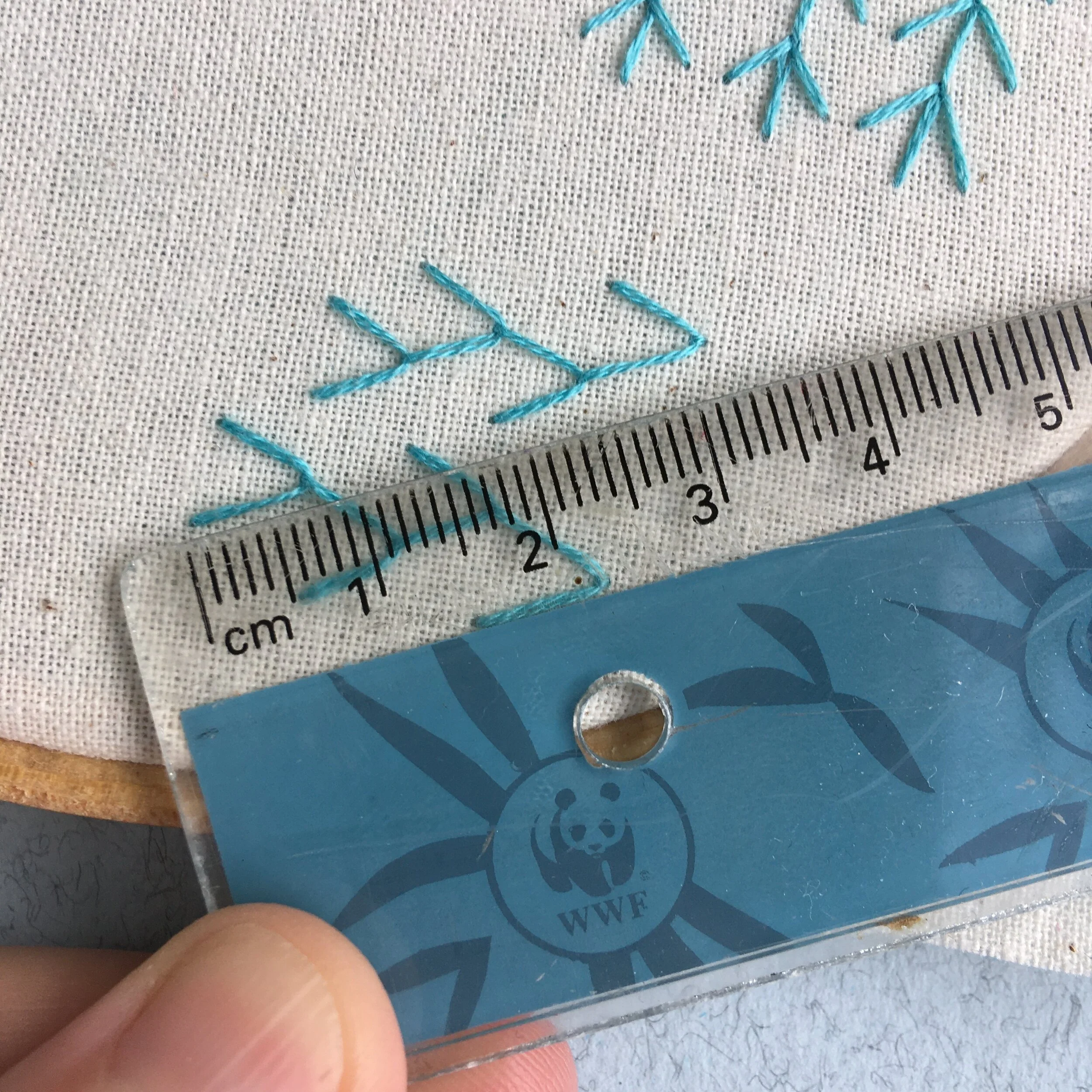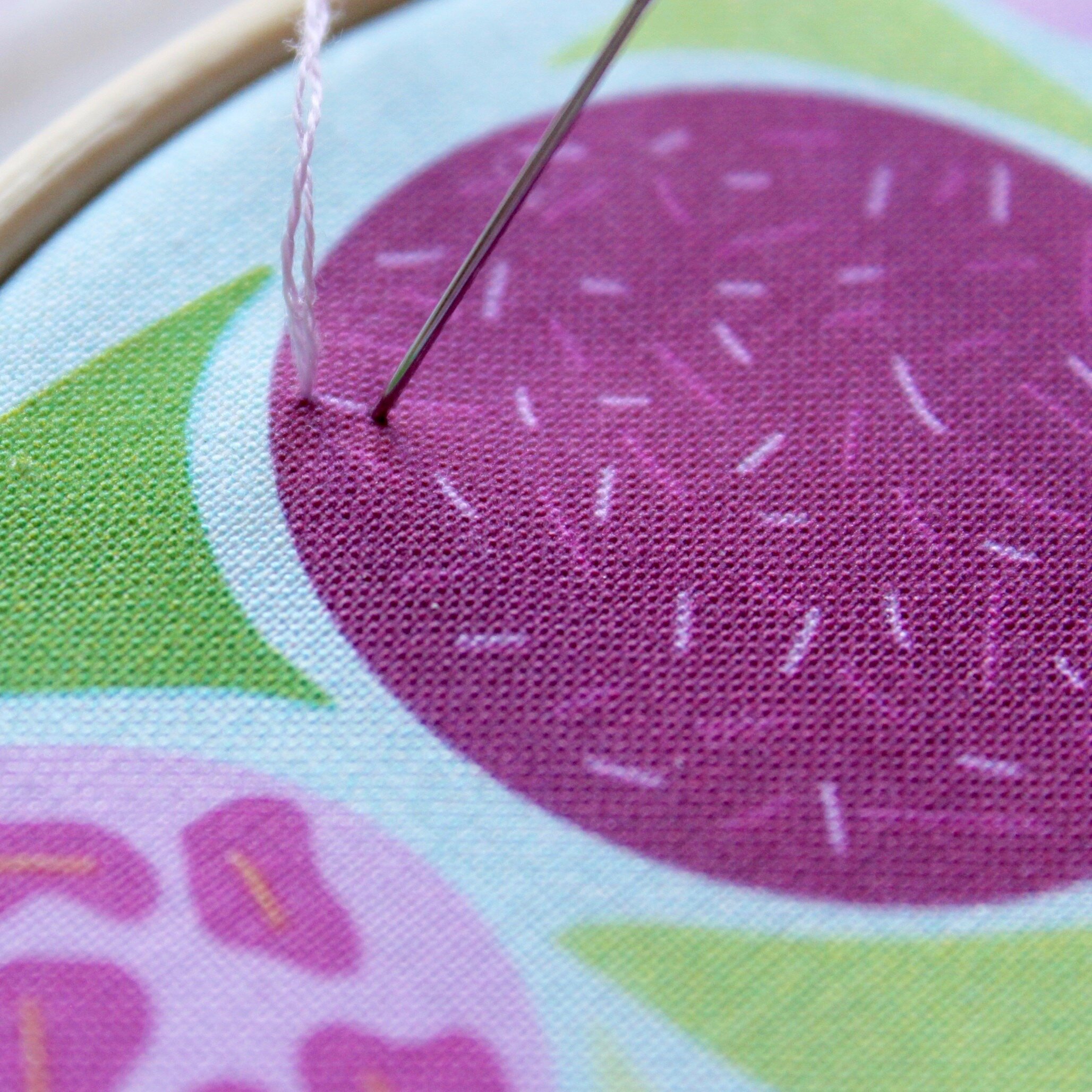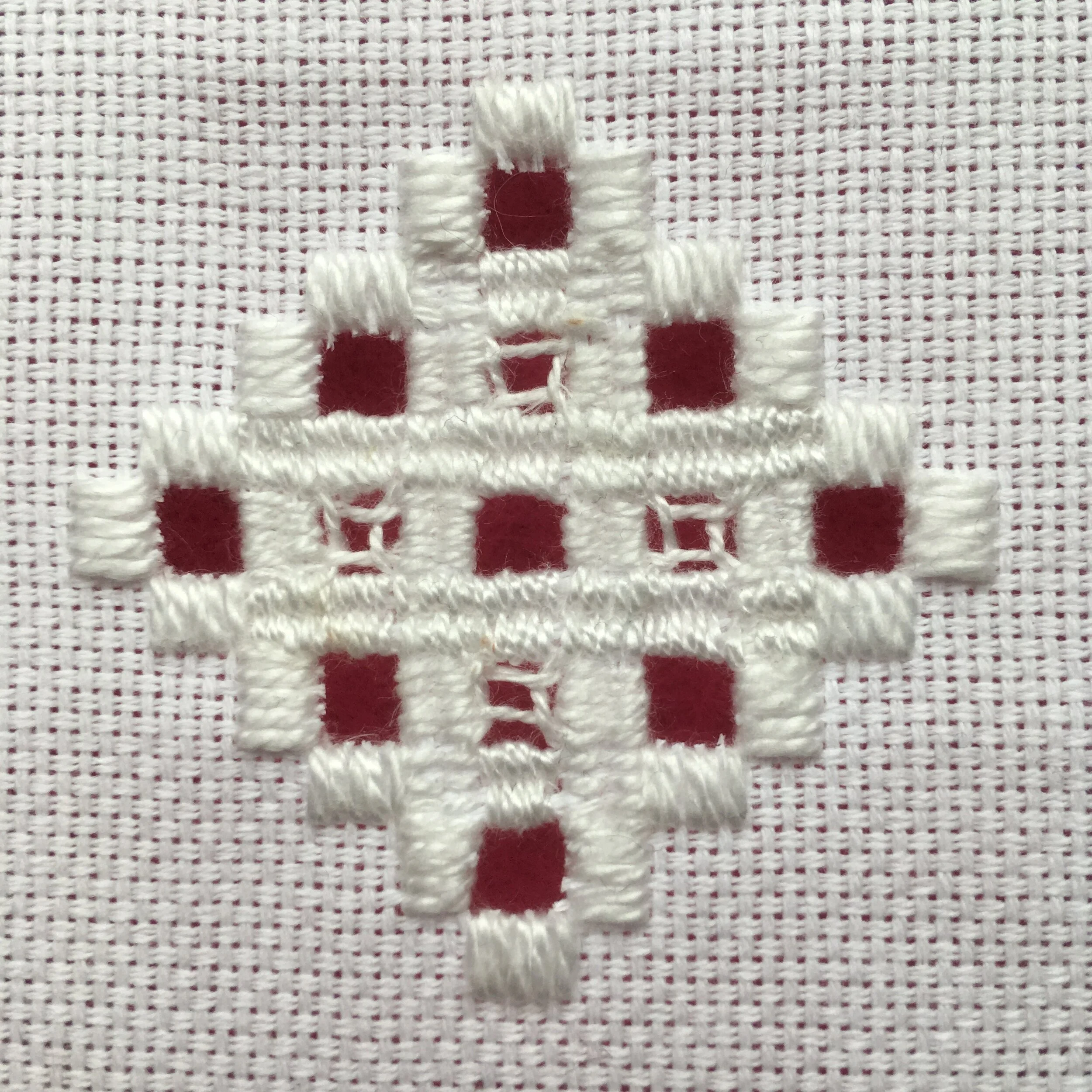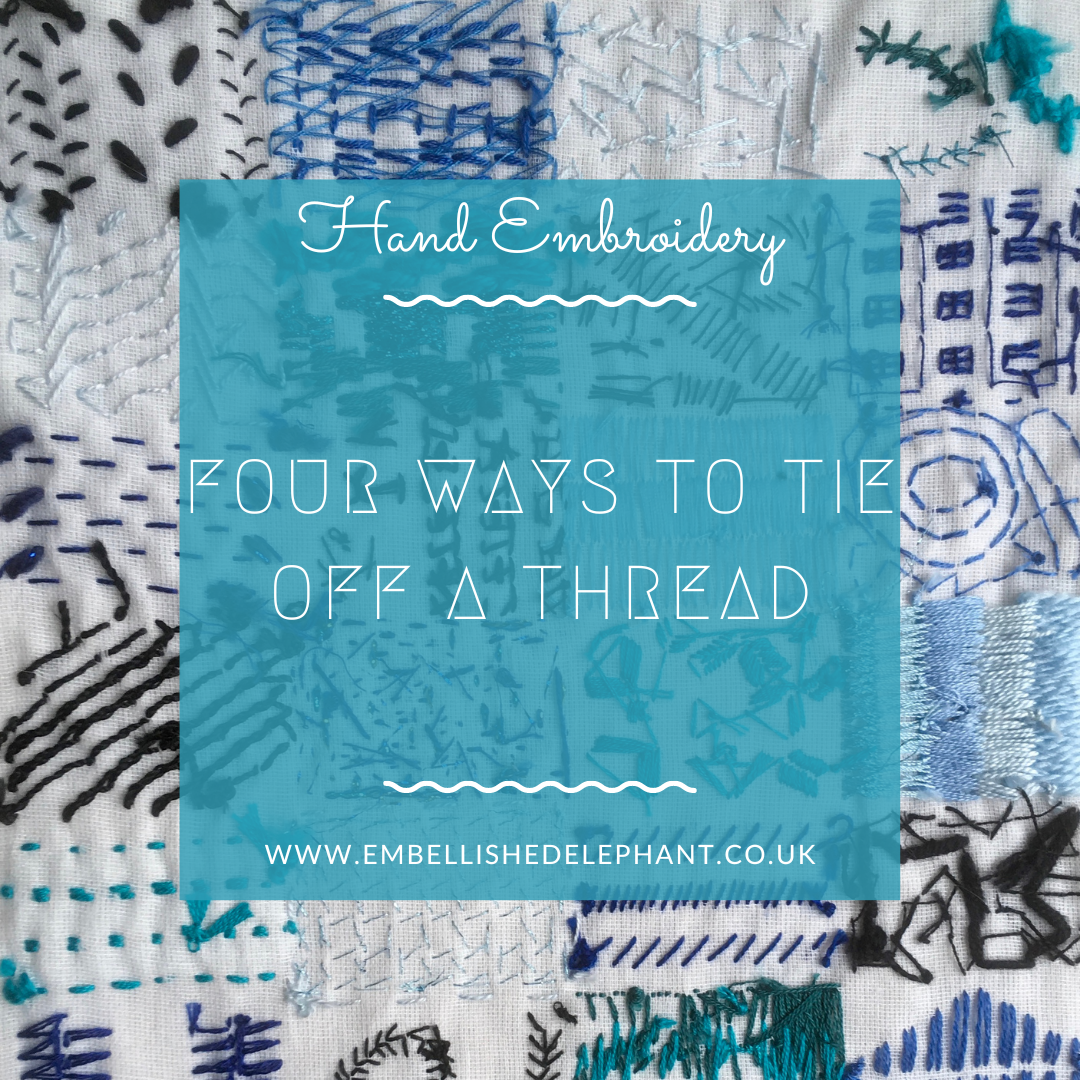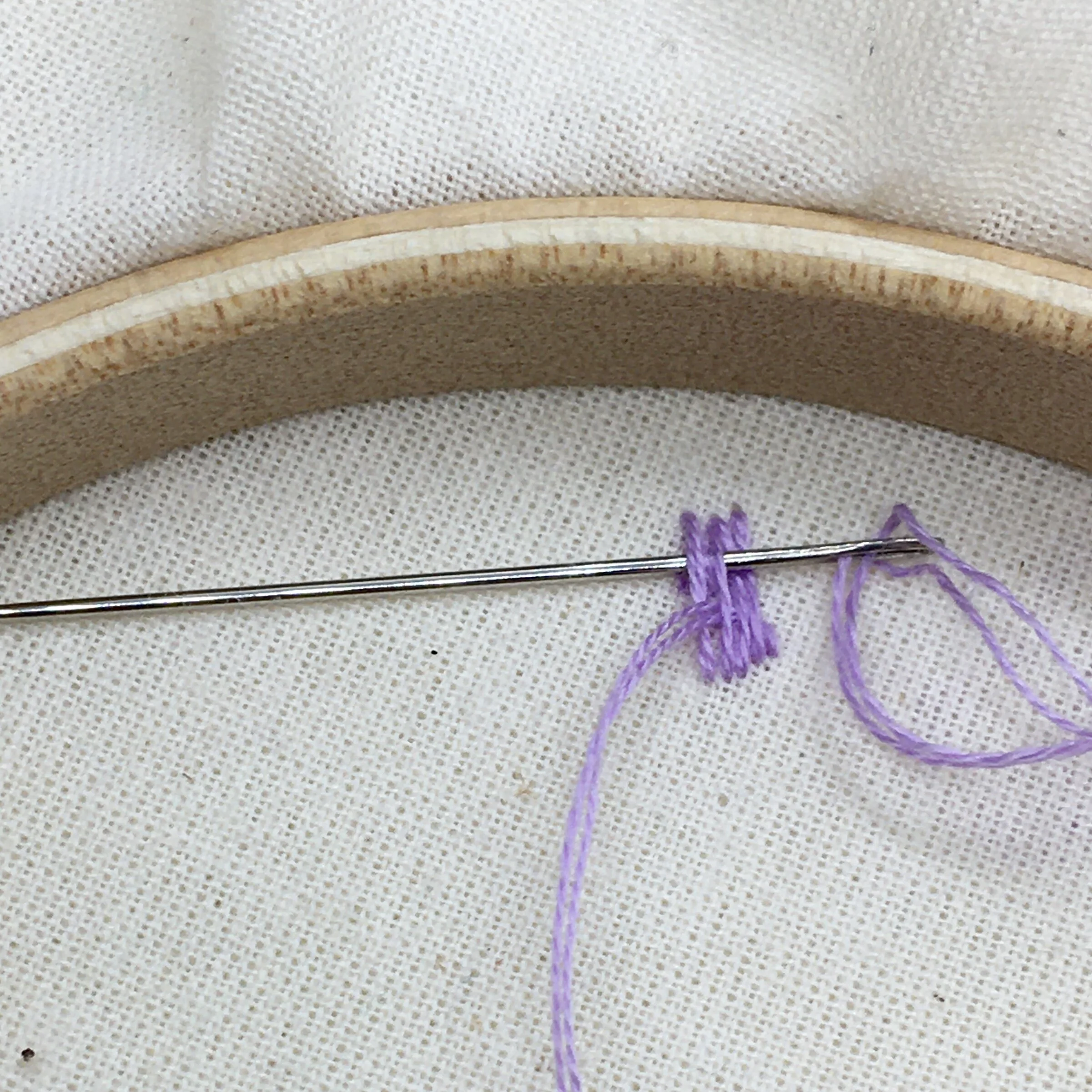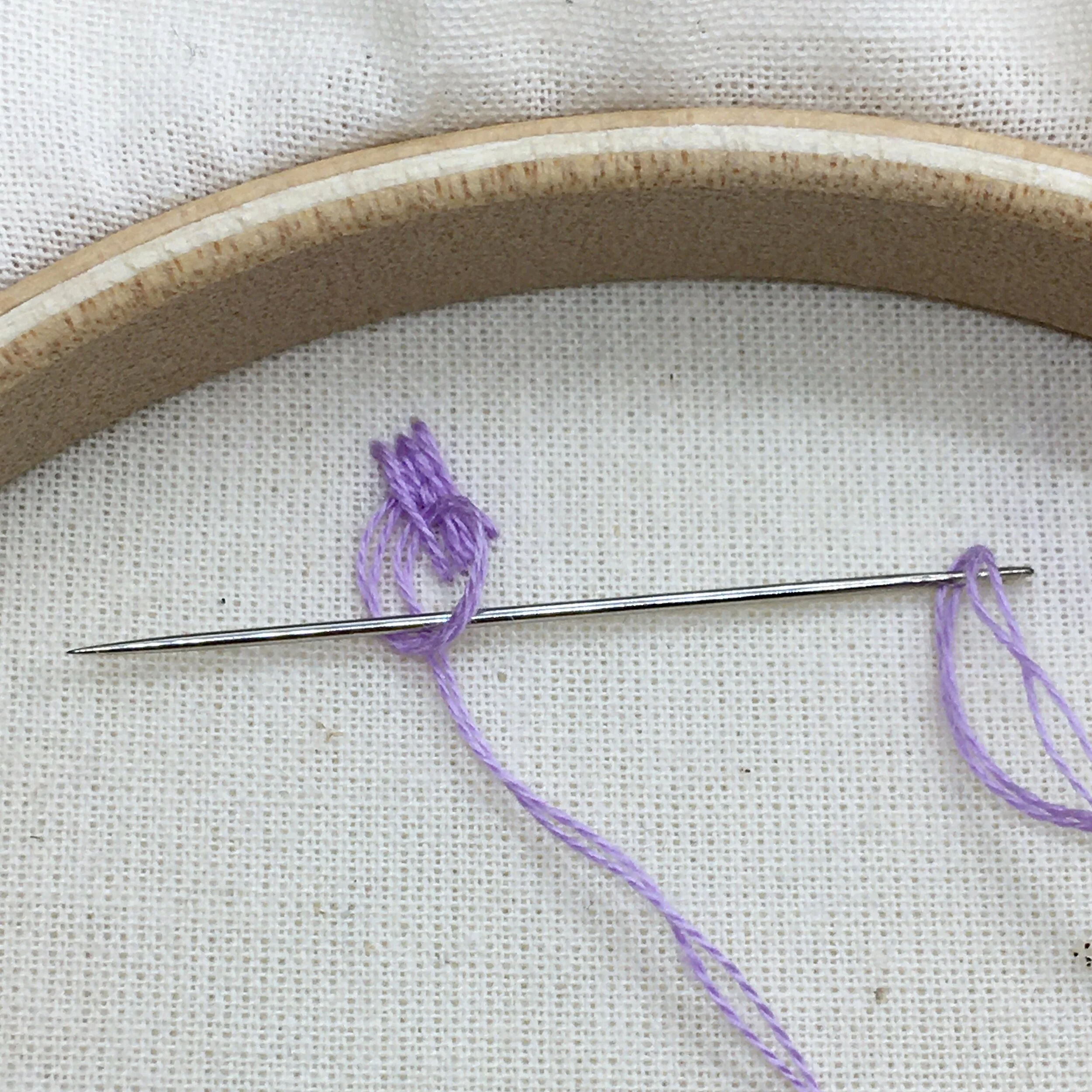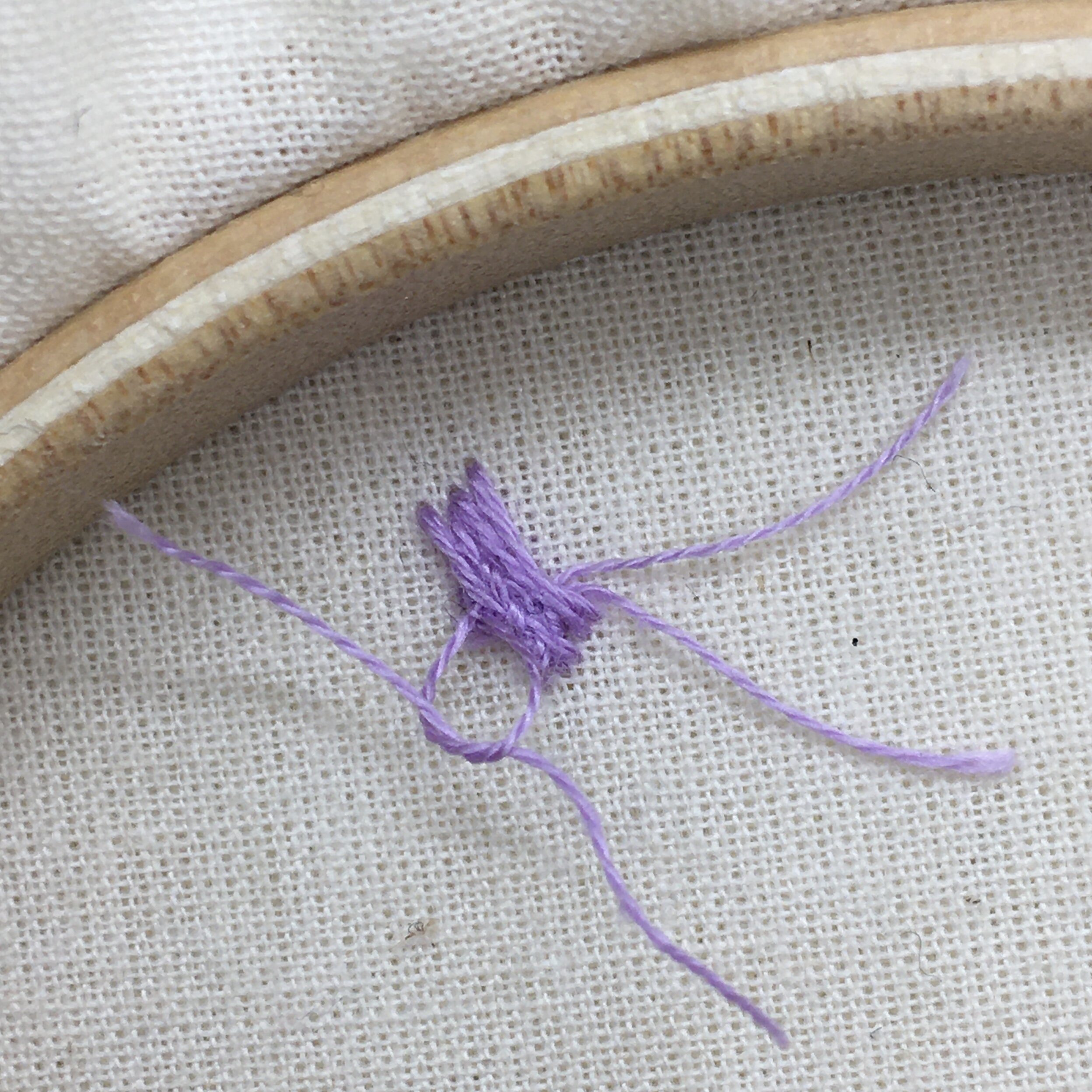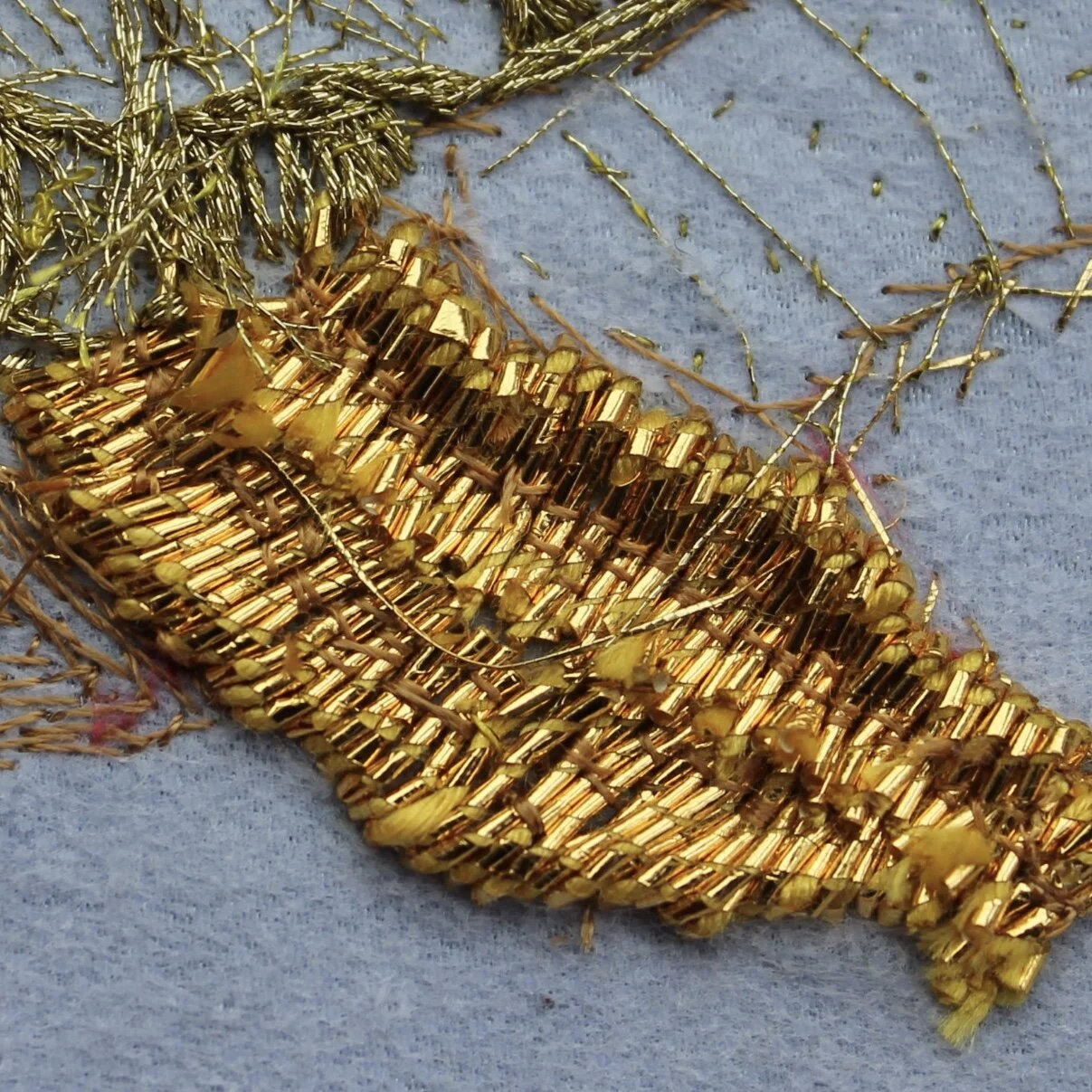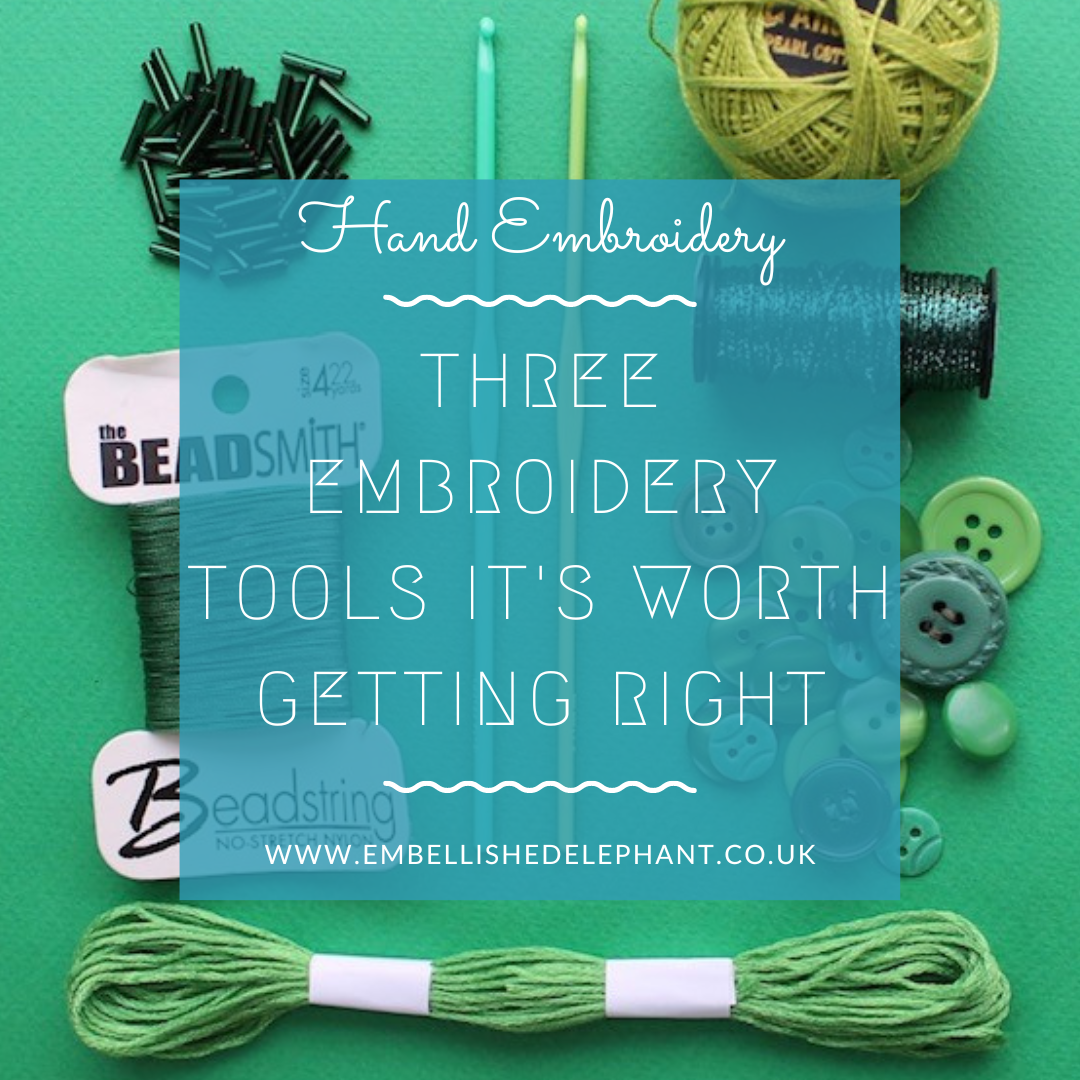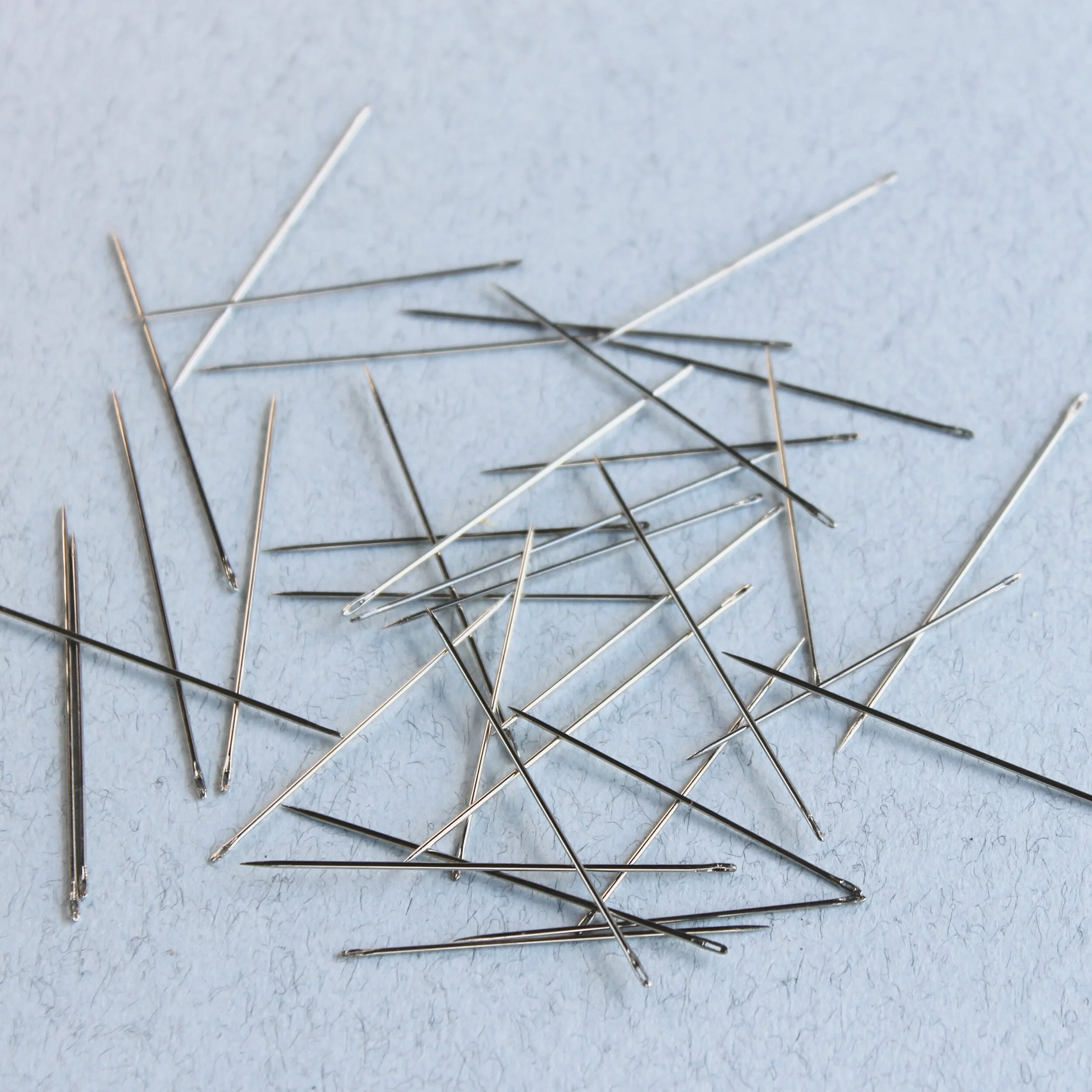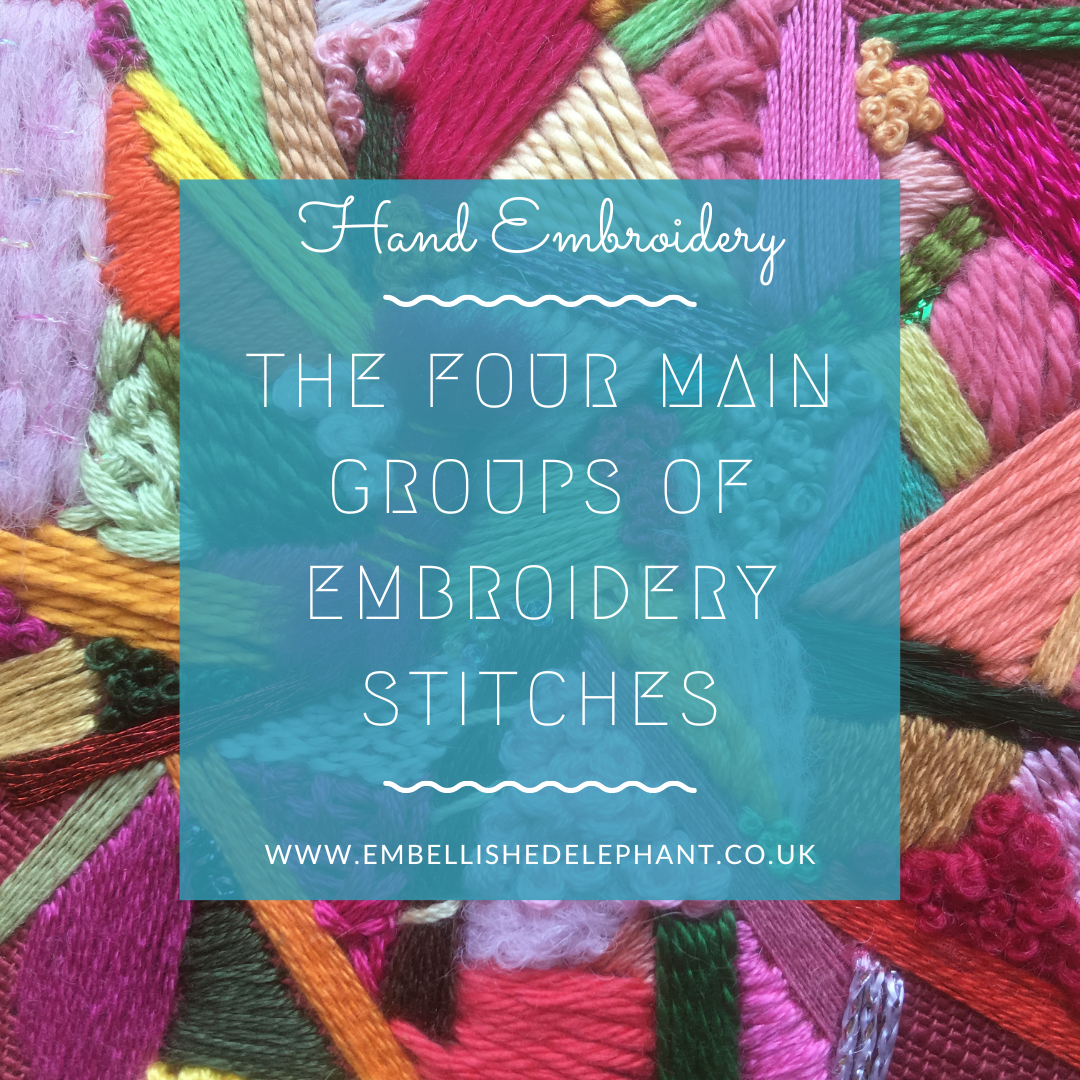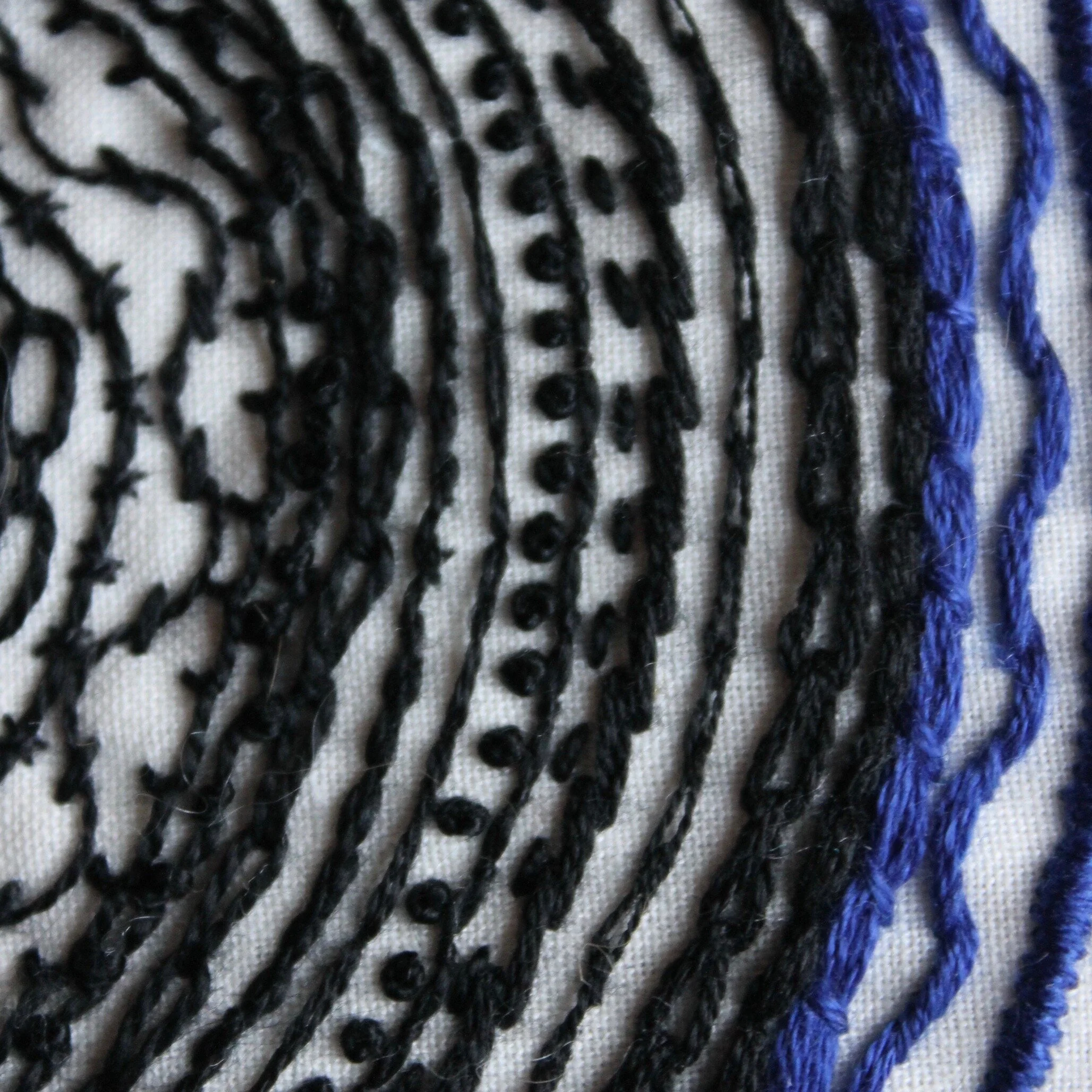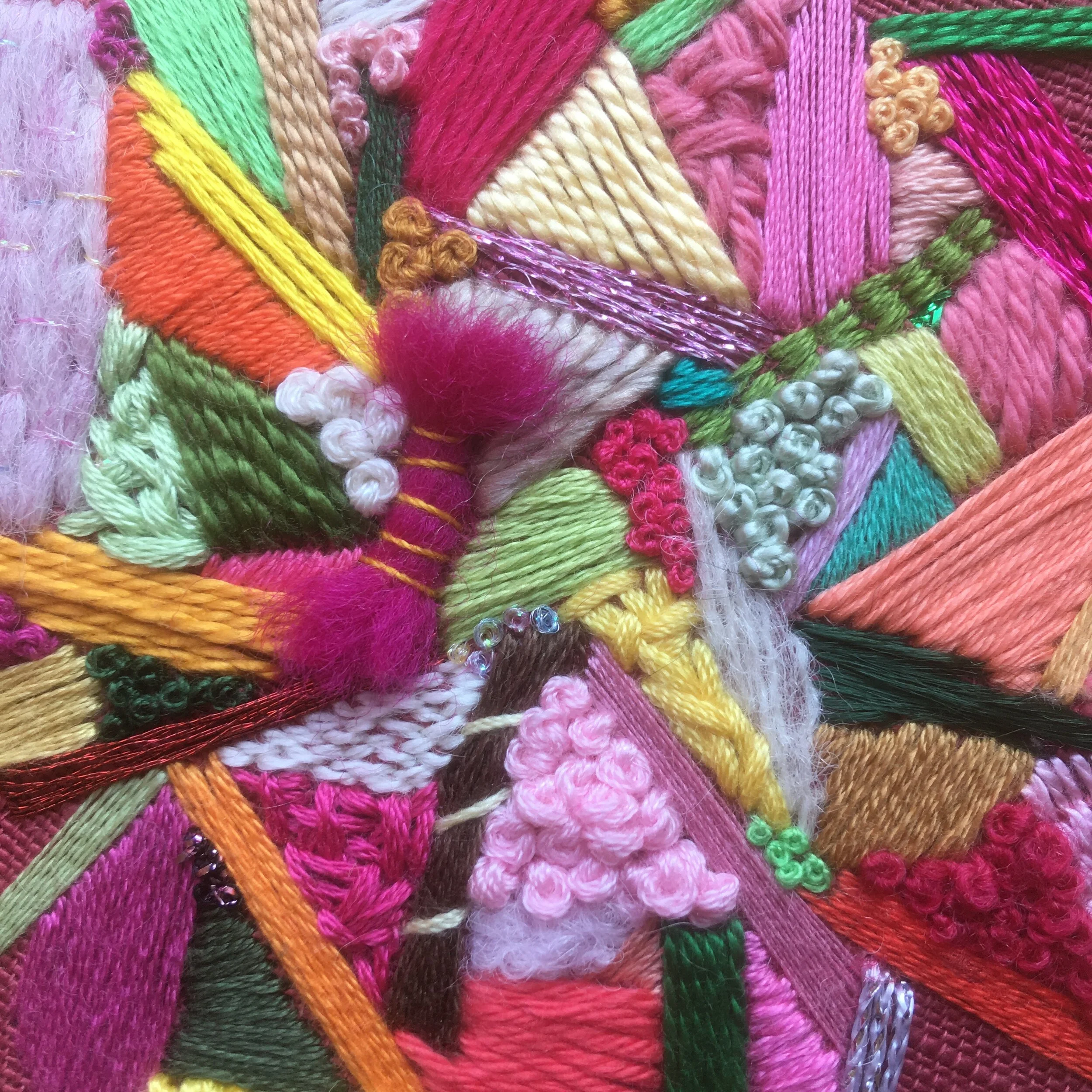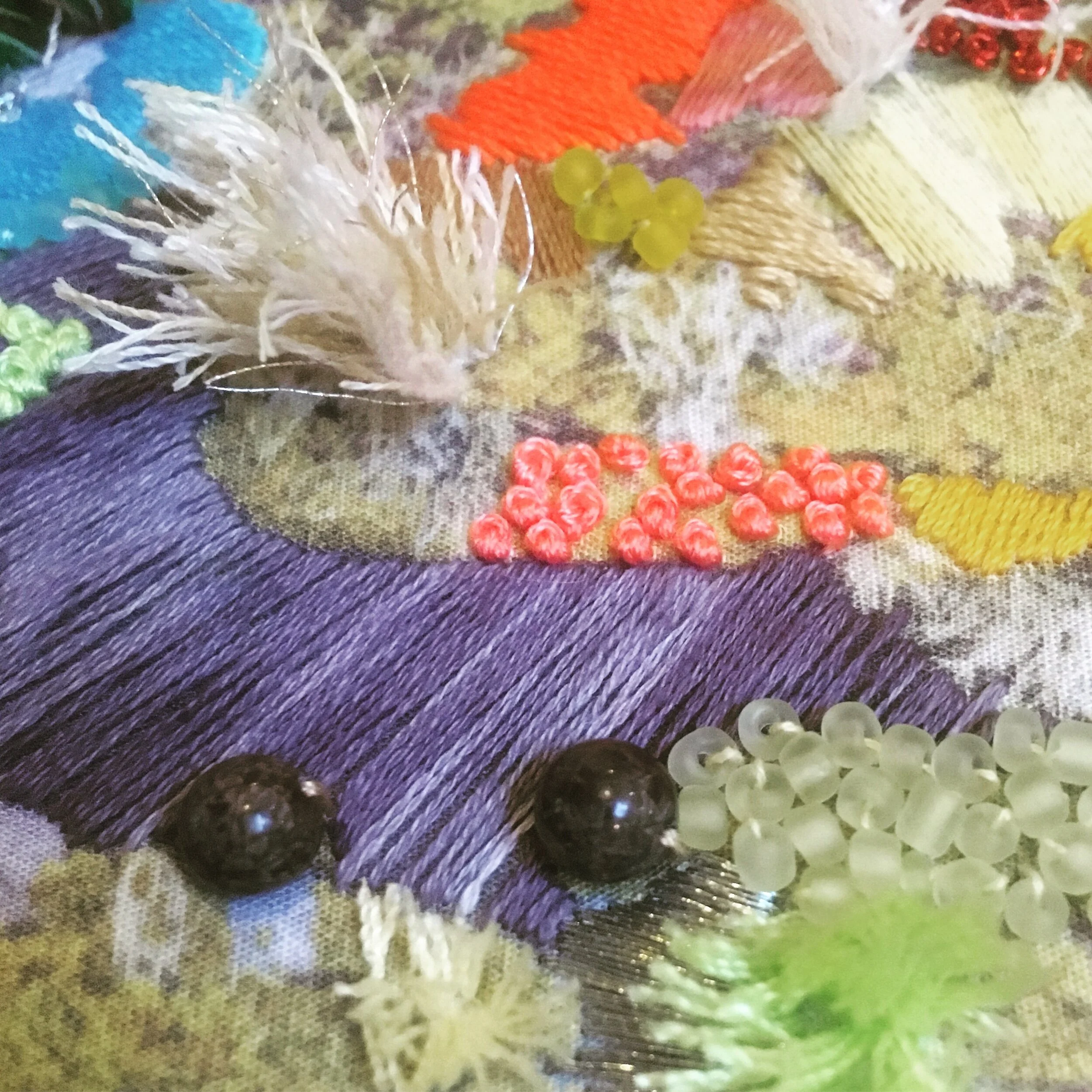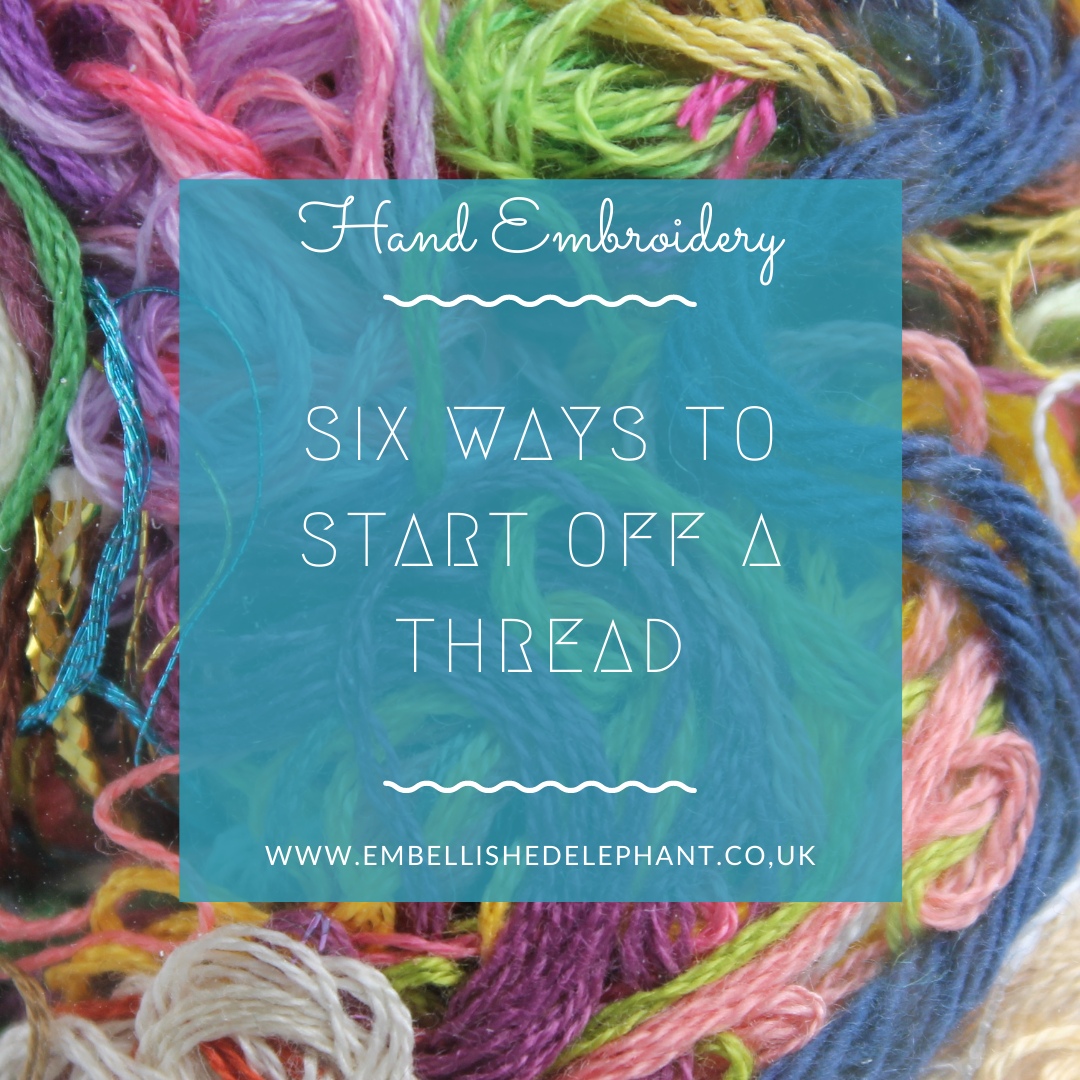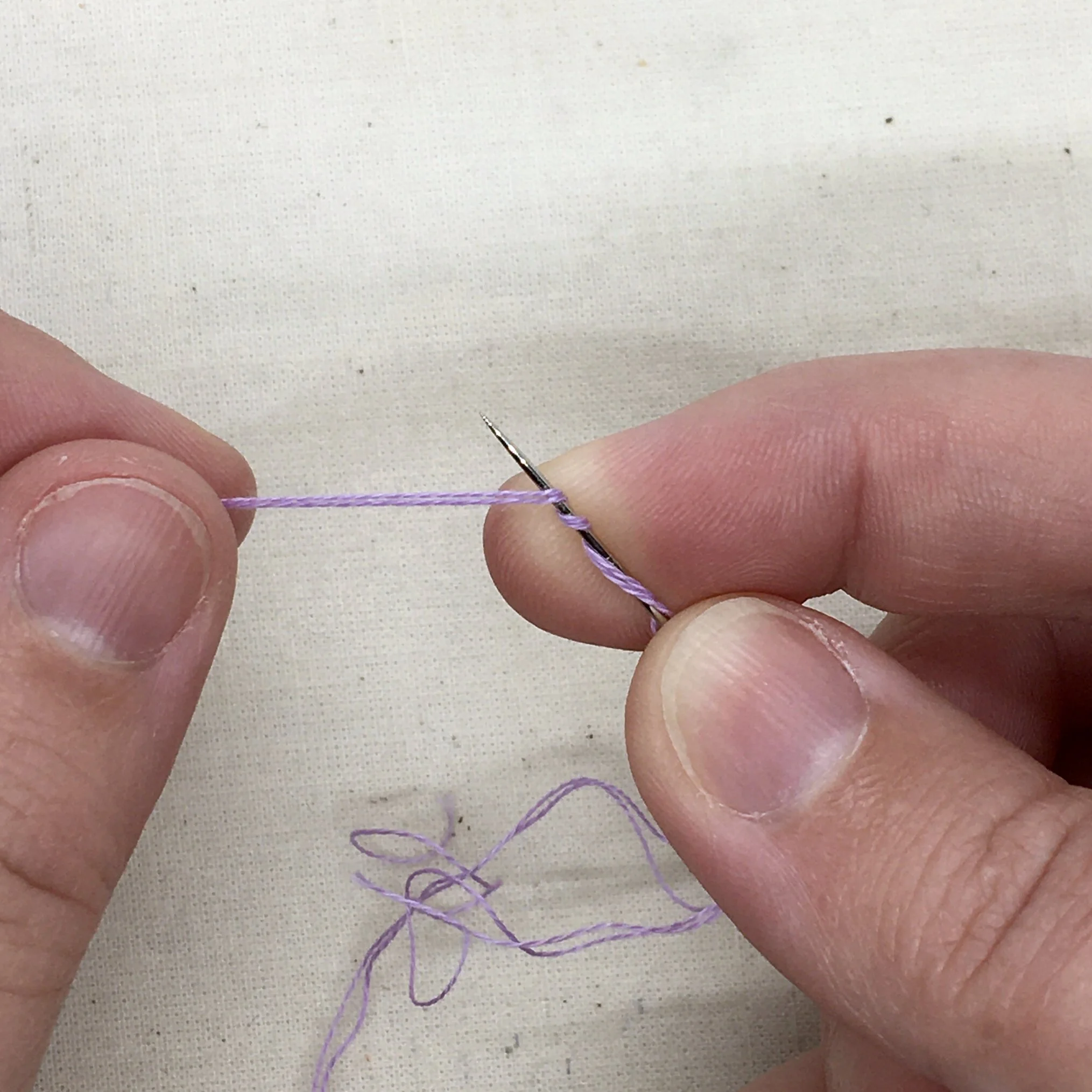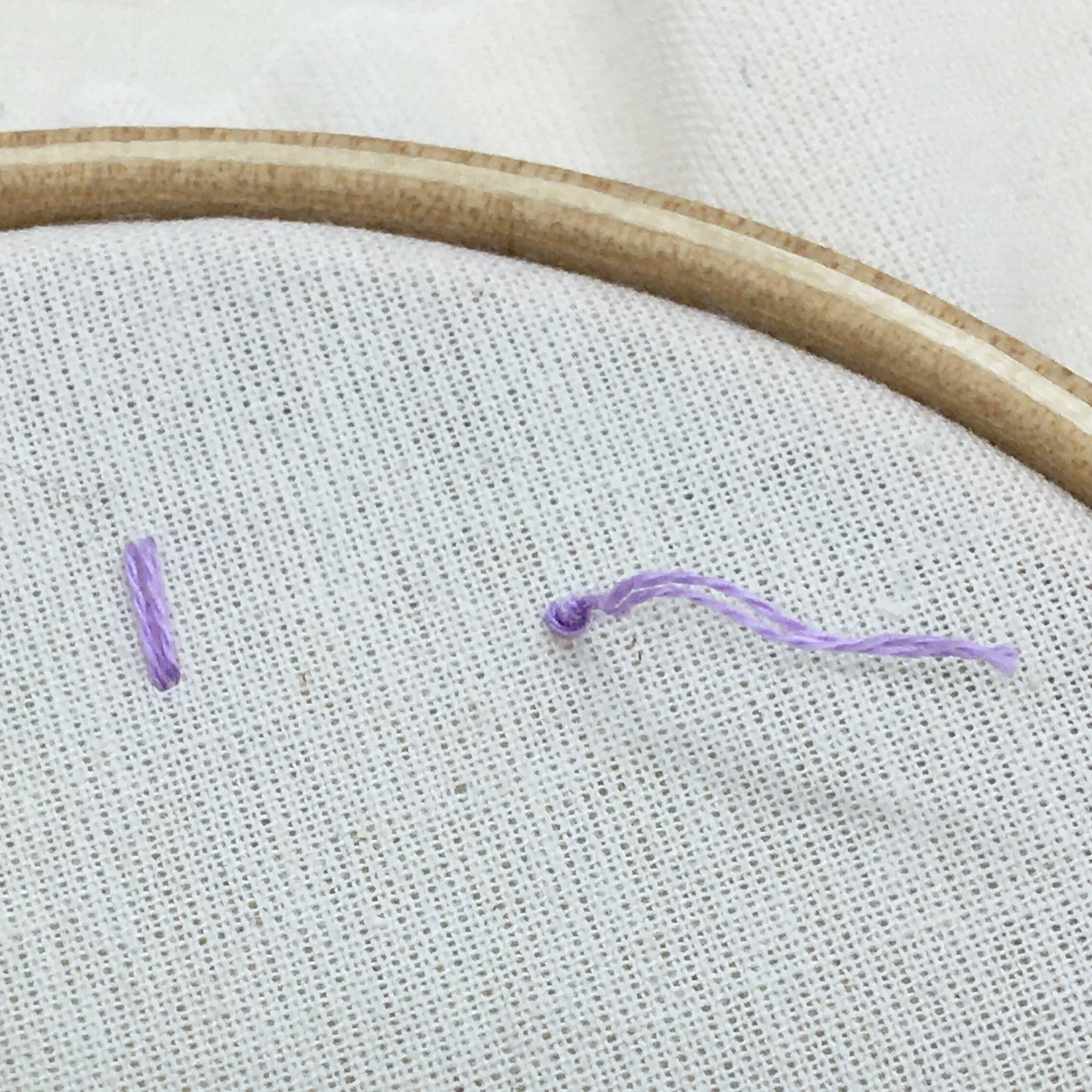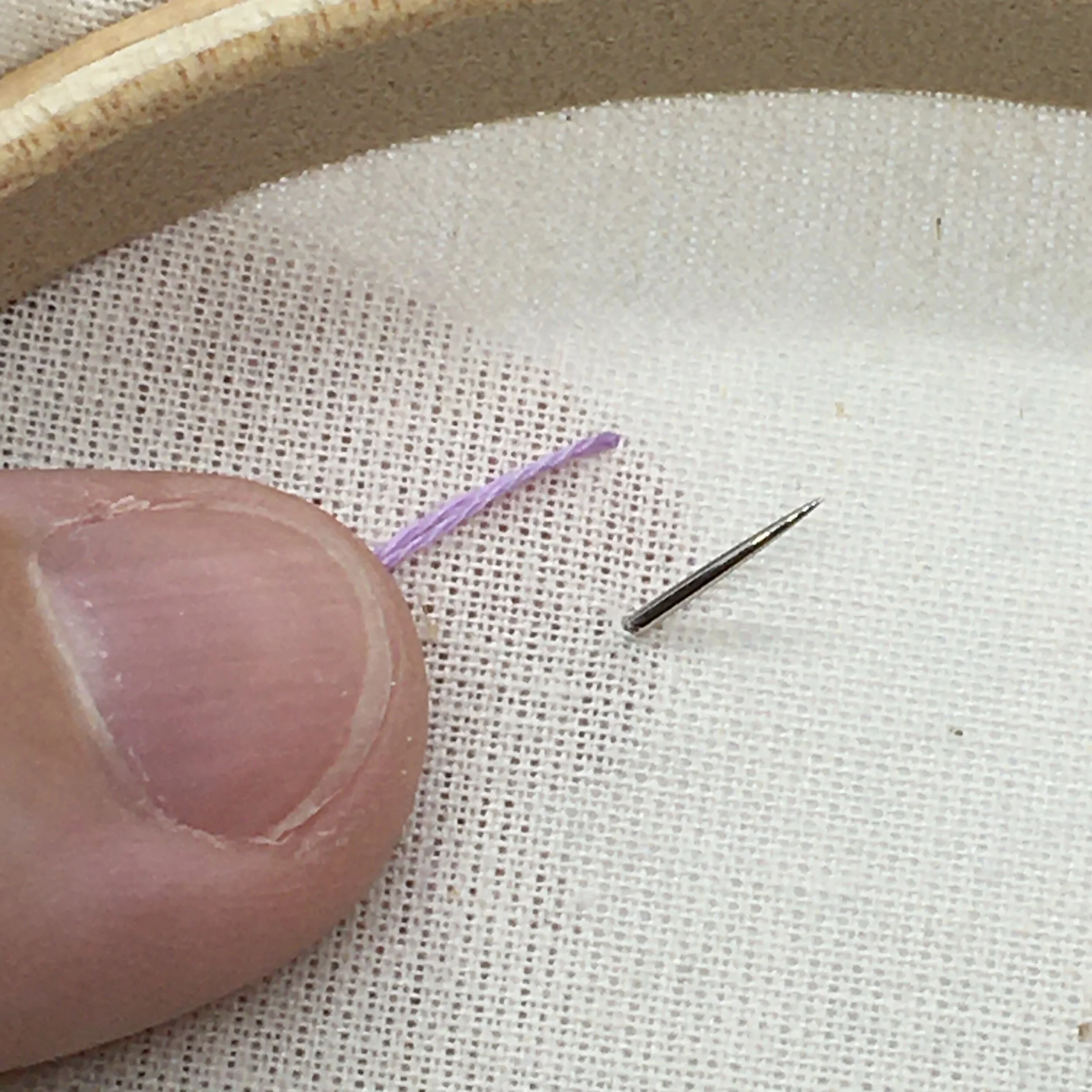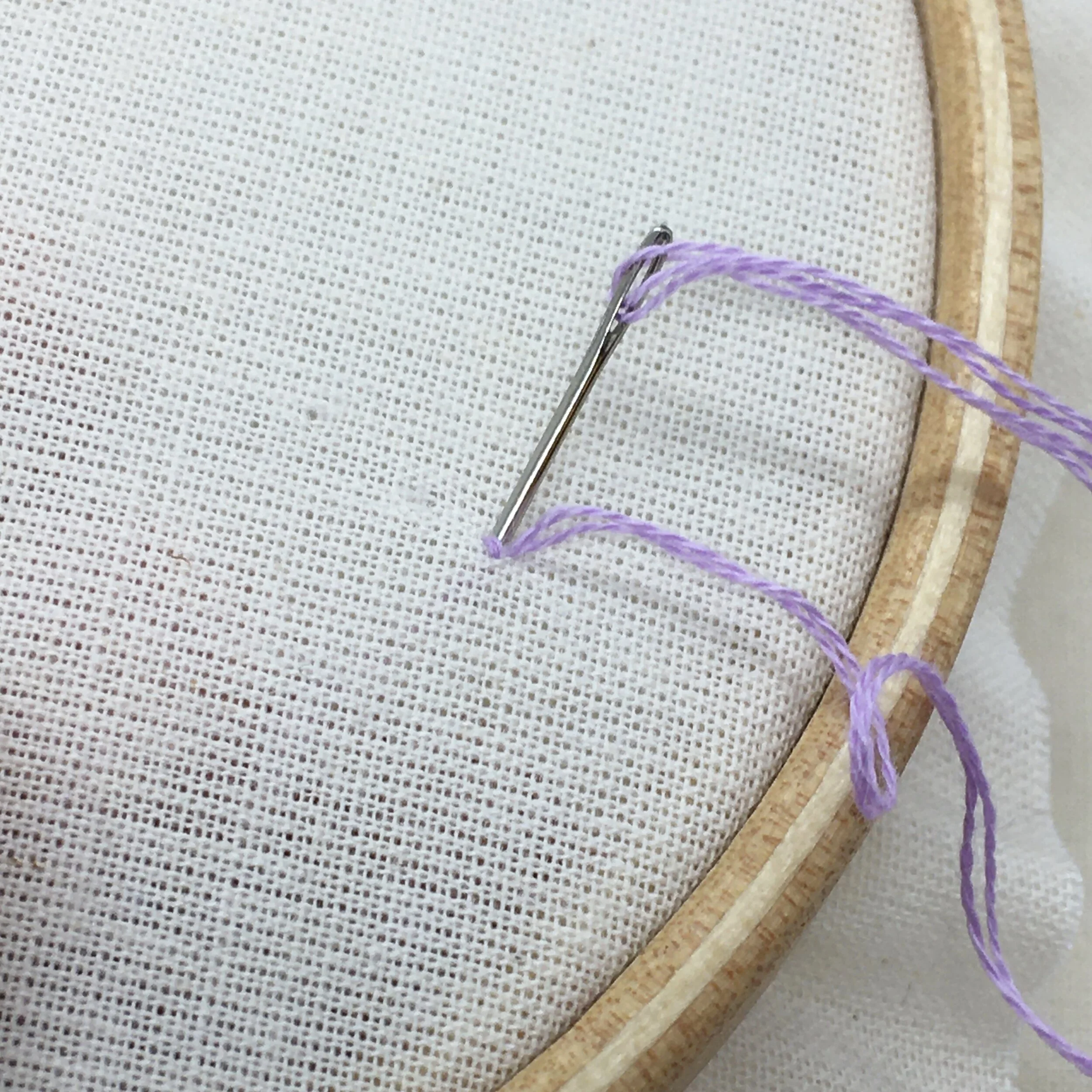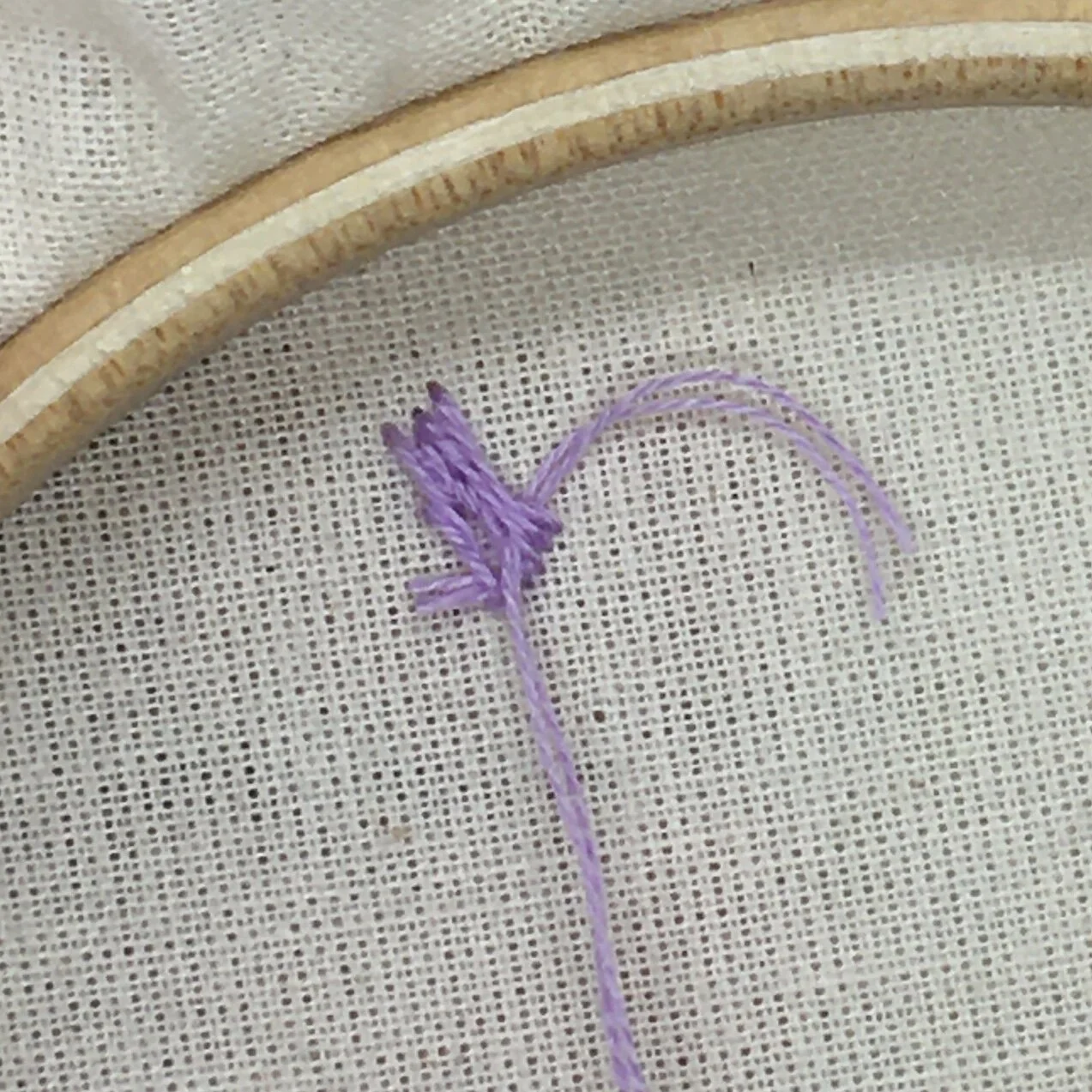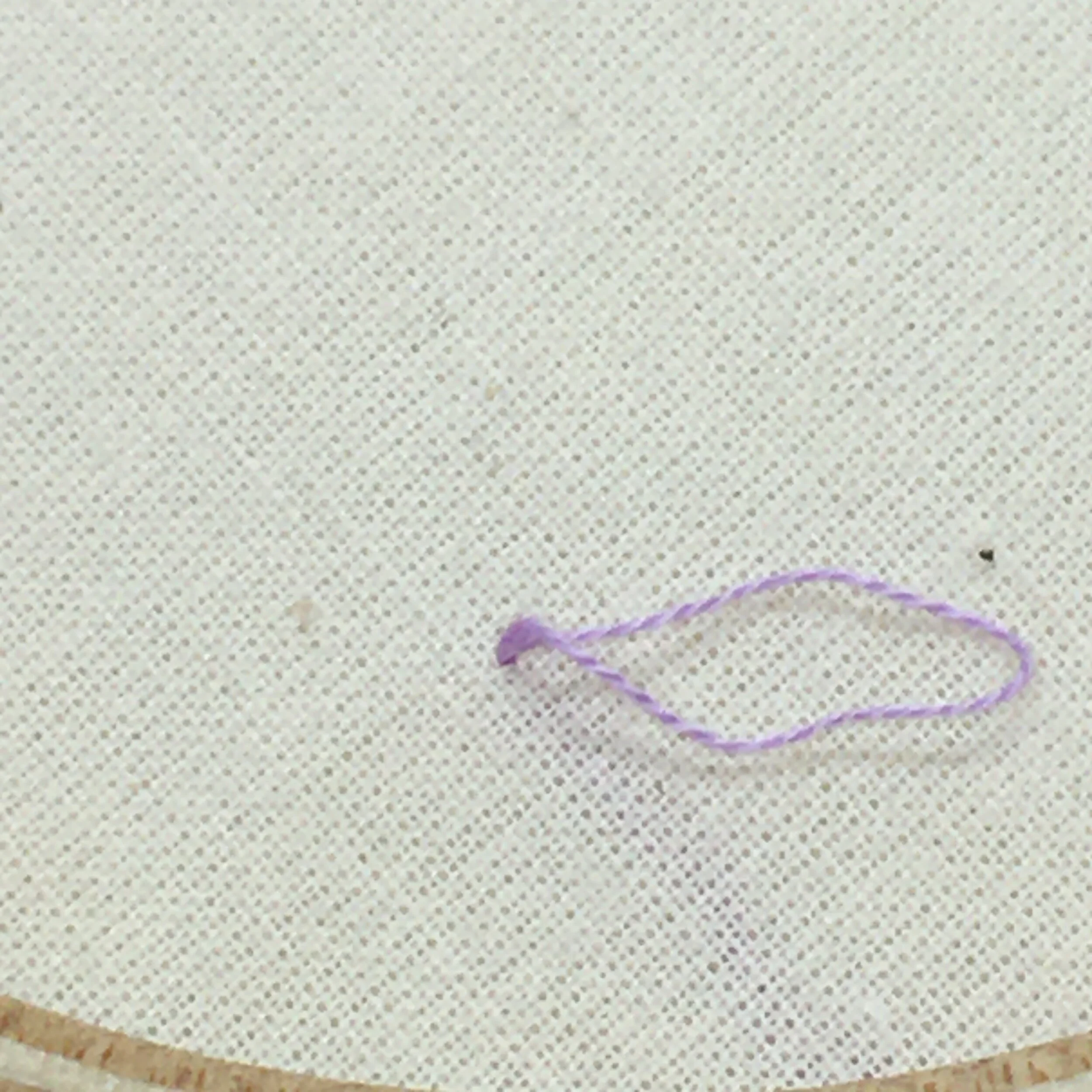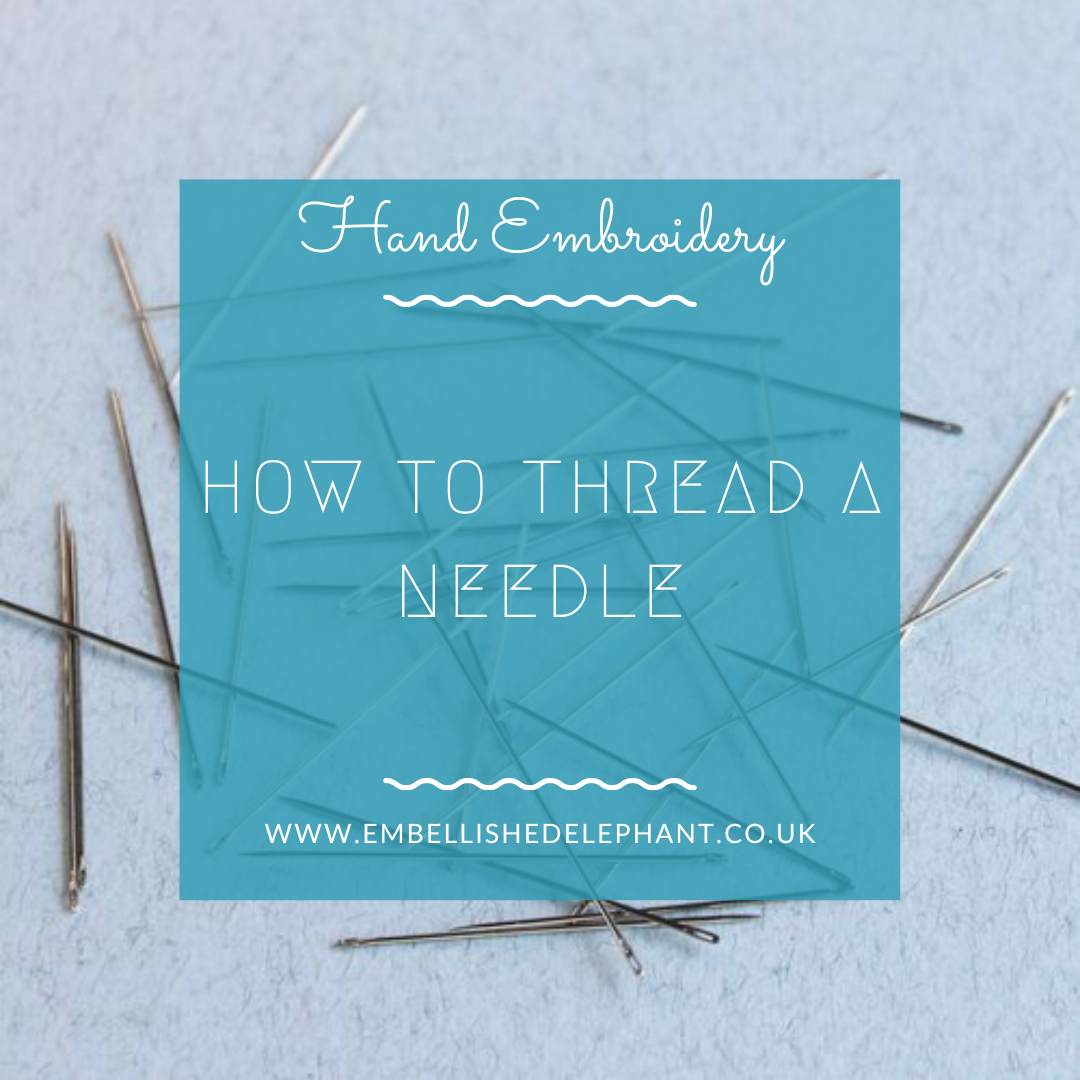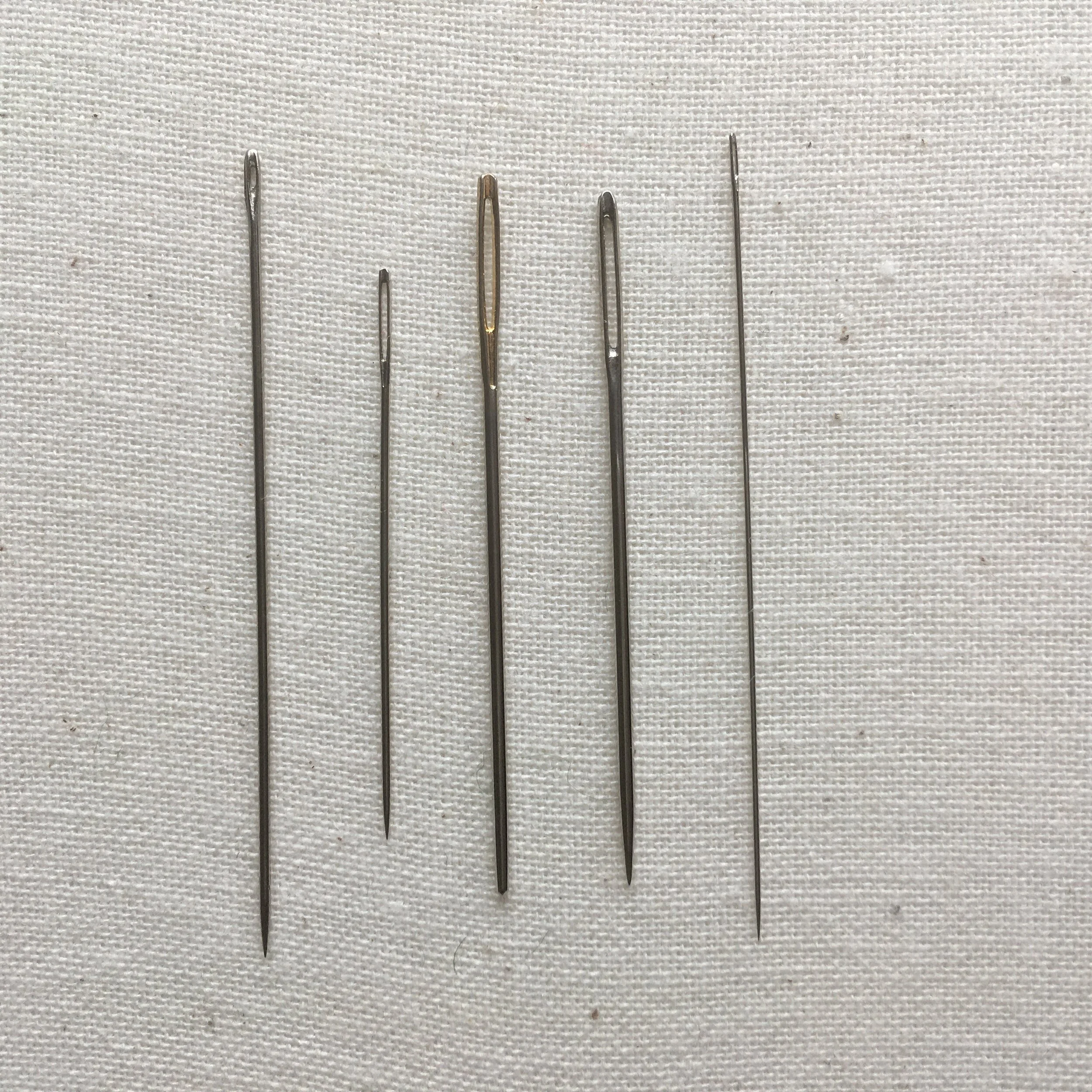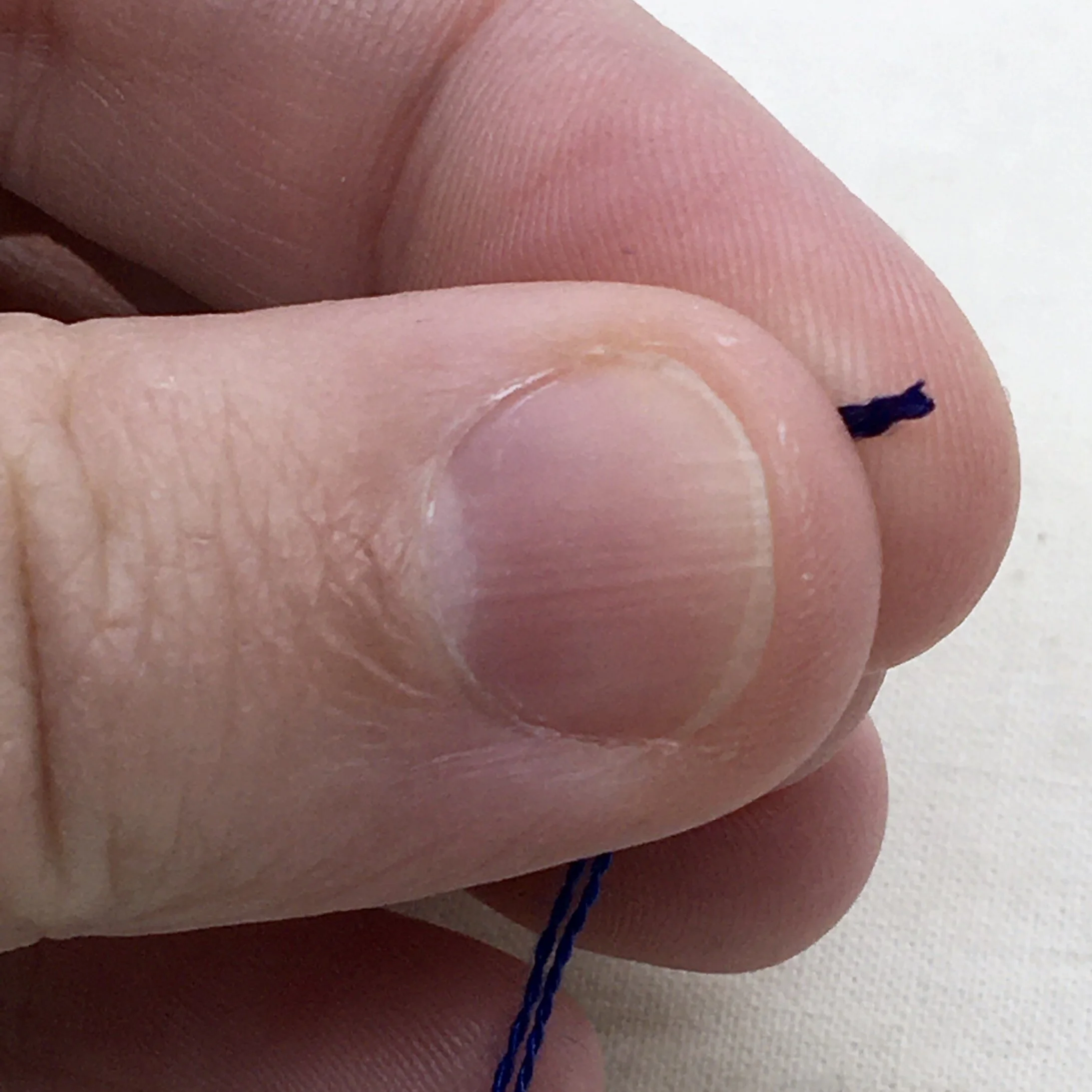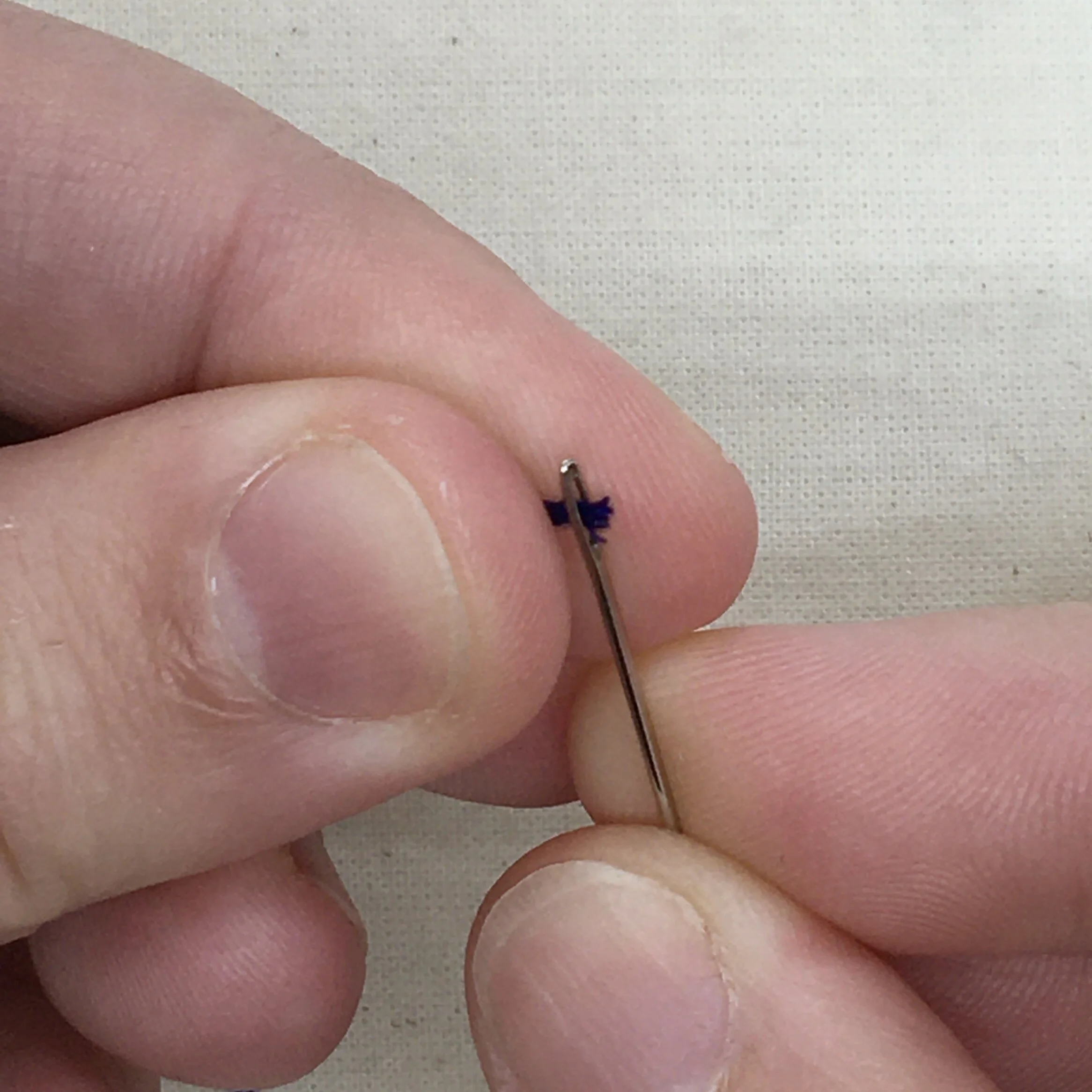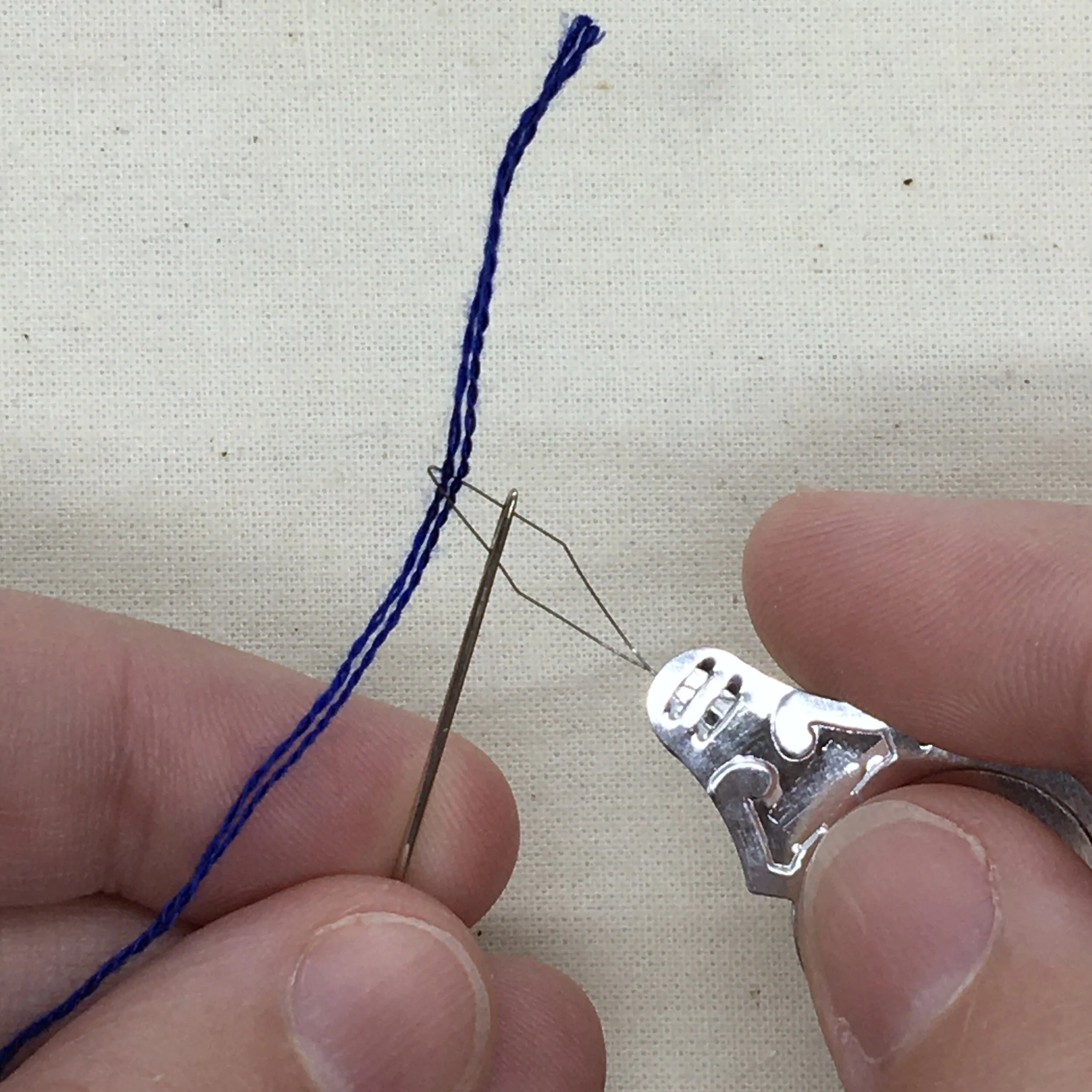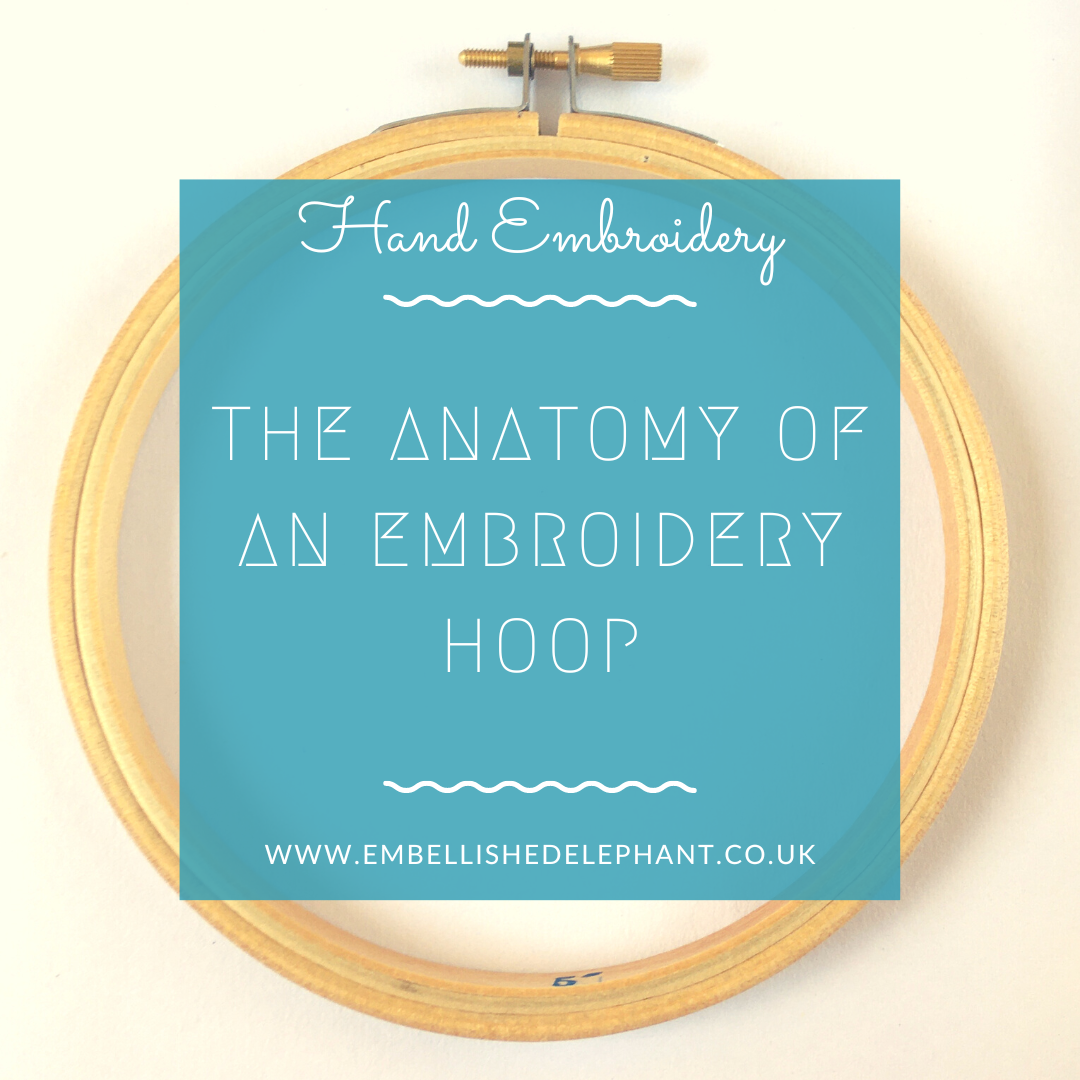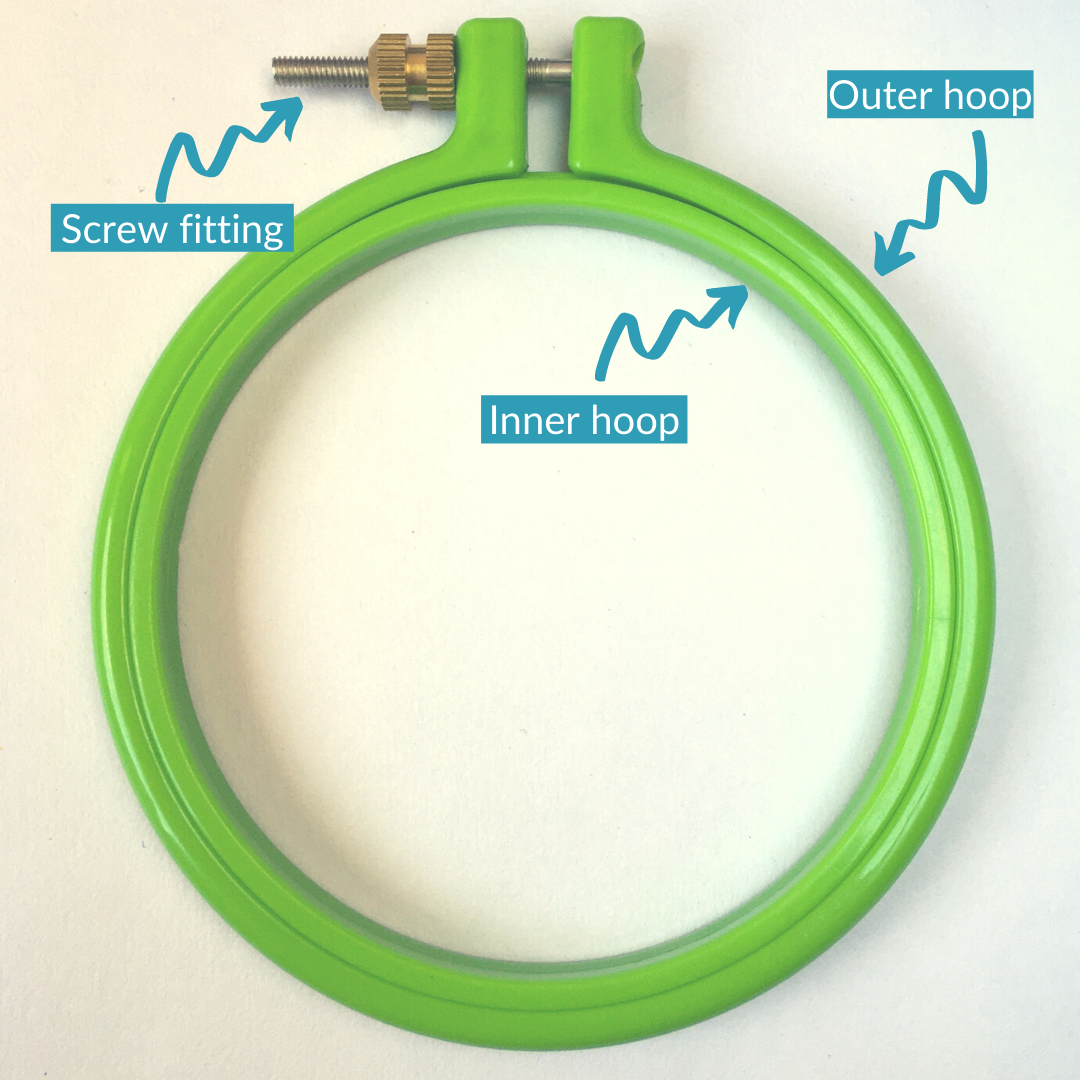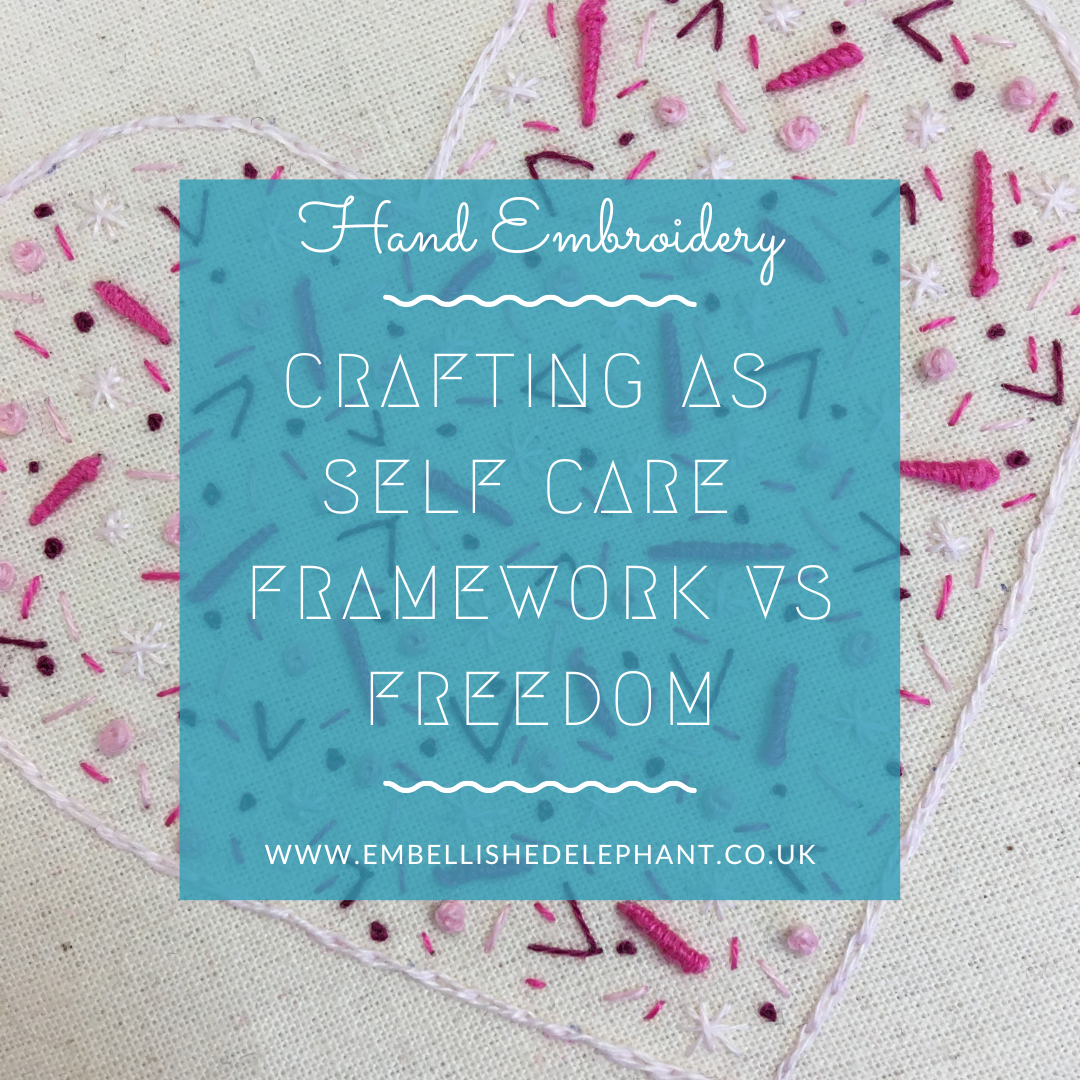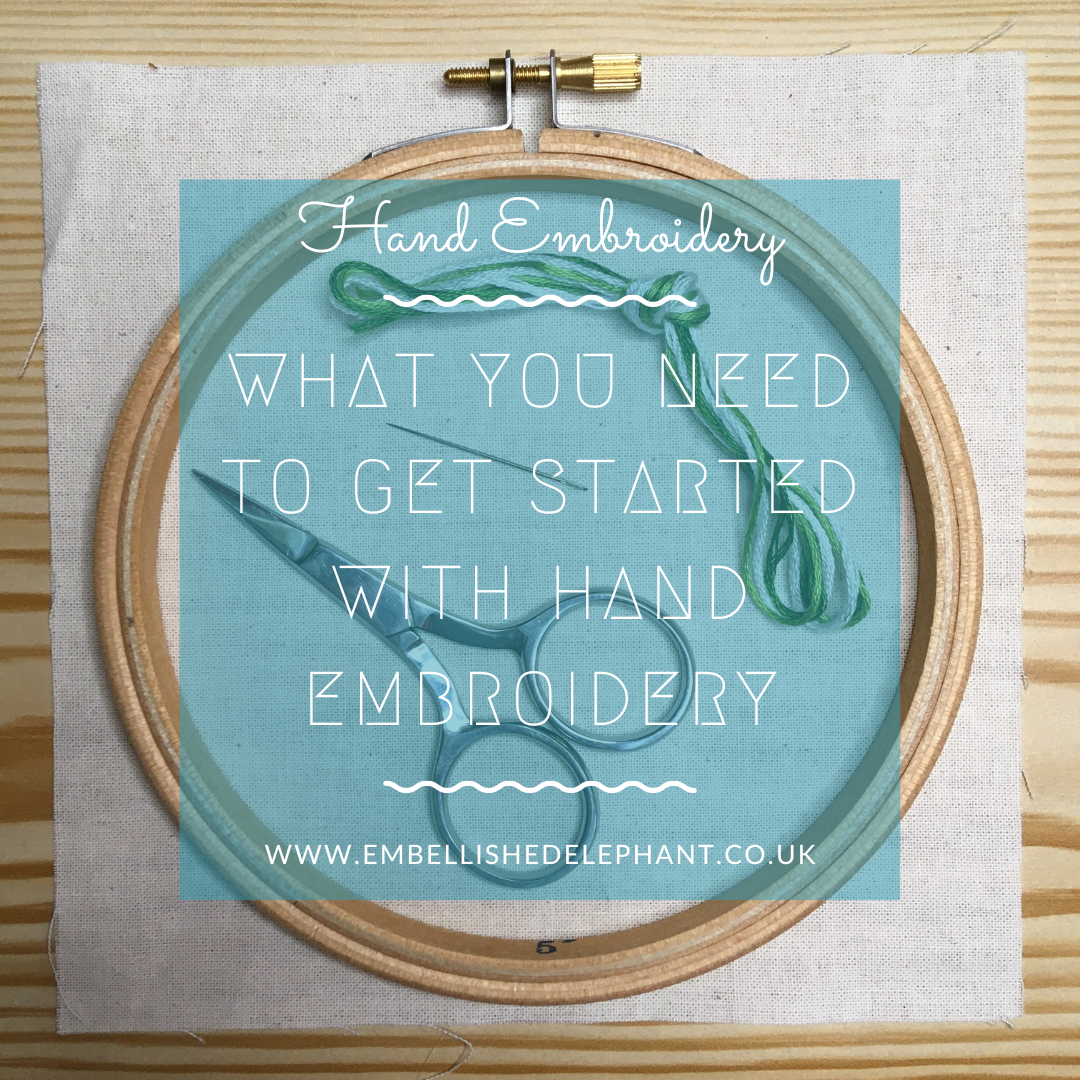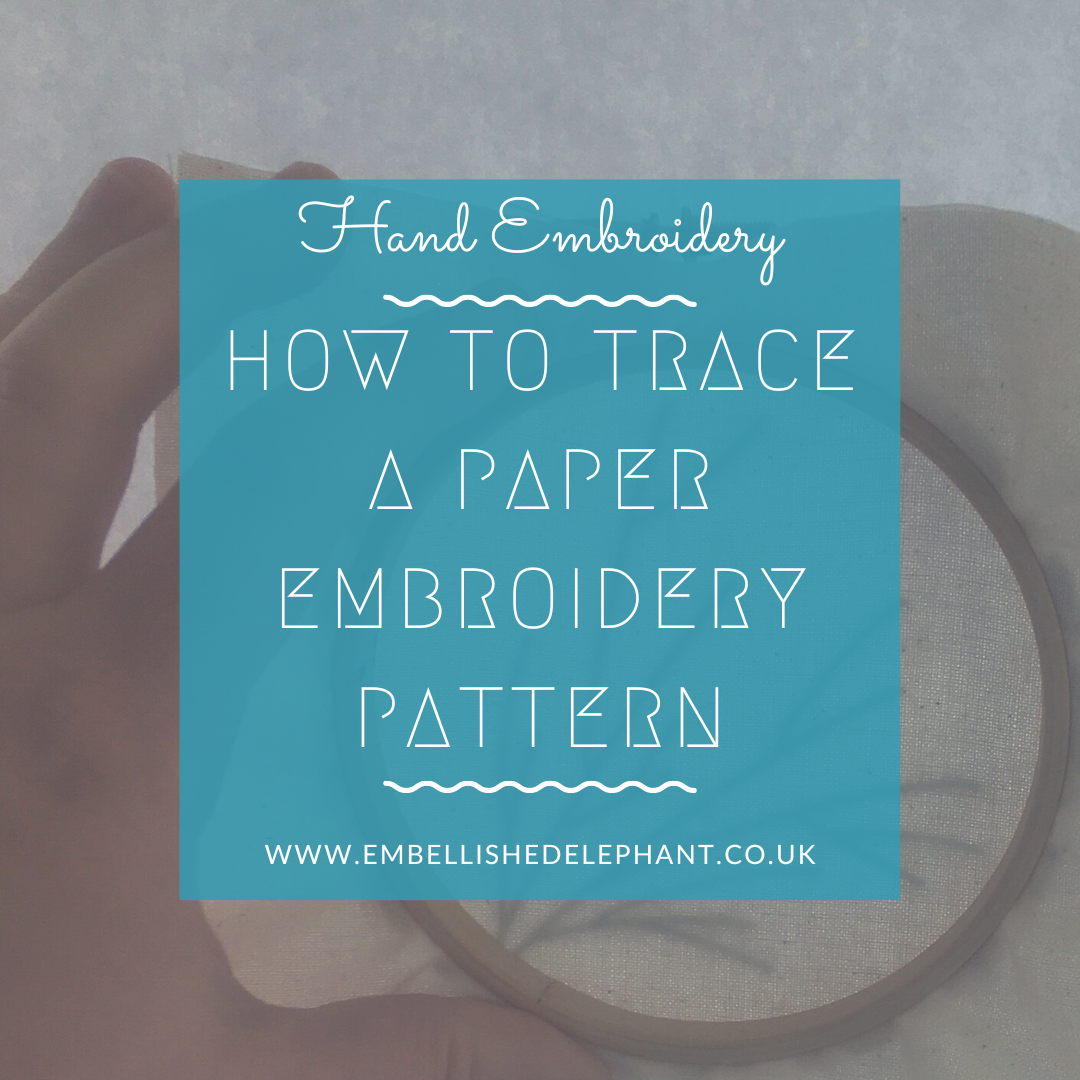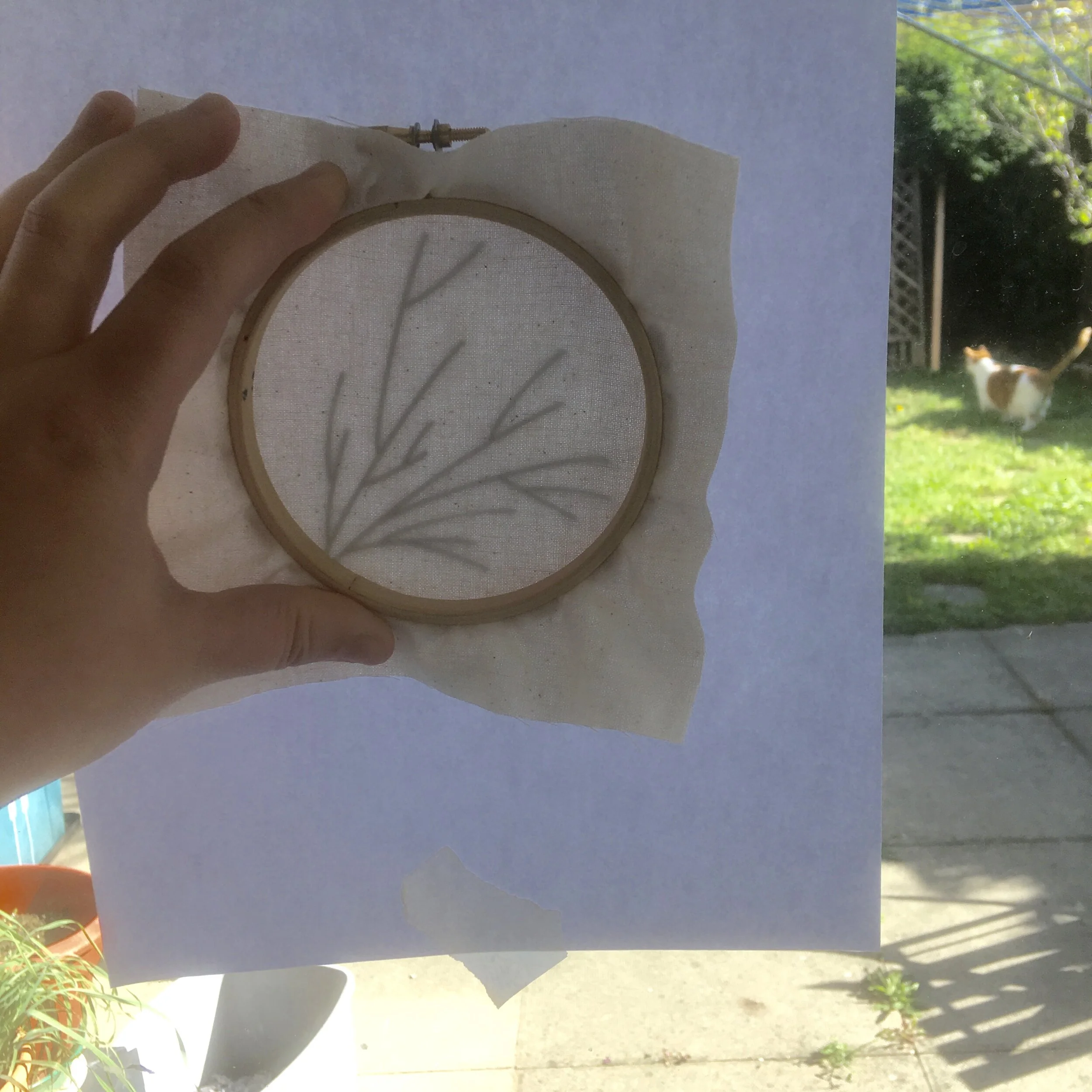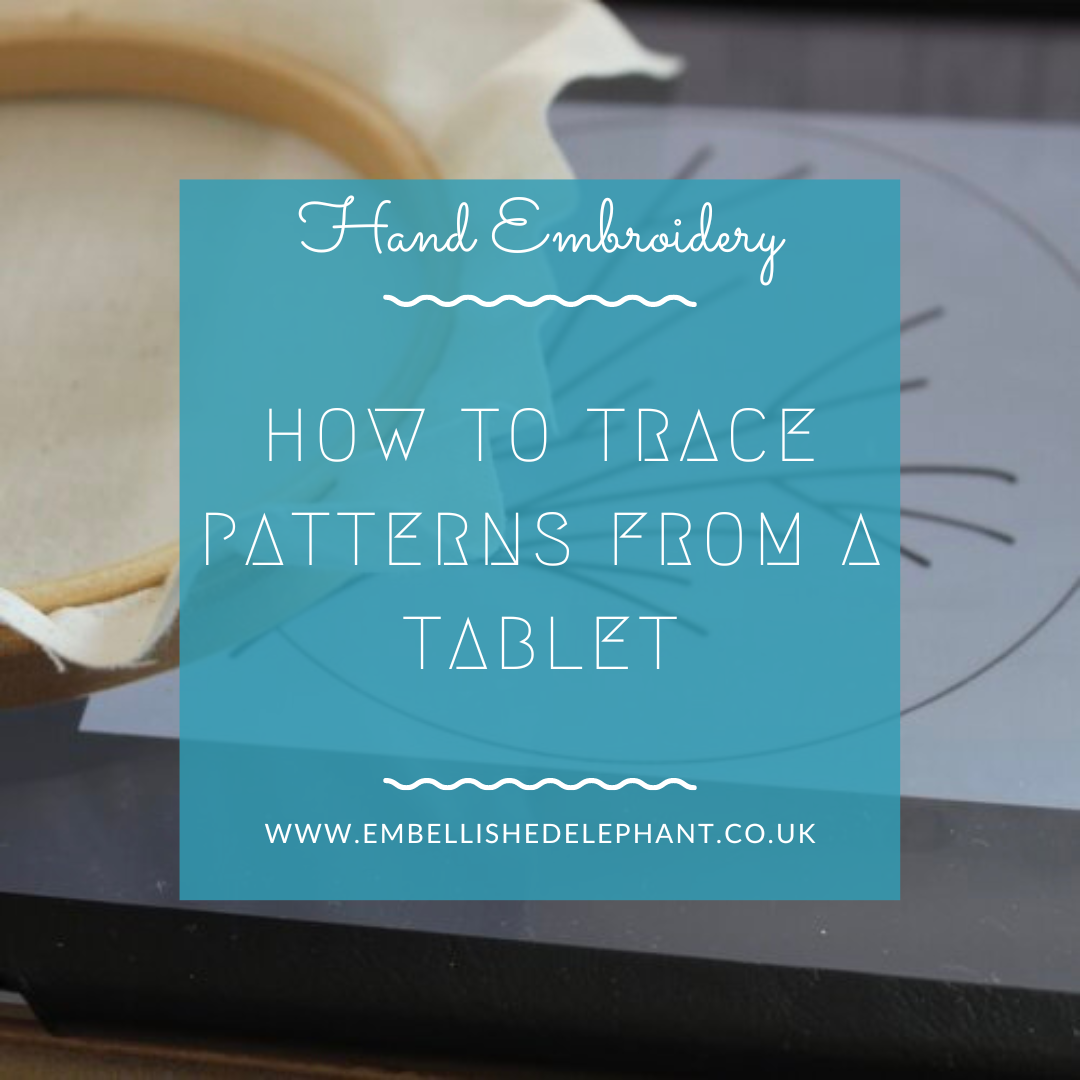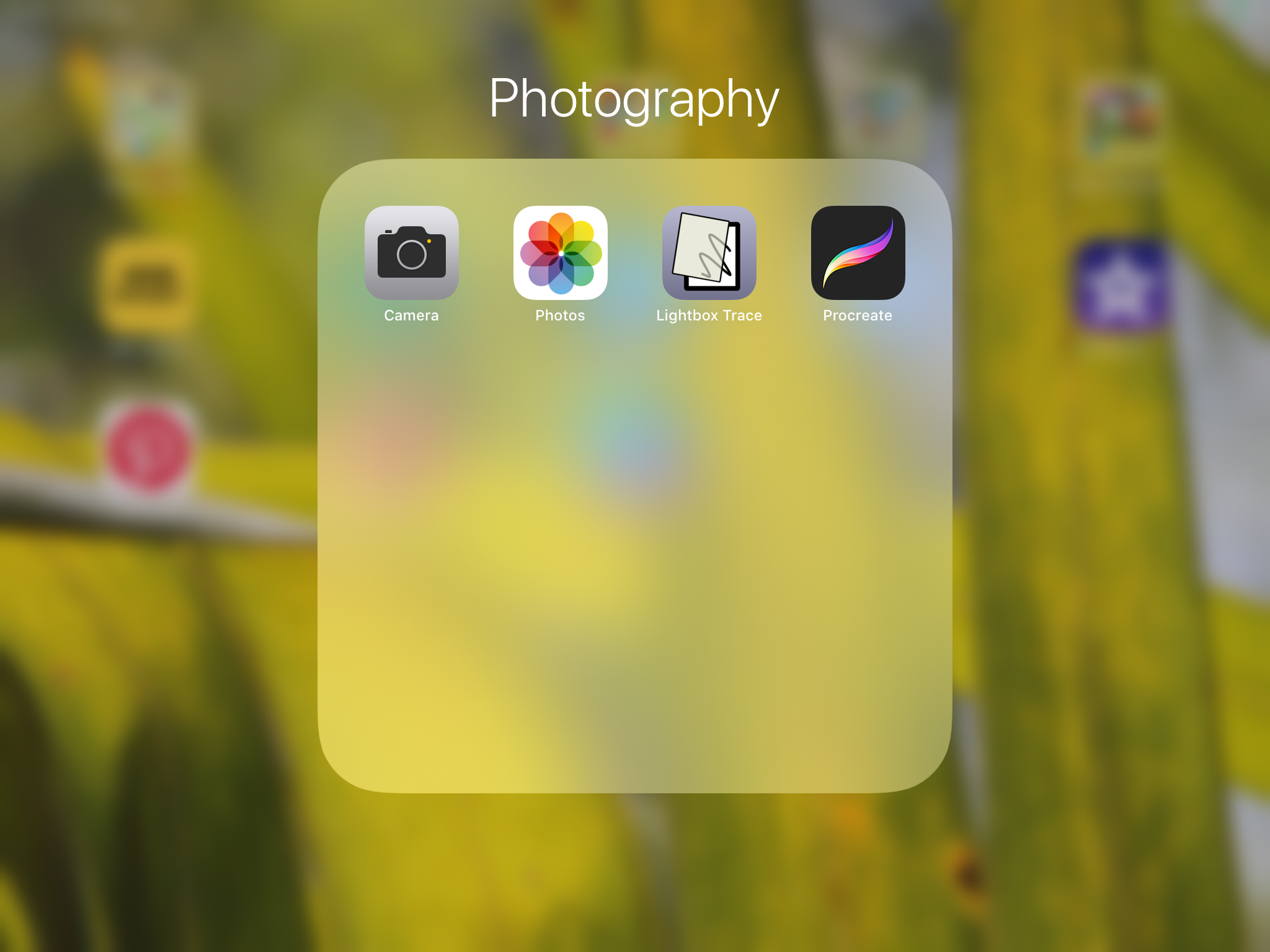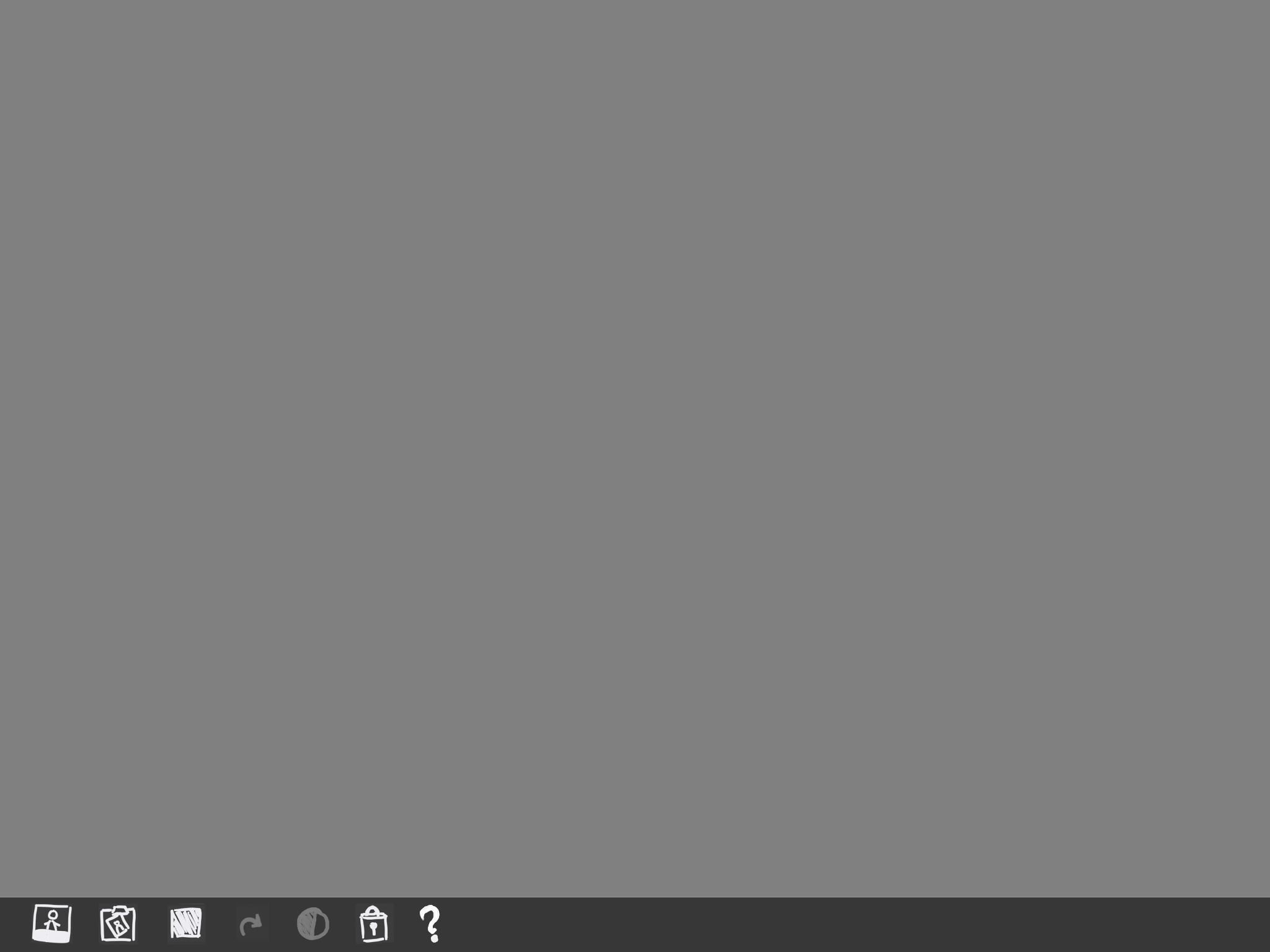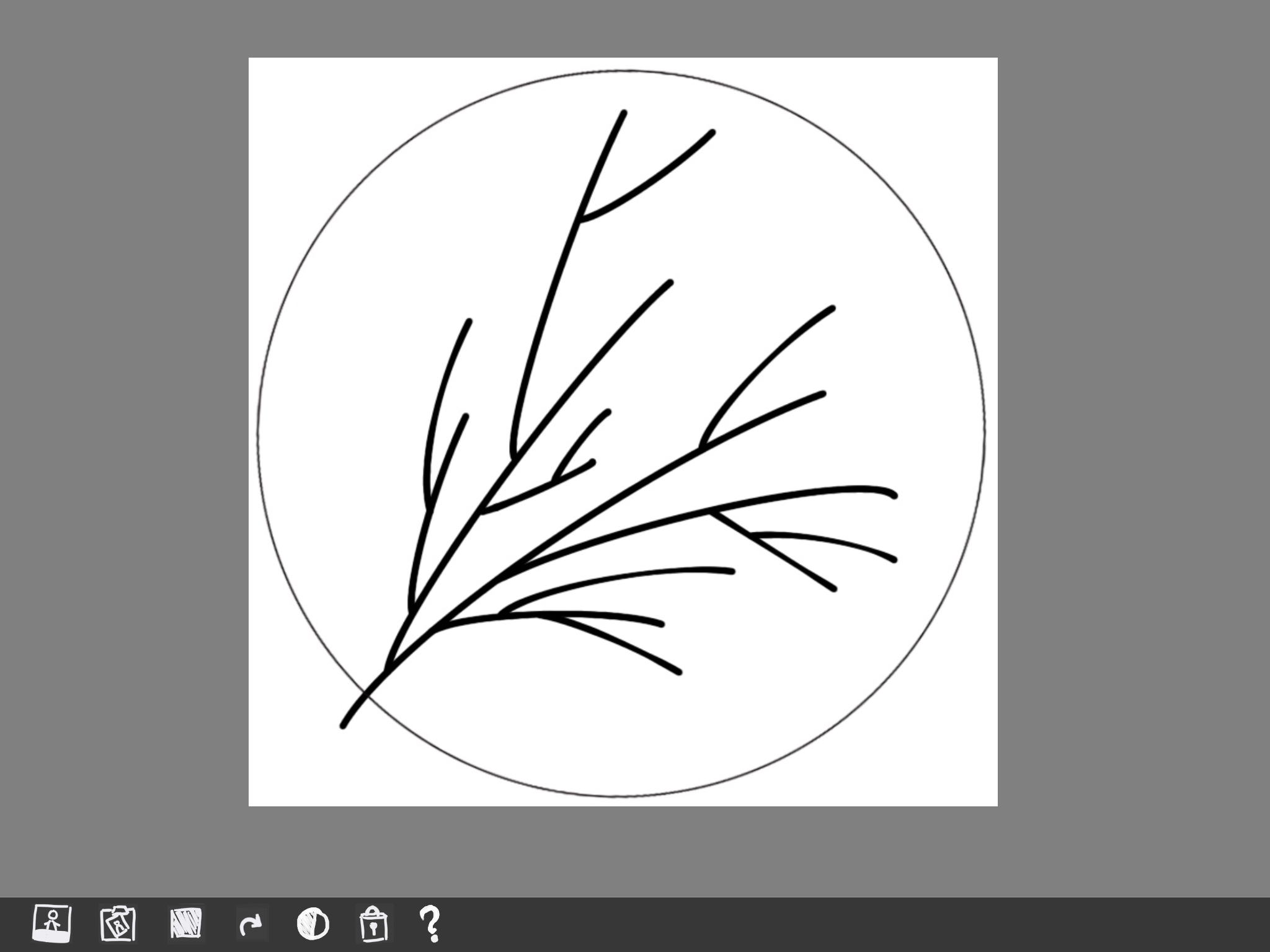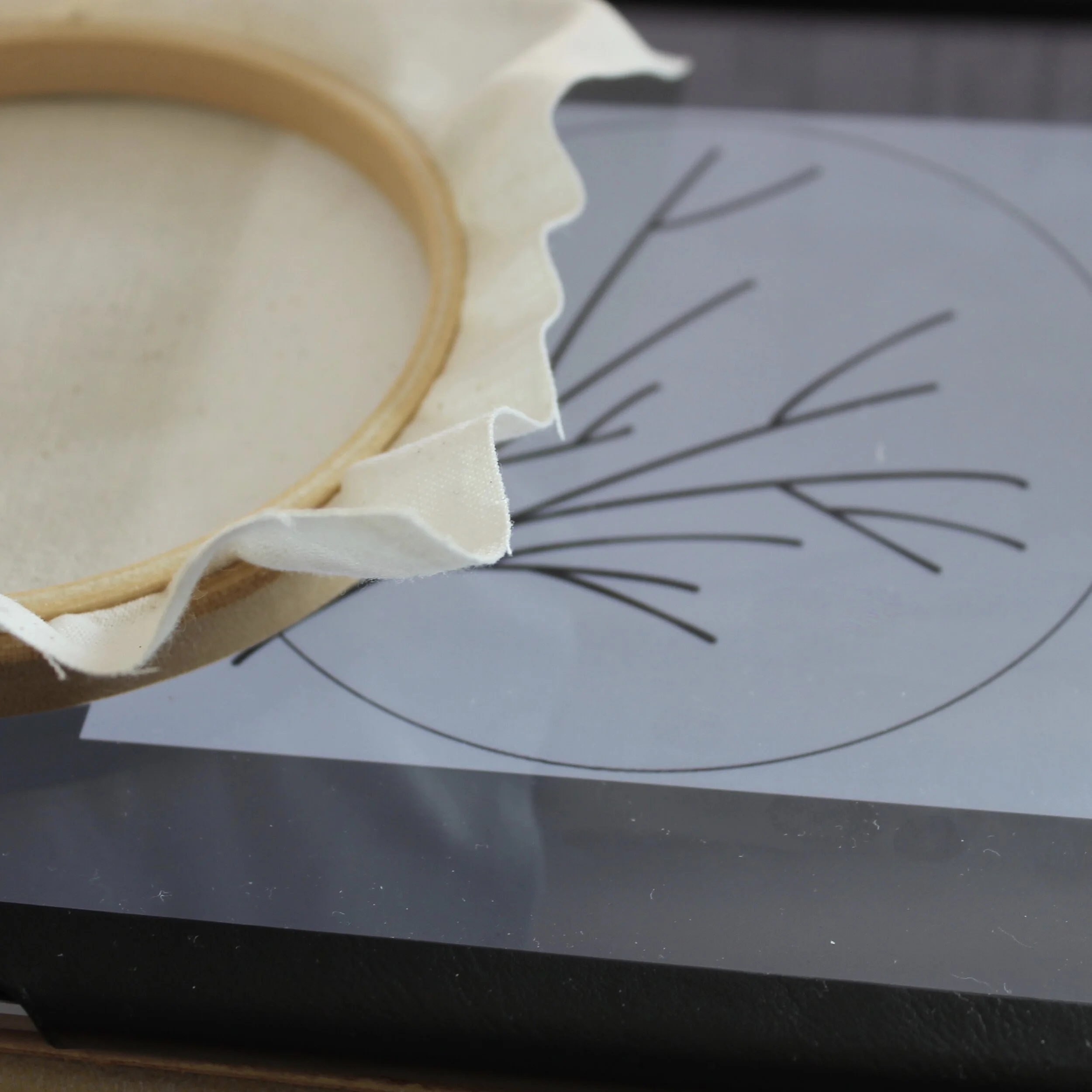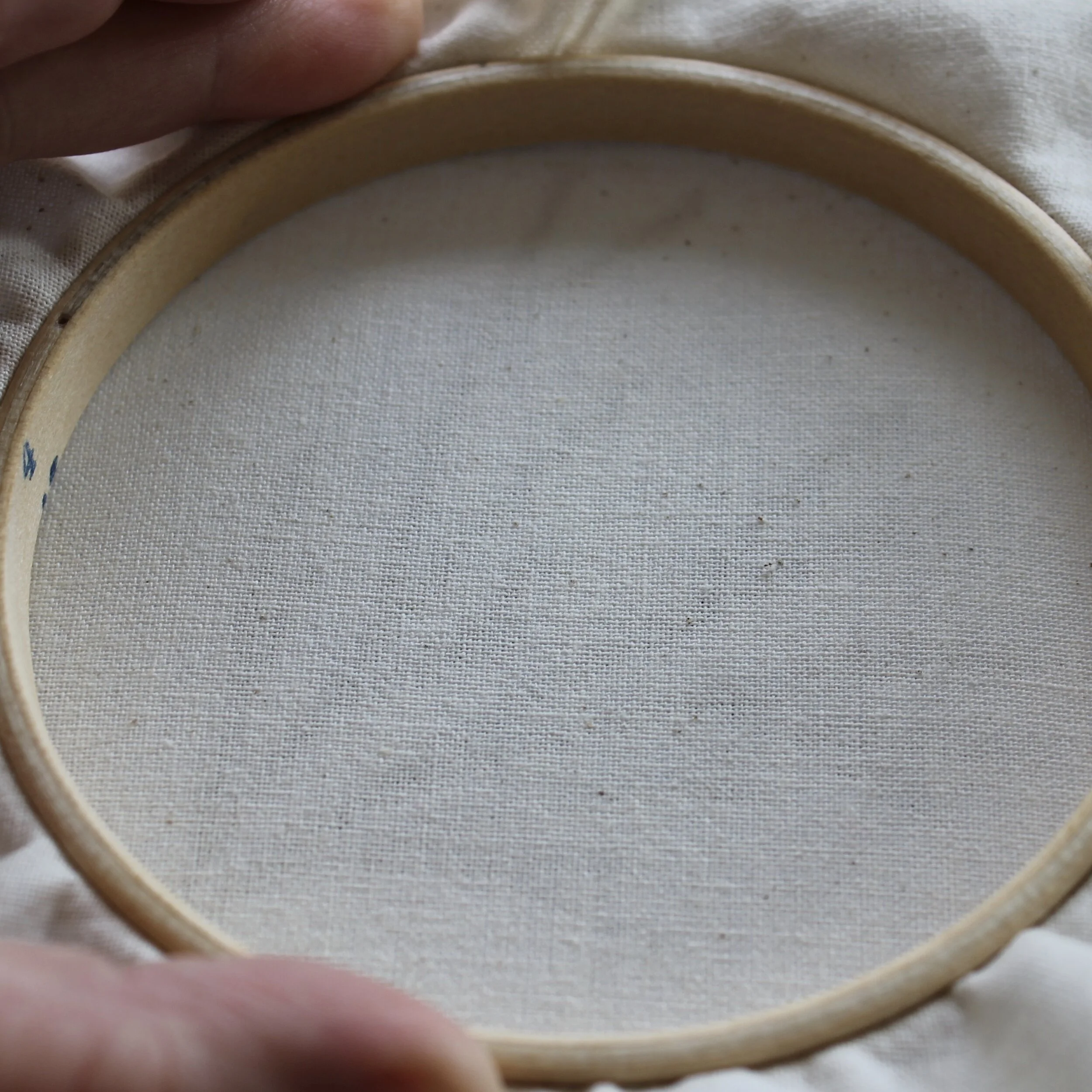Embroidery is a great craft to try as you don’t need much equipment to get started. But if you want to start stitching what do you need?
1. An embroidery hoop
For pretty much every embroidery project you will stitch (especially as a beginner) you will need an embroidery hoop. The hoop keeps the fabric taut meaning when you take your finished piece out of the the hoop the stitches will lie flat and the fabric won’t pucker.
2. Fabric
You need something to stitch onto. Woven fabrics are best to use as a beginner (rather than stretchy knit fabrics). If you are buying fabric then look for types such as cotton, calico. I started my embroidery journey stitching onto some cut up old shirts. You don’t have to stitch to neutral colours - pick any colour that makes you want to stitch, you could even stitch onto patterned fabric.
My favourite fabric to stitch onto is lightweight calico as it has a bit of stability to it and the needle slips easily through.
3. A pattern
You don’t necessarily need a pattern to start embroidering, you could just create a stitch sampler to try out different embroidery stitches.
I recommend for beginners to start with a pattern that you love and just have a go. There are so many embroidery patterns out there both free and paid for. I started embroidery when I saw a pattern from Sarah K. Benning and loved it so much I just had to stitch it. I paid for that pattern and I encourage you to support embroidery artists by buying patterns from them if you can. The benefit of a paid pattern is that they tend to come with stitch guides and other support.
But there are plenty of free patterns available - take a look at my free patterns. Also DMC (makers of embroidery floss) have a huge archive of free patterns as well.
So pick some that you like and download them and see if they give you the support you need.
4. A pencil or air/heat/water erasable pen
To start stitching your chosen pattern you need to transfer your design onto your fabric. It isn’t as complicated as it seems and I have a couple of blog posts to help you transfer a digital pattern and to transfer a paper pattern. If this part fills you with fear then take a look at my floral and sunflower kits as the pattern is printed directly onto the fabric.
5. Floss
Most traditional embroidery is stitched with 6 stranded embroidery floss. The pattern that you pick will often tell you which brand of floss was used and the colour code.
You don’t actually need to use the exact colour or brand that is suggested in the pattern. My first embroidery I created using floss I’d bought from the £1 shop. Yes the floss quality can be variable and a bit fluffy rather than smooth and silky. But this is your first piece of embroidery - it isn’t going to be perfect.
If you want to stitch with the branded floss then go for it! Got some other types of thread such as sewing cotton or thin yarn, you could give them a try too. The key is just to start and see how it turns out.
6. Needle
Got one of those free sewing kits you picked up in a hotel back years ago? You can use the needle from that or any other needle you’ve got lying around as long as it’s got a pointy end (if you do cross stitch those needles have a rounded end and aren’t any good for embroidery).
Yes there are different types of needle for different types of sewing (I’ve got a blog post which talks you through five different needle types for hand embroidery) but as long as you can thread the needle with your chosen floss you are good to go.
7. Scissors
Scissors are useful for a number of reasons - to cut your fabric to the right size and to snip the ends of your thread. You can get specialist sharp embroidery scissors but in reality any scissors you have around the house that can snip fabric or thread will do.
That’s the seven items you need to get started with embroidery. If you buy one of my kits you’ll get items 1-6 included (I’m hoping to give you some add on scissor options in the future).
Want to know what to do with these items once you’ve gathered them - my 20-page free ebook Getting Started With Embroidery will guide you through the next steps.

